Instances
This page contains a list of the 992 MIP instances from MIPLIB 2017 which are considered in this analysis, referred to as the MIPLIB Image Comparison (MIC). For each instance the submitter, description, and model group assignment are provided. Note that a dash in the MODEL GROUP column implies that an instance was not assigned to any model group in MIPLIB 2017.
Raw and decomposed constraint coefficient matrix (CCM) images are also presented for each instance. The initial (raw) ordering of rows and columns for a CCM is determined by the order in which constraints and variables, respectively, were defined by the instance developer. For the instances in MIPLIB, defined CCM structures were rarely apparent in this raw form. As such, the rows and columns of each CCM were rearranged such that clear patterns are apparent in layout of nonzero matrix entries. This process, referred to as decomposition, was conducted using the generalized column generation (GCG) functionality in SCIP, an optimization software. Note that comparisons in the MIC were made between decomposed CCM images.
To view a summary of the MIC results for a particular instance, click on that instance's name. There is also a link next to each instance name which will redirect you to the corresponding instance page in MIPLIB 2017.
Instances in MIPLIB 2017 which are excluded from the MIC
No available decomposition
There are 33 instances for which GCG detected no decomposition. CCMs with no discernible structure are not the focus of this analysis, as they are unlikely to share structural similarities with other MIP instances. As such, these instances were excluded from the MIC.
| INSTANCE |
|---|
| bc [MIPLIB] |
| bley_xl1 [MIPLIB] |
| bley_xs1 [MIPLIB] |
| bley_xs1noM [MIPLIB] |
| bley_xs2 [MIPLIB] |
| dlr1 [MIPLIB] |
| dlr2 [MIPLIB] |
| ej [MIPLIB] |
| gfd-schedulen180f7d50m30k18-16i [MIPLIB] |
| hawaiiv10-130 [MIPLIB] |
| in [MIPLIB] |
| ivu06-big [MIPLIB] |
| ivu59 [MIPLIB] |
| kottenpark09 [MIPLIB] |
| neos-3208254-reiu [MIPLIB] |
| neos-3229051-yass [MIPLIB] |
| neos-3230511-yuna [MIPLIB] |
| neos-3354841-apure [MIPLIB] |
| neos-3402454-bohle [MIPLIB] |
| neos-3740487-motru [MIPLIB] |
| neos-4285819-pedja [MIPLIB] |
| neos-4332801-seret [MIPLIB] |
| neos-4332810-sesia [MIPLIB] |
| neos-4535459-waipa [MIPLIB] |
| ns1690781 [MIPLIB] |
| nucorsav [MIPLIB] |
| rfds-4-days [MIPLIB] |
| rmine25 [MIPLIB] |
| splan1 [MIPLIB] |
| supportcase11 [MIPLIB] |
| supportcase38 [MIPLIB] |
| uc720-7-4-4-8 [MIPLIB] |
| usafa [MIPLIB] |
Duplicates of other instances in the collection
There are 40 pairs of instances from MIPLIB which have identical CCM images. In each case, both instances come from the same model group. We suggest that identifying identical MIP instances from a single model group would not be an interesting result. For each pair, then, one of the duplicate images was excluded from the MIC.
Available Instances
| Zeros are Black | Zeros are White | |||||||
|---|---|---|---|---|---|---|---|---|
| INSTANCE | SUBMITTER | DESCRIPTION | MODEL GROUP | RAW | DECOMPOSED | RAW | DECOMPOSED | |
| 1 | 22433 [MIPLIB] | MIPLIB submission pool | Imported from the MIPLIB2010 submissions. | - |  |
 |
 |
 |
| 2 | 23588 [MIPLIB] | MIPLIB submission pool | Imported from the MIPLIB2010 submissions. | - |  |
 |
 |
 |
| 3 | 10teams [MIPLIB] | MIPLIB submission pool | Imported from the MIPLIB2010 submissions. | - |  |
 |
 |
 |
| 4 | 2club200v15p5scn [MIPLIB] | Balabhaskar Balasundaram | Maximum 2-club instance; graph; clique relaxations Solved with Gurobi 8.1 on 24 cores in approx. 23 hours. | - |  |
 |
 |
 |
| 5 | 30_70_45_05_100 [MIPLIB] | J. Walser | Geographic radar station allocation | 30_70 |  |
 |
 |
 |
| 6 | 30_70_45_095_100 [MIPLIB] | J. Walser | Geographic radar station allocation | 30_70 |  |
 |
 |
 |
| 7 | 30_70_45_095_98 [MIPLIB] | J. Walser | Geographic radar station allocation | 30_70 |  |
 |
 |
 |
| 8 | 30n20b8 [MIPLIB] | E. Coughlan, M. Lübbecke, J. Schulz | Multi-mode resource leveling with availability constraint | - | 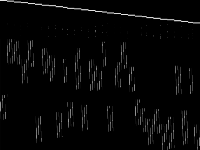 |
 |
 |
 |
| 9 | 50v-10 [MIPLIB] | Serge Bisaillon | Network loading instance. Solved using ug[SCIP/spx], a distributed massively parallel version of SCIP run on 2,000 cores at the HLRN-II super computer facility. | - |  |
 |
 |
 |
| 10 | 8div-n59k10 [MIPLIB] | Sascha Kurz | Projective binary 8-divisible linear block codes A linear block code is called 8-divisible if the weights of its codewords are divisible by 8. It is called projective if there are no duplicate columns in the generator matrix. The possible lengths of 8-divisible linear block codes have been classified except for length n=59, where it is undecided whether such a linear code exists. The possible dimensions satisfy \\(10 \\le k \\le 20\\). Instance 8div_n59_kXX contains the corresponding feasibility problem. Projective binary 8-divisible linear block codes occur as hole configurations of so-called partial solid spreads in finite geometry. Binary 4-divisible linear block codes have applications in physics. | 8div |  |
 |
 |
 |
| 11 | 8div-n59k11 [MIPLIB] | Sascha Kurz | Projective binary 8-divisible linear block codes A linear block code is called 8-divisible if the weights of its codewords are divisible by 8. It is called projective if there are no duplicate columns in the generator matrix. The possible lengths of 8-divisible linear block codes have been classified except for length n=59, where it is undecided whether such a linear code exists. The possible dimensions satisfy \\(10 \\le k \\le 20\\). Instance 8div_n59_kXX contains the corresponding feasibility problem. Projective binary 8-divisible linear block codes occur as hole configurations of so-called partial solid spreads in finite geometry. Binary 4-divisible linear block codes have applications in physics. | 8div |  |
 |
 |
 |
| 12 | 8div-n59k12 [MIPLIB] | Sascha Kurz | Projective binary 8-divisible linear block codes A linear block code is called 8-divisible if the weights of its codewords are divisible by 8. It is called projective if there are no duplicate columns in the generator matrix. The possible lengths of 8-divisible linear block codes have been classified except for length n=59, where it is undecided whether such a linear code exists. The possible dimensions satisfy \\(10 \\le k \\le 20\\). Instance 8div_n59_kXX contains the corresponding feasibility problem. Projective binary 8-divisible linear block codes occur as hole configurations of so-called partial solid spreads in finite geometry. Binary 4-divisible linear block codes have applications in physics. | 8div |  |
 |
 |
 |
| 13 | a1c1s1 [MIPLIB] | M. Vyve, Y. Pochet | Lot sizing instance. Alkis Vazacopoulos reports solving this instance using XPRESS 2006B. | c1s1 |  |
 |
 |
 |
| 14 | a2864-99blp [MIPLIB] | Daniel Heinlein | Clique problems arising from a selection problem of subspaces in the PG(7,2) with different prescribed variables and numerically instable linear programming relaxation. | selofsubspaces |  |
 |
 |
 |
| 15 | a2c1s1 [MIPLIB] | M. Vyve, Y. Pochet | Lot sizing instance. | c1s1 |  |
 |
 |
 |
| 16 | ab51-40-100 [MIPLIB] | MIPLIB submission pool | Imported from the MIPLIB2010 submissions. | ab |  |
 |
 |
 |
| 17 | ab67-40-100 [MIPLIB] | MIPLIB submission pool | Imported from the MIPLIB2010 submissions. | ab |  |
 |
 |
 |
| 18 | ab69-40-100 [MIPLIB] | MIPLIB submission pool | Imported from the MIPLIB2010 submissions. | ab |  |
 |
 |
 |
| 19 | ab71-20-100 [MIPLIB] | MIPLIB submission pool | Imported from the MIPLIB2010 submissions. | ab |  |
 |
 |
 |
| 20 | ab72-40-100 [MIPLIB] | MIPLIB submission pool | Imported from the MIPLIB2010 submissions. | ab |  |
 |
 |
 |
| 21 | academictimetablebig [MIPLIB] | Joshua Friedman | Academic timetabling integer program Reported solved after 1 1/2 days using Gurobi. | - |  |
 |
 |
 |
| 22 | academictimetablesmall [MIPLIB] | Joshua Friedman | Academic timetabling integer program | - |  |
 |
 |
 |
| 23 | acc-tight2 [MIPLIB] | J. Walser | ACC basketball scheduling instance | acc-tight |  |
 |
 |
 |
| 24 | acc-tight4 [MIPLIB] | J. Walser | ACC basketball scheduling instance | acc-tight |  |
 |
 |
 |
| 25 | acc-tight5 [MIPLIB] | J. Walser | ACC basketball scheduling instance | acc-tight |  |
 |
 |
 |
| 26 | adult-max5features [MIPLIB] | Berk Ustun | MIP to create optimized data-driven scoring systems. See: https://github.com/ustunb/miplib2017-slim#miplib2017-slim for a description. | ustun |  |
 |
 |
 |
| 27 | aflow30a [MIPLIB] | T. Achterberg | Arborescence flow problem | aflow |  |
 |
 |
 |
| 28 | aflow40b [MIPLIB] | T. Achterberg | Arborescence flow problem on a graph with 40 nodes and edge density 0.9 | aflow |  |
 |
 |
 |
| 29 | air03 [MIPLIB] | G. Astfalk | Airline crew scheduling set partitioning problem | air |  |
 |
 |
 |
| 30 | air04 [MIPLIB] | G. Astfalk | Airline crew scheduling set partitioning problem | air |  |
 |
 |
 |
| 31 | air05 [MIPLIB] | G. Astfalk | Airline crew scheduling set partitioning problem | air |  |
 |
 |
 |
| 32 | aligninq [MIPLIB] | MIPLIB submission pool | Imported from the MIPLIB2010 submissions. | - |  |
 |
 |
 |
| 33 | allcolor10 [MIPLIB] | Domenico Salvagnin | Prepack optimization instance. | allcolor |  |
 |
 |
 |
| 34 | allcolor58 [MIPLIB] | Domenico Salvagnin | Prepack optimization model. | allcolor |  |
 |
 |
 |
| 35 | amaze22012-03-15i [MIPLIB] | Gleb Belov | These are the instances from MiniZinc Challenges 2012-2016 (see www.minizinc.org), compiled for MIP WITH INDICATOR CONSTRAINTS using the develop branch of MiniZinc and CPLEX 12.7.1 on 30 April 2017. Thus, these instances can only be handled by solvers accepting indicator constraints. For instances compiled with big-M/domain decomposition only, see my previous submission to MIPLIB.To recompile, create a directory MODELS, a list lst12_16.txt of the instances with full paths to mzn/dzn files of each instance per line, and say$> ~/install/libmzn/tests/benchmarking/mzn-test.py -l ../lst12_16.txt -slvPrf MZN-CPLEX -debug 1 -addOption "-timeout 3 -D fIndConstr=true -D fMIPdomains=false" -useJoinedName "-writeModel MODELS_IND/%s.mps" Alternatively, you can compile individual instance as follows: $> mzn-cplex -v -s -G linear -output-time ../challenge_2012_2016/mznc2016_probs/zephyrus/zephyrus.mzn ../challenge_2012_2016/mznc2016_p/zephyrus/14__8__6__3.dzn -a -timeout 3 -D fIndConstr=true -D fMIPdomains=false -writeModel MODELS_IND/challenge_2012_2016mznc2016_probszephyruszephyrusmzn-challenge_2012_2016mznc2016_probszephyrus14__8__6__3dzn.mps | amaze |  |
 |
 |
 |
| 36 | amaze22012-06-28i [MIPLIB] | Gleb Belov | These are the instances from MiniZinc Challenges 2012-2016 (see www.minizinc.org), compiled for MIP WITH INDICATOR CONSTRAINTS using the develop branch of MiniZinc and CPLEX 12.7.1 on 30 April 2017. Thus, these instances can only be handled by solvers accepting indicator constraints. For instances compiled with big-M/domain decomposition only, see my previous submission to MIPLIB.To recompile, create a directory MODELS, a list lst12_16.txt of the instances with full paths to mzn/dzn files of each instance per line, and say$> ~/install/libmzn/tests/benchmarking/mzn-test.py -l ../lst12_16.txt -slvPrf MZN-CPLEX -debug 1 -addOption "-timeout 3 -D fIndConstr=true -D fMIPdomains=false" -useJoinedName "-writeModel MODELS_IND/%s.mps" Alternatively, you can compile individual instance as follows: $> mzn-cplex -v -s -G linear -output-time ../challenge_2012_2016/mznc2016_probs/zephyrus/zephyrus.mzn ../challenge_2012_2016/mznc2016_p/zephyrus/14__8__6__3.dzn -a -timeout 3 -D fIndConstr=true -D fMIPdomains=false -writeModel MODELS_IND/challenge_2012_2016mznc2016_probszephyruszephyrusmzn-challenge_2012_2016mznc2016_probszephyrus14__8__6__3dzn.mps | amaze |  |
 |
 |
 |
| 37 | amaze22012-07-04i [MIPLIB] | Gleb Belov | These are the instances from MiniZinc Challenges 2012-2016 (see www.minizinc.org), compiled for MIP WITH INDICATOR CONSTRAINTS using the develop branch of MiniZinc and CPLEX 12.7.1 on 30 April 2017. Thus, these instances can only be handled by solvers accepting indicator constraints. For instances compiled with big-M/domain decomposition only, see my previous submission to MIPLIB.To recompile, create a directory MODELS, a list lst12_16.txt of the instances with full paths to mzn/dzn files of each instance per line, and say$> ~/install/libmzn/tests/benchmarking/mzn-test.py -l ../lst12_16.txt -slvPrf MZN-CPLEX -debug 1 -addOption "-timeout 3 -D fIndConstr=true -D fMIPdomains=false" -useJoinedName "-writeModel MODELS_IND/%s.mps" Alternatively, you can compile individual instance as follows: $> mzn-cplex -v -s -G linear -output-time ../challenge_2012_2016/mznc2016_probs/zephyrus/zephyrus.mzn ../challenge_2012_2016/mznc2016_p/zephyrus/14__8__6__3.dzn -a -timeout 3 -D fIndConstr=true -D fMIPdomains=false -writeModel MODELS_IND/challenge_2012_2016mznc2016_probszephyruszephyrusmzn-challenge_2012_2016mznc2016_probszephyrus14__8__6__3dzn.mps | amaze |  |
 |
 |
 |
| 38 | app1-1 [MIPLIB] | Emilie Danna | The archive contains 5 instances coming from 3 applications.app1 is interesting because the continuous variables (w) drive the model.Some solvers have numerical problems on app2 models: some solutions found violate the constraints by a small amount.app2 and app3 models are easy to solve. But they don't solve fast enough for the time limit I have in mind so I'd like to propose them for inclusion in MIPLIB. | app |  |
 |
 |
 |
| 39 | app1-2 [MIPLIB] | Emilie Danna | Undisclosed industrial application from Google | app |  |
 |
 |
 |
| 40 | app2-1 [MIPLIB] | Emilie Danna | The archive contains 5 instances coming from 3 applications.app1 is interesting because the continuous variables (w) drive the model.Some solvers have numerical problems on app2 models: some solutions found violate the constraints by a small amount.app2 and app3 models are easy to solve. But they don't solve fast enough for the time limit I have in mind so I'd like to propose them for inclusion in MIPLIB. | app |  |
 |
 |
 |
| 41 | app2-2 [MIPLIB] | Emilie Danna | The archive contains 5 instances coming from 3 applications.app1 is interesting because the continuous variables (w) drive the model.Some solvers have numerical problems on app2 models: some solutions found violate the constraints by a small amount.app2 and app3 models are easy to solve. But they don't solve fast enough for the time limit I have in mind so I'd like to propose them for inclusion in MIPLIB. | app |  |
 |
 |
 |
| 42 | app3 [MIPLIB] | Emilie Danna | The archive contains 5 instances coming from 3 applications.app1 is interesting because the continuous variables (w) drive the model.Some solvers have numerical problems on app2 models: some solutions found violate the constraints by a small amount.app2 and app3 models are easy to solve. But they don't solve fast enough for the time limit I have in mind so I'd like to propose them for inclusion in MIPLIB. | app |  |
 |
 |
 |
| 43 | arki001 [MIPLIB] | MIPLIB submission pool | Imported from the MIPLIB2010 submissions. | - |  |
 |
 |
 |
| 44 | assign1-10-4 [MIPLIB] | Robert Fourer | Imported from the MIPLIB2010 submissions. | assign1 | 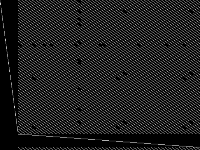 |
 |
 |
 |
| 45 | assign1-5-8 [MIPLIB] | Robert Fourer | Imported from the MIPLIB2010 submissions. | assign1 |  |
 |
 |
 |
| 46 | atlanta-ip [MIPLIB] | E-Plus, D. Bienstock, A. Bley, R. Wessäly | Min-cost network dimensioning problems with a finite set of link capacities for each bidirected link, unsplittable shortest path routing, path restoration for single node failures, and routing path length restrictions | - |  |
 |
 |
 |
| 47 | atm20-100 [MIPLIB] | Matthew Galati | ATM cash management problem. Solved with COIN/DIP in 1066 sec. (1 thread) / 259 sec. (8 threads) in June 2011. | - |  |
 |
 |
 |
| 48 | australia-abs-cta [MIPLIB] | Jordi Castro | Set of MILP instances of the CTA (Controlled Tabular Adjustment) problem, a method to protect statistical tabular data, belonging to the field of SDC (Statistical Disclosure Control). Raw data of instances are real or pseudo-real, provided by several National Statistical Agencies. We generated the CTA problem for these data. | cta |  |
 |
 |
 |
| 49 | b-ball [MIPLIB] | Christopher Cullenbine | It is a very simple problem, yet CPLEX will not close the MIPGAP. CPLEX seems to get stuck in a loop or something. | - |  |
 |
 |
 |
| 50 | b2c1s1 [MIPLIB] | M. Vyve, Y. Pochet | Lot sizing instance. Solved by Gurobi 4.6.1 (12 threads) in 116575 seconds (January 2012). | c1s1 |  |
 |
 |
 |
| 51 | bab1 [MIPLIB] | Elmar Swarat, Laura Traverso, Julia Buwaya | Integrated vehicle routing and crew scheduling of toll inspectors on German highways | bab |  |
 |
 |
 |
| 52 | bab2 [MIPLIB] | Elmar Swarat | Vehicle Routing with profits and an integrated crew scheduling formulated by two coupled multi-commodity flow problems. | bab |  |
 |
 |
 |
| 53 | bab3 [MIPLIB] | Elmar Swarat | Vehicle routing with profits and an integrated crew scheduling problem formulated by two coupled multi-commodity flow problems | bab | 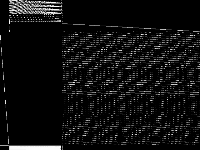 |
 |
 |
 |
| 54 | bab5 [MIPLIB] | Elmar Swarat | Vehicle routing with profits and an integrated crew scheduling problem formulated by two coupled multi-commodity flow problems | bab |  |
 |
 |
 |
| 55 | bab6 [MIPLIB] | Elmar Swarat | Vehicle routing with profit and an integrated crew scheduling like bab2 - bab5. Instances differ in multi-commodity-flow formulation (path oder arc formulation) or time discretization and some are quite easy to solve while others (bab2, bab3 and bab6) are very difficult. | bab | 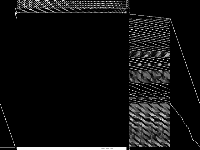 |
 |
 |
 |
| 56 | bc1 [MIPLIB] | MIPLIB submission pool | Imported from the MIPLIB2010 submissions. | bc |  |
 |
 |
 |
| 57 | beasleyC1 [MIPLIB] | F. Ortega, L. Wolsey | Fixed cost network flow problems | beasley |  |
 |
 |
 |
| 58 | beasleyC2 [MIPLIB] | F. Ortega, L. Wolsey | Fixed cost network flow problems | beasley |  |
 |
 |
 |
| 59 | beasleyC3 [MIPLIB] | F. Ortega, L. Wolsey | Fixed cost network flow problems | beasley |  |
 |
 |
 |
| 60 | beavma [MIPLIB] | MIPLIB submission pool | Imported from the MIPLIB2010 submissions. | - |  |
 |
 |
 |
| 61 | berlin [MIPLIB] | MIPLIB submission pool | Imported from the MIPLIB2010 submissions. | - |  |
 |
 |
 |
| 62 | berlin_5_8_0 [MIPLIB] | G. Klau | Railway optimization problems. The problem was solved using CPLEX 12.3 on a 32 core Sun Galaxy 4600 machine, equipped with eight Quad-Core AMD Opteron 8384 processors at 2.7 GHz and 512 GB RAM. It took approximately 9 hours. The problem was solved using CPLEX 12.4 in about 55 minutes (May 2014). | - |  |
 |
 |
 |
| 63 | bg512142 [MIPLIB] | A. Miller | Multilevel lot-sizing instance. | - |  |
 |
 |
 |
| 64 | bharat [MIPLIB] | Gavin Goodall | MILP for optimizing fuel use at a forward operating base | - |  |
 |
 |
 |
| 65 | biella1 [MIPLIB] | Double-Click SAS | Crew scheduling instance | - |  |
 |
 |
 |
| 66 | bienst1 [MIPLIB] | MIPLIB submission pool | Imported from the MIPLIB2010 submissions. | - |  |
 |
 |
 |
| 67 | bienst2 [MIPLIB] | H. Mittelmann | Relaxed version of problem bienst | - |  |
 |
 |
 |
| 68 | binkar10_1 [MIPLIB] | H. Mittelmann | Relaxed version of problem binkar10 | - |  |
 |
 |
 |
| 69 | blend2 [MIPLIB] | MIPLIB submission pool | Imported from the MIPLIB2010 submissions. | - |  |
 |
 |
 |
| 70 | blp-ar98 [MIPLIB] | M. Lübbecke | Railway line planning instance | blp |  |
 |
 |
 |
| 71 | blp-ic97 [MIPLIB] | M. Lübbecke | Railway line planning instance. Solved using CPLEX 12.3 (12 threads) on an Intel Xeon X5650 @ 2.67GHz, 12MB cache, 24GB RAM in 4947.5 sec.\xa0Solved using Gurobi 4.6.1 (12 threads) in 1867.9 sec. | blp |  |
 |
 |
 |
| 72 | blp-ic98 [MIPLIB] | M. Lübbecke | Railway line planning instance | blp |  |
 |
 |
 |
| 73 | blp-ir98 [MIPLIB] | M. Lübbecke | Railway line planning instance | blp |  |
 |
 |
 |
| 74 | bmocbd [MIPLIB] | Sean MacDermant | BMO CBD | bmocbd |  |
 |
 |
 |
| 75 | bmocbd2 [MIPLIB] | Sean MacDermant | BMOCBD2 | bmocbd |  |
 |
 |
 |
| 76 | bmoipr2 [MIPLIB] | Sean MacDermant | BMO IPR2 Logistics | - |  |
 |
 |
 |
| 77 | bnatt400 [MIPLIB] | Tatsuya Akutsu | Model to identify a singleton attractor in a Boolean network, applications in computational systems biology. Solved by SCIP 3.0 with SoPlex 1.7.0 in half an hour. A Intel Core2 Extreme CPU X9659 @3.00GHz was used. | bnatt |  |
 |
 |
 |
| 78 | bnatt500 [MIPLIB] | Tatsuya Akutsu | We are submitting ILP data for identification of a singletonattractor in a Boolean newtork, which is a well-known problemin computational systems biology.This problem is known to be NP-hard and we developed a methodto transform an instance of the problem to an integer linearprogram (ILP).We used ILPs from artificially generated Boolean networks ofindegree 3.The size of the networks are: 350, 400, 500.Even for the case of 500, we could not find a solution within6 hours using CPLEX 11.2 on a PC with XEON 5470 3.33GHz CPU.(This ILP corresponds to the case of size=350.File format is (zipped) CPLEX LP format.)The details of the method appeared in:T. Akutsu, M. Hayashida and T. Tamura, Integer programming-basedmethods for attractor detection and control of Boolean networks,Proc. The combined 48th IEEE Conference on Decision and Controland 28th Chinese Control Conference (IEEE CDC/CCC 2009), 5610-5617, 2009. | bnatt |  |
 |
 |
 |
| 79 | bppc4-08 [MIPLIB] | Manuel Iori | The models that we attach solve the "bar-relaxation", also known as the "Bin Packing Problem with Contiguity" or the "P||Cmax with contiguity". This is one of the most interesting relaxations for two dimensional cutting and packing problems. Its solution by means of an ILP software is the bottleneck of the primal decomposition methods that we attempted in the paper cited below. In detail, the files correspond to model (12)-(15) in the paper, applied to the instances of the Classes 4, 6 and 8 by Martello and Vigo (Management Science, 1998). | bppc |  |
 |
 |
 |
| 80 | bppc6-02 [MIPLIB] | Manuel Iori | The models that we attach solve the "bar-relaxation", also known as the "Bin Packing Problem with Contiguity" or the "P||Cmax with contiguity". This is one of the most interesting relaxations for two dimensional cutting and packing problems. Its solution by means of an ILP software is the bottleneck of the primal decomposition methods that we attempted in the paper cited below. In detail, the files correspond to model (12)-(15) in the paper, applied to the instances of the Classes 4, 6 and 8 by Martello and Vigo (Management Science, 1998). | bppc |  |
 |
 |
 |
| 81 | bppc6-06 [MIPLIB] | Manuel Iori | The models that we attach solve the "bar-relaxation", also known as the "Bin Packing Problem with Contiguity" or the "P||Cmax with contiguity". This is one of the most interesting relaxations for two dimensional cutting and packing problems. Its solution by means of an ILP software is the bottleneck of the primal decomposition methods that we attempted in the paper cited below. In detail, the files correspond to model (12)-(15) in the paper, applied to the instances of the Classes 4, 6 and 8 by Martello and Vigo (Management Science, 1998). | bppc |  |
 |
 |
 |
| 82 | bppc8-02 [MIPLIB] | Manuel Iori | The models that we attach solve the "bar-relaxation", also known as the "Bin Packing Problem with Contiguity" or the "P||Cmax with contiguity". This is one of the most interesting relaxations for two dimensional cutting and packing problems. Its solution by means of an ILP software is the bottleneck of the primal decomposition methods that we attempted in the paper cited below. In detail, the files correspond to model (12)-(15) in the paper, applied to the instances of the Classes 4, 6 and 8 by Martello and Vigo (Management Science, 1998). | bppc |  |
 |
 |
 |
| 83 | bppc8-09 [MIPLIB] | Manuel Iori | The models that we attach solve the "bar-relaxation", also known as the "Bin Packing Problem with Contiguity" or the "P||Cmax with contiguity". This is one of the most interesting relaxations for two dimensional cutting and packing problems. Its solution by means of an ILP software is the bottleneck of the primal decomposition methods that we attempted in the paper cited below. In detail, the files correspond to model (12)-(15) in the paper, applied to the instances of the Classes 4, 6 and 8 by Martello and Vigo (Management Science, 1998). | bppc |  |
 |
 |
 |
| 84 | brasil [MIPLIB] | MIPLIB submission pool | Imported from the MIPLIB2010 submissions. | - |  |
 |
 |
 |
| 85 | brazil3 [MIPLIB] | George Fonseca | Educational timetabling problems from several real schools/universities around the world. These instances were originally expressed in the xhstt file format [1] and formulated as Integer Programming models as described at [2]. | timetabling |  |
 |
 |
 |
| 86 | breastcancer-regularized [MIPLIB] | Berk Ustun | MIP to create optimized data-driven scoring systems. See: https://github.com/ustunb/miplib2017-slim#miplib2017-slim for a description. | ustun |  |
 |
 |
 |
| 87 | bts4-cta [MIPLIB] | Jordi Castro | Set of MILP instances of the CTA (Controlled Tabular Adjustment) problem, a method to protect statistical tabular data, belonging to the field of SDC (Statistical Disclosure Control). Raw data of instances are real or pseudo-real, provided by several National Statistical Agencies. We generated the CTA problem for these data. | cta | 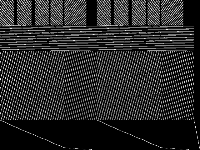 |
 |
 |
 |
| 88 | buildingenergy [MIPLIB] | Kristopher A. Pruitt | Model to determine the minimum cost design and dispatch of a distributed generation system for a commercial building. First solved by Matteo Fischetti and Michele Monaci using a search procedure built on top of Cplex 12.2 (February 2012). Solved by Gurobi 4.6.1 (12 threads) in 1053 seconds (February 2012). | - |  |
 |
 |
 |
| 89 | cap6000 [MIPLIB] | MIPLIB submission pool | Imported from the MIPLIB2010 submissions. | - |  |
 |
 |
 |
| 90 | cbs-cta [MIPLIB] | Jordi Castro | Set of MILP instances of the CTA (Controlled Tabular Adjustment) problem, a method to protect statistical tabular data, belonging to the field of SDC (Statistical Disclosure Control). Raw data of instances are real or pseudo-real, provided by several National Statistical Agencies. We generated the CTA problem for these data. | cta |  |
 |
 |
 |
| 91 | cdc7-4-3-2 [MIPLIB] | Sascha Kurz | Codes for Networkcoding A constant dimension code with parameters n, k, d and q is a collection of k-dimensional subspaces of the n-dimensional vector space \\(GF(q)^n\\) over a finite field with q elements, called codewords, such that the dimension of the intersection of each pair of different k-dimensional subspaces is at most \\(k-d/2\\). Let \\(A_q(n,d;k)\\) denote the maximum number of codewords. For instance cdc6-4-3-2 \\(A_2(6,4;3)=77\\) is known , while \\(333 \\le A_2(7,4;3) \\le 381\\) for instance cdc7-4-3-2 are the tightest known bounds, see e.g. . A code of size 381 would correspond to a putative binary q-analog of the Fano plane (finite projective plane of order 2 with 7 points and lines). More bounds are available at http://subspacecodes.uni-bayreuth.de. | - |  |
 |
 |
 |
| 92 | cdma [MIPLIB] | Serge Bisaillon | 3G wireless multiplexing communication model | - |  |
 |
 |
 |
| 93 | chromaticindex1024-7 [MIPLIB] | Pierre Le Bodic | Simple edge-coloring model on chains of Petersen-like subgraphs, designed to fool MIP solvers into producing very large Branch-and-Bound trees. | chromaticindex |  |
 |
 |
 |
| 94 | chromaticindex128-5 [MIPLIB] | Pierre Le Bodic | Simple edge-coloring model on chains of Petersen-like subgraphs, designed to fool MIP solvers into producing very large Branch-and-Bound trees. | chromaticindex |  |
 |
 |
 |
| 95 | chromaticindex256-8 [MIPLIB] | Pierre Le Bodic | Simple edge-coloring model on chains of Petersen-like subgraphs, designed to fool MIP solvers into producing very large Branch-and-Bound trees. | chromaticindex |  |
 |
 |
 |
| 96 | chromaticindex32-8 [MIPLIB] | Pierre Le Bodic | Simple edge-coloring model on chains of Petersen-like subgraphs, designed to fool MIP solvers into producing very large Branch-and-Bound trees. | chromaticindex |  |
 |
 |
 |
| 97 | chromaticindex512-7 [MIPLIB] | Pierre Le Bodic | Simple edge-coloring model on chains of Petersen-like subgraphs, designed to fool MIP solvers into producing very large Branch-and-Bound trees. | chromaticindex |  |
 |
 |
 |
| 98 | ci-s4 [MIPLIB] | Alexandra M. Newman | minimizing violence in a counterinsurgency model (lot os regressions built in) | - |  |
 |
 |
 |
| 99 | circ10-3 [MIPLIB] | M. Winkler | Instance from the 2010 SAT conference pseudo-Boolean competition | - | 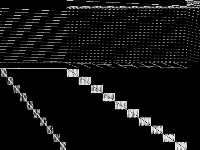 |
 |
 |
 |
| 100 | cmflsp40-24-10-7 [MIPLIB] | Andrea Arias | Capacitated Multi-Family Lot-Sizing Problem | cmflsp |  |
 |
 |
 |
| 101 | cmflsp40-36-2-10 [MIPLIB] | Andrea Arias | Capacitated Multi-Family Lot-Sizing Problem | cmflsp |  |
 |
 |
 |
| 102 | cmflsp50-24-10-4 [MIPLIB] | Andrea Arias | Capacitated Multi-Family Lot-Sizing Problem | cmflsp |  |
 |
 |
 |
| 103 | cmflsp50-24-8-8 [MIPLIB] | Andrea Arias | Capacitated Multi-Family Lot-Sizing Problem | cmflsp |  |
 |
 |
 |
| 104 | cmflsp60-36-2-6 [MIPLIB] | Andrea Arias | Capacitated Multi-Family Lot-Sizing Problem | cmflsp |  |
 |
 |
 |
| 105 | CMS750_4 [MIPLIB] | MIPLIB submission pool | Imported from the MIPLIB2010 submissions. | - |  |
 |
 |
 |
| 106 | co-100 [MIPLIB] | Axel Werner | Model from optical access network planning | - |  |
 |
 |
 |
| 107 | cod105 [MIPLIB] | MIPLIB submission pool | Imported from the MIPLIB2010 submissions. | - |  |
 |
 |
 |
| 108 | comp07-2idx [MIPLIB] | Matias Sørensen | Instances comp01-21 of curriculum based course timetabling from the International Timetabling Competition 2007. These are time-assignment models (Stage I of the decomposed model), which are smaller than the full model, but still hard to solve. | coursetimetabling |  |
 |
 |
 |
| 109 | comp08-2idx [MIPLIB] | Matias Sørensen | Instances comp01-21 of curriculum based course timetabling from the International Timetabling Competition 2007. These are time-assignment models (Stage I of the decomposed model), which are smaller than the full model, but still hard to solve. | coursetimetabling |  |
 |
 |
 |
| 110 | comp12-2idx [MIPLIB] | Matias Sørensen | Instances comp01-21 of curriculum based course timetabling from the International Timetabling Competition 2007. These are time-assignment models (Stage I of the decomposed model), which are smaller than the full model, but still hard to solve. | coursetimetabling |  |
 |
 |
 |
| 111 | comp16-3idx [MIPLIB] | Matias Sørensen | Instances comp01-21 of curriculum based course timetabling from the International Timetabling Competition 2007. These are the full models using three-index decision variables. | coursetimetabling |  |
 |
 |
 |
| 112 | comp21-2idx [MIPLIB] | Matias Sørensen | Instances comp01-21 of curriculum based course timetabling from the International Timetabling Competition 2007. These are time-assignment models (Stage I of the decomposed model), which are smaller than the full model, but still hard to solve. | coursetimetabling |  |
 |
 |
 |
| 113 | control20-5-10-5 [MIPLIB] | Qie He | Optimal control of a discrete-time switched system model Numerically challenging. Different solvers report this instance as solved to optimality, infeasible, or unbounded. | control |  |
 |
 |
 |
| 114 | control30-3-2-3 [MIPLIB] | Qie He | Optimal control of a discrete-time switched system model | control |  |
 |
 |
 |
| 115 | control30-5-10-4 [MIPLIB] | Qie He | Optimal control of a discrete-time switched system model | control |  |
 |
 |
 |
| 116 | core2536-691 [MIPLIB] | A. Caprara, M. Fischetti, P. Toth | Set covering instance coming from Italian railway models | core | 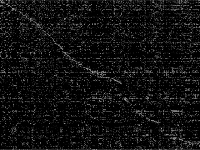 |
 |
 |
 |
| 117 | core2586-950 [MIPLIB] | A. Caprara, M. Fischetti, P. Toth | Set covering instance coming from Italian railway models | core |  |
 |
 |
 |
| 118 | core4284-1064 [MIPLIB] | A. Caprara, M. Fischetti, P. Toth | Set covering instance coming from Italian railway models | core |  |
 |
 |
 |
| 119 | core4872-1529 [MIPLIB] | A. Caprara, M. Fischetti, P. Toth | Set covering instance coming from Italian railway models | core |  |
 |
 |
 |
| 120 | cost266-UUE [MIPLIB] | MIPLIB submission pool | Imported from the MIPLIB2010 submissions. | network_design |  |
 |
 |
 |
| 121 | cryptanalysiskb128n5obj14 [MIPLIB] | Gleb Belov | Linearized Constraint Programming models of the MiniZinc Challenges 2012-2016. I should be able to produce versions with indicator constraints supported by Gurobi and CPLEX, however don't know if you can use them and if there is a standard format. These MPS were produced by Gurobi 7.0.2 using the MiniZinc develop branch on eb536656062ca13325a96b5d0881742c7d0e3c38 | cryptanalysis |  |
 |
 |
 |
| 122 | cryptanalysiskb128n5obj16 [MIPLIB] | Gleb Belov | Linearized Constraint Programming models of the MiniZinc Challenges 2012-2016. I should be able to produce versions with indicator constraints supported by Gurobi and CPLEX, however don't know if you can use them and if there is a standard format. These MPS were produced by Gurobi 7.0.2 using the MiniZinc develop branch on eb536656062ca13325a96b5d0881742c7d0e3c38 | cryptanalysis |  |
 |
 |
 |
| 123 | csched007 [MIPLIB] | Tallys Yunes | Cumulative scheduling problem instance | csched |  |
 |
 |
 |
| 124 | csched008 [MIPLIB] | Tallys Yunes | Cumulative scheduling problem instance | csched |  |
 |
 |
 |
| 125 | csched010 [MIPLIB] | Tallys Yunes | Cumulative scheduling problem instance | csched |  |
 |
 |
 |
| 126 | cvrpa-n64k9vrpi [MIPLIB] | Gleb Belov | These are the instances from MiniZinc Challenges 2012-2016 (see www.minizinc.org), compiled for MIP WITH INDICATOR CONSTRAINTS using the develop branch of MiniZinc and CPLEX 12.7.1 on 30 April 2017. Thus, these instances can only be handled by solvers accepting indicator constraints. For instances compiled with big-M/domain decomposition only, see my previous submission to MIPLIB.To recompile, create a directory MODELS, a list lst12_16.txt of the instances with full paths to mzn/dzn files of each instance per line, and say$> ~/install/libmzn/tests/benchmarking/mzn-test.py -l ../lst12_16.txt -slvPrf MZN-CPLEX -debug 1 -addOption "-timeout 3 -D fIndConstr=true -D fMIPdomains=false" -useJoinedName "-writeModel MODELS_IND/%s.mps" Alternatively, you can compile individual instance as follows: $> mzn-cplex -v -s -G linear -output-time ../challenge_2012_2016/mznc2016_probs/zephyrus/zephyrus.mzn ../challenge_2012_2016/mznc2016_p/zephyrus/14__8__6__3.dzn -a -timeout 3 -D fIndConstr=true -D fMIPdomains=false -writeModel MODELS_IND/challenge_2012_2016mznc2016_probszephyruszephyrusmzn-challenge_2012_2016mznc2016_probszephyrus14__8__6__3dzn.mps | vrp |  |
 |
 |
 |
| 127 | cvrpb-n45k5vrpi [MIPLIB] | Gleb Belov | These are the instances from MiniZinc Challenges 2012-2016 (see www.minizinc.org), compiled for MIP WITH INDICATOR CONSTRAINTS using the develop branch of MiniZinc and CPLEX 12.7.1 on 30 April 2017. Thus, these instances can only be handled by solvers accepting indicator constraints. For instances compiled with big-M/domain decomposition only, see my previous submission to MIPLIB.To recompile, create a directory MODELS, a list lst12_16.txt of the instances with full paths to mzn/dzn files of each instance per line, and say$> ~/install/libmzn/tests/benchmarking/mzn-test.py -l ../lst12_16.txt -slvPrf MZN-CPLEX -debug 1 -addOption "-timeout 3 -D fIndConstr=true -D fMIPdomains=false" -useJoinedName "-writeModel MODELS_IND/%s.mps" Alternatively, you can compile individual instance as follows: $> mzn-cplex -v -s -G linear -output-time ../challenge_2012_2016/mznc2016_probs/zephyrus/zephyrus.mzn ../challenge_2012_2016/mznc2016_p/zephyrus/14__8__6__3.dzn -a -timeout 3 -D fIndConstr=true -D fMIPdomains=false -writeModel MODELS_IND/challenge_2012_2016mznc2016_probszephyruszephyrusmzn-challenge_2012_2016mznc2016_probszephyrus14__8__6__3dzn.mps | pb- |  |
 |
 |
 |
| 128 | cvrpp-n16k8vrpi [MIPLIB] | Gleb Belov | These are the instances from MiniZinc Challenges 2012-2016 (see www.minizinc.org), compiled for MIP WITH INDICATOR CONSTRAINTS using the develop branch of MiniZinc and CPLEX 12.7.1 on 30 April 2017. Thus, these instances can only be handled by solvers accepting indicator constraints. For instances compiled with big-M/domain decomposition only, see my previous submission to MIPLIB.To recompile, create a directory MODELS, a list lst12_16.txt of the instances with full paths to mzn/dzn files of each instance per line, and say$> ~/install/libmzn/tests/benchmarking/mzn-test.py -l ../lst12_16.txt -slvPrf MZN-CPLEX -debug 1 -addOption "-timeout 3 -D fIndConstr=true -D fMIPdomains=false" -useJoinedName "-writeModel MODELS_IND/%s.mps" Alternatively, you can compile individual instance as follows: $> mzn-cplex -v -s -G linear -output-time ../challenge_2012_2016/mznc2016_probs/zephyrus/zephyrus.mzn ../challenge_2012_2016/mznc2016_p/zephyrus/14__8__6__3.dzn -a -timeout 3 -D fIndConstr=true -D fMIPdomains=false -writeModel MODELS_IND/challenge_2012_2016mznc2016_probszephyruszephyrusmzn-challenge_2012_2016mznc2016_probszephyrus14__8__6__3dzn.mps | vrp |  |
 |
 |
 |
| 129 | cvrpsimple2i [MIPLIB] | Gleb Belov | These are the instances from MiniZinc Challenges 2012-2016 (see www.minizinc.org), compiled for MIP WITH INDICATOR CONSTRAINTS using the develop branch of MiniZinc and CPLEX 12.7.1 on 30 April 2017. Thus, these instances can only be handled by solvers accepting indicator constraints. For instances compiled with big-M/domain decomposition only, see my previous submission to MIPLIB.To recompile, create a directory MODELS, a list lst12_16.txt of the instances with full paths to mzn/dzn files of each instance per line, and say$> ~/install/libmzn/tests/benchmarking/mzn-test.py -l ../lst12_16.txt -slvPrf MZN-CPLEX -debug 1 -addOption "-timeout 3 -D fIndConstr=true -D fMIPdomains=false" -useJoinedName "-writeModel MODELS_IND/%s.mps" Alternatively, you can compile individual instance as follows: $> mzn-cplex -v -s -G linear -output-time ../challenge_2012_2016/mznc2016_probs/zephyrus/zephyrus.mzn ../challenge_2012_2016/mznc2016_p/zephyrus/14__8__6__3.dzn -a -timeout 3 -D fIndConstr=true -D fMIPdomains=false -writeModel MODELS_IND/challenge_2012_2016mznc2016_probszephyruszephyrusmzn-challenge_2012_2016mznc2016_probszephyrus14__8__6__3dzn.mps | vrp |  |
 |
 |
 |
| 130 | cvs08r139-94 [MIPLIB] | Michael Bastubbe | Capacitated vertex separator problem on randomly generated hypergraph with 139 vertices and 94 hyperedges in at most 8 components each including at most 21 vertices. | cvs |  |
 |
 |
 |
| 131 | cvs16r106-72 [MIPLIB] | Michael Bastubbe | Capacitated vertex separator problem on randomly generated hypergraph with 106 vertices and 72 hyperedges in at most 16 components each including at most 7 vertices. | cvs | 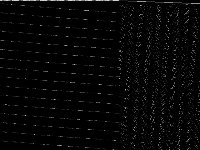 |
 |
 |
 |
| 132 | cvs16r128-89 [MIPLIB] | Michael Bastubbe | Capacitated vertex separator problem on randomly generated hypergraph with 128 vertices and 89 hyperedges in at most 16 components each including at most 8 vertices. solved with default GCG/Soplex in about 2000 seconds. | cvs | 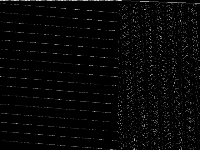 |
 |
 |
 |
| 133 | cvs16r70-62 [MIPLIB] | Michael Bastubbe | Capacitated vertex separator problem on randomly generated hypergraph with 70 vertices and 62 hyperedges in at most 16 components each including at most 5 vertices. | cvs | 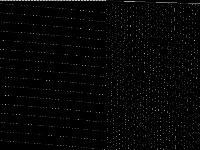 |
 |
 |
 |
| 134 | cvs16r89-60 [MIPLIB] | Michael Bastubbe | Capacitated vertex separator problem on randomly generated hypergraph with 89 vertices and 60 hyperedges in at most 16 components each including at most 6 vertices. | cvs | 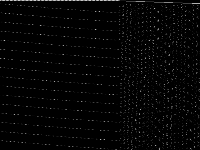 |
 |
 |
 |
| 135 | d20200 [MIPLIB] | COR@L test set | Instance coming from the COR@L test set with unknown origin | - | 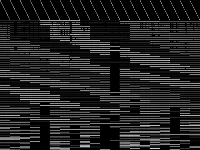 |
 |
 |
 |
| 136 | dale-cta [MIPLIB] | Jordi Castro | Set of MILP instances of the CTA (Controlled Tabular Adjustment) problem, a method to protect statistical tabular data, belonging to the field of SDC (Statistical Disclosure Control). Raw data of instances are real or pseudo-real, provided by several National Statistical Agencies. We generated the CTA problem for these data. | cta |  |
 |
 |
 |
| 137 | dano3_3 [MIPLIB] | Daniel Bienstock | Telecommunications applications | dano |  |
 |
 |
 |
| 138 | dano3_5 [MIPLIB] | Daniel Bienstock | Telecommunications applications | dano | 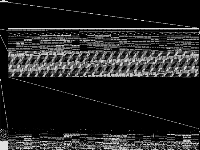 |
 |
 |
 |
| 139 | dano3mip [MIPLIB] | Daniel Bienstock | Telecommunications applications | dano | 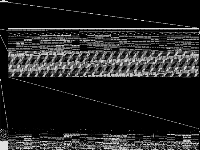 |
 |
 |
 |
| 140 | danoint [MIPLIB] | Daniel Bienstock | Telecommunications applications | dano |  |
 |
 |
 |
| 141 | datt256 [MIPLIB] | Jon Dattorro | Model to find solution to the ``Eternity II'' puzzle | - |  |
 |
 |
 |
| 142 | dc1c [MIPLIB] | Double-Click SAS | Crew scheduling instance. This problem was solved on ISM supercomputer Fujitsu PRIMERGY RX200S5 (http://www.ism.ac.jp/computer_system/eng/sc/index.html) by ParaSCIP in approximately 1100 hours with 14 times restarted 15 jobs. | - | 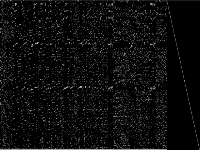 |
 |
 |
 |
| 143 | dc1l [MIPLIB] | Double-Click SAS | Crew scheduling instance | - |  |
 |
 |
 |
| 144 | dcmulti [MIPLIB] | MIPLIB submission pool | Imported from the MIPLIB2010 submissions. | - |  |
 |
 |
 |
| 145 | decomp1 [MIPLIB] | Martin Berger | Finds special structures in MIPs. | - |  |
 |
 |
 |
| 146 | decomp2 [MIPLIB] | Martin Berger | Finds special structures in MIPs. | - |  |
 |
 |
 |
| 147 | dell [MIPLIB] | MIPLIB submission pool | Imported from the MIPLIB2010 submissions. | - |  |
 |
 |
 |
| 148 | dfn-bwin-DBE [MIPLIB] | MIPLIB submission pool | Imported from the MIPLIB2010 submissions. | network_design |  |
 |
 |
 |
| 149 | dg012142 [MIPLIB] | A. Miller | Multilevel lot-sizing instance This instance was solved by using 256 cores of the distributed-memory supercomputer Fujitsu PRIMERGY RX200S5 (http://www.ism.ac.jp/computer_system/eng/sc/super.html). The problem was solved by ParaSCIP in approximately 43 hours. | - |  |
 |
 |
 |
| 150 | diameterc-mstc-v20a190d5i [MIPLIB] | Gleb Belov | These are the instances from MiniZinc Challenges 2012-2016 (see www.minizinc.org), compiled for MIP WITH INDICATOR CONSTRAINTS using the develop branch of MiniZinc and CPLEX 12.7.1 on 30 April 2017. Thus, these instances can only be handled by solvers accepting indicator constraints. For instances compiled with big-M/domain decomposition only, see my previous submission to MIPLIB.To recompile, create a directory MODELS, a list lst12_16.txt of the instances with full paths to mzn/dzn files of each instance per line, and say$> ~/install/libmzn/tests/benchmarking/mzn-test.py -l ../lst12_16.txt -slvPrf MZN-CPLEX -debug 1 -addOption "-timeout 3 -D fIndConstr=true -D fMIPdomains=false" -useJoinedName "-writeModel MODELS_IND/%s.mps" Alternatively, you can compile individual instance as follows: $> mzn-cplex -v -s -G linear -output-time ../challenge_2012_2016/mznc2016_probs/zephyrus/zephyrus.mzn ../challenge_2012_2016/mznc2016_p/zephyrus/14__8__6__3.dzn -a -timeout 3 -D fIndConstr=true -D fMIPdomains=false -writeModel MODELS_IND/challenge_2012_2016mznc2016_probszephyruszephyrusmzn-challenge_2012_2016mznc2016_probszephyrus14__8__6__3dzn.mps | diameterc |  |
 |
 |
 |
| 151 | diameterc-msts-v40a100d5i [MIPLIB] | Gleb Belov | These are the instances from MiniZinc Challenges 2012-2016 (see www.minizinc.org), compiled for MIP WITH INDICATOR CONSTRAINTS using the develop branch of MiniZinc and CPLEX 12.7.1 on 30 April 2017. Thus, these instances can only be handled by solvers accepting indicator constraints. For instances compiled with big-M/domain decomposition only, see my previous submission to MIPLIB.To recompile, create a directory MODELS, a list lst12_16.txt of the instances with full paths to mzn/dzn files of each instance per line, and say$> ~/install/libmzn/tests/benchmarking/mzn-test.py -l ../lst12_16.txt -slvPrf MZN-CPLEX -debug 1 -addOption "-timeout 3 -D fIndConstr=true -D fMIPdomains=false" -useJoinedName "-writeModel MODELS_IND/%s.mps" Alternatively, you can compile individual instance as follows: $> mzn-cplex -v -s -G linear -output-time ../challenge_2012_2016/mznc2016_probs/zephyrus/zephyrus.mzn ../challenge_2012_2016/mznc2016_p/zephyrus/14__8__6__3.dzn -a -timeout 3 -D fIndConstr=true -D fMIPdomains=false -writeModel MODELS_IND/challenge_2012_2016mznc2016_probszephyruszephyrusmzn-challenge_2012_2016mznc2016_probszephyrus14__8__6__3dzn.mps | diameterc |  |
 |
 |
 |
| 152 | disctom [MIPLIB] | MIPLIB submission pool | Imported from the MIPLIB2010 submissions. | - |  |
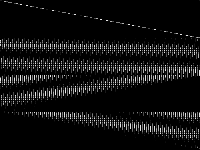 |
 |
 |
| 153 | dolom1 [MIPLIB] | Double-Click SAS | Crew scheduling instance. Solved with ParaSCIP with SCIP 3.0.1 linked to CPLEX 12.5 as an LP solver on HLRN III with 12288 cores in two runs First run found a feasible solution whose objective function value is 6615265.0000. Giving the feasible solution, the second run solved the instance in 13684.7671 sec. | - |  |
 |
 |
 |
| 154 | drayage-100-23 [MIPLIB] | F. Jordan Srour | The .rar file contains three folders: 1) R_mps with all of the instances (165, organized into 5 groups R0_, R25_, R50_, R75_, and R100_*), 2) results_and_runtimes with datafiles on the runtime and results, and 3) doc with documentation on the instances in the form of a pdf. | drayage |  |
 |
 |
 |
| 155 | ds [MIPLIB] | MIPLIB submission pool | Imported from MIPLIB2003. | - |  |
 |
 |
 |
| 156 | ds-big [MIPLIB] | Steffen Weider | Bus driver duty scheduling problem | - |  |
 |
 |
 |
| 157 | dsbmip [MIPLIB] | MIPLIB submission pool | Imported from the MIPLIB2010 submissions. | - |  |
 |
 |
 |
| 158 | dws008-01 [MIPLIB] | Philipp Leise | MILP for designing a decentralized water supply system for drinking water in skyscrapers. The nonlinear characteristics of pumps are integrated with the help of an aggregated convex combination. The instances vary in the total number of floors and load scenarios for water demand. First stage variables represent the layout decisions, second stage variables represent the operational parameters, such as the continuous rotating speed of pumps or binary switching decisions. | dws |  |
 |
 |
 |
| 159 | dws008-03 [MIPLIB] | Philipp Leise | MILP for designing a decentralized water supply system for drinking water in skyscrapers. The nonlinear characteristics of pumps are integrated with the help of an aggregated convex combination. The instances vary in the total number of floors and load scenarios for water demand. First stage variables represent the layout decisions, second stage variables represent the operational parameters, such as the continuous rotating speed of pumps or binary switching decisions. | dws |  |
 |
 |
 |
| 160 | dws012-01 [MIPLIB] | Philipp Leise | MILP for designing a decentralized water supply system for drinking water in skyscrapers. The nonlinear characteristics of pumps are integrated with the help of an aggregated convex combination. The instances vary in the total number of floors and load scenarios for water demand. First stage variables represent the layout decisions, second stage variables represent the operational parameters, such as the continuous rotating speed of pumps or binary switching decisions. | dws |  |
 |
 |
 |
| 161 | dws012-02 [MIPLIB] | Philipp Leise | MILP for designing a decentralized water supply system for drinking water in skyscrapers. The nonlinear characteristics of pumps are integrated with the help of an aggregated convex combination. The instances vary in the total number of floors and load scenarios for water demand. First stage variables represent the layout decisions, second stage variables represent the operational parameters, such as the continuous rotating speed of pumps or binary switching decisions. | dws |  |
 |
 |
 |
| 162 | dws012-03 [MIPLIB] | Philipp Leise | MILP for designing a decentralized water supply system for drinking water in skyscrapers. The nonlinear characteristics of pumps are integrated with the help of an aggregated convex combination. The instances vary in the total number of floors and load scenarios for water demand. First stage variables represent the layout decisions, second stage variables represent the operational parameters, such as the continuous rotating speed of pumps or binary switching decisions. | dws |  |
 |
 |
 |
| 163 | eil33-2 [MIPLIB] | J. Linderoth | Set partitioning problem approximation for capicated vehicle routing problem instance from TSPLIB | eil | 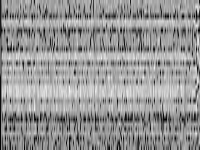 |
 |
 |
 |
| 164 | eilA101-2 [MIPLIB] | J. Linderoth | Set partitioning problem approximation for capicated vehicle routing problem instance from TSPLIB | eil | 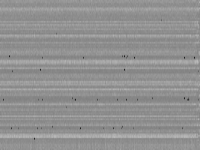 |
 |
 |
 |
| 165 | eilC76-2 [MIPLIB] | J. Linderoth | Set partitioning problem approximation for capicated vehicle routing problem instance from TSPLIB Imported from the MIPLIB2010 submissions. | eil | 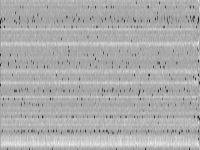 |
 |
 |
 |
| 166 | elitserienhandball11i [MIPLIB] | Gleb Belov | These are the instances from MiniZinc Challenges 2012-2016 (see www.minizinc.org), compiled for MIP WITH INDICATOR CONSTRAINTS using the develop branch of MiniZinc and CPLEX 12.7.1 on 30 April 2017. Thus, these instances can only be handled by solvers accepting indicator constraints. For instances compiled with big-M/domain decomposition only, see my previous submission to MIPLIB.To recompile, create a directory MODELS, a list lst12_16.txt of the instances with full paths to mzn/dzn files of each instance per line, and say$> ~/install/libmzn/tests/benchmarking/mzn-test.py -l ../lst12_16.txt -slvPrf MZN-CPLEX -debug 1 -addOption "-timeout 3 -D fIndConstr=true -D fMIPdomains=false" -useJoinedName "-writeModel MODELS_IND/%s.mps" Alternatively, you can compile individual instance as follows: $> mzn-cplex -v -s -G linear -output-time ../challenge_2012_2016/mznc2016_probs/zephyrus/zephyrus.mzn ../challenge_2012_2016/mznc2016_p/zephyrus/14__8__6__3.dzn -a -timeout 3 -D fIndConstr=true -D fMIPdomains=false -writeModel MODELS_IND/challenge_2012_2016mznc2016_probszephyruszephyrusmzn-challenge_2012_2016mznc2016_probszephyrus14__8__6__3dzn.mps | elitserienhandball |  |
 |
 |
 |
| 167 | elitserienhandball13i [MIPLIB] | Gleb Belov | These are the instances from MiniZinc Challenges 2012-2016 (see www.minizinc.org), compiled for MIP WITH INDICATOR CONSTRAINTS using the develop branch of MiniZinc and CPLEX 12.7.1 on 30 April 2017. Thus, these instances can only be handled by solvers accepting indicator constraints. For instances compiled with big-M/domain decomposition only, see my previous submission to MIPLIB.To recompile, create a directory MODELS, a list lst12_16.txt of the instances with full paths to mzn/dzn files of each instance per line, and say$> ~/install/libmzn/tests/benchmarking/mzn-test.py -l ../lst12_16.txt -slvPrf MZN-CPLEX -debug 1 -addOption "-timeout 3 -D fIndConstr=true -D fMIPdomains=false" -useJoinedName "-writeModel MODELS_IND/%s.mps" Alternatively, you can compile individual instance as follows: $> mzn-cplex -v -s -G linear -output-time ../challenge_2012_2016/mznc2016_probs/zephyrus/zephyrus.mzn ../challenge_2012_2016/mznc2016_p/zephyrus/14__8__6__3.dzn -a -timeout 3 -D fIndConstr=true -D fMIPdomains=false -writeModel MODELS_IND/challenge_2012_2016mznc2016_probszephyruszephyrusmzn-challenge_2012_2016mznc2016_probszephyrus14__8__6__3dzn.mps | elitserienhandball |  |
 |
 |
 |
| 168 | elitserienhandball14i [MIPLIB] | Gleb Belov | These are the instances from MiniZinc Challenges 2012-2016 (see www.minizinc.org), compiled for MIP WITH INDICATOR CONSTRAINTS using the develop branch of MiniZinc and CPLEX 12.7.1 on 30 April 2017. Thus, these instances can only be handled by solvers accepting indicator constraints. For instances compiled with big-M/domain decomposition only, see my previous submission to MIPLIB.To recompile, create a directory MODELS, a list lst12_16.txt of the instances with full paths to mzn/dzn files of each instance per line, and say$> ~/install/libmzn/tests/benchmarking/mzn-test.py -l ../lst12_16.txt -slvPrf MZN-CPLEX -debug 1 -addOption "-timeout 3 -D fIndConstr=true -D fMIPdomains=false" -useJoinedName "-writeModel MODELS_IND/%s.mps" Alternatively, you can compile individual instance as follows: $> mzn-cplex -v -s -G linear -output-time ../challenge_2012_2016/mznc2016_probs/zephyrus/zephyrus.mzn ../challenge_2012_2016/mznc2016_p/zephyrus/14__8__6__3.dzn -a -timeout 3 -D fIndConstr=true -D fMIPdomains=false -writeModel MODELS_IND/challenge_2012_2016mznc2016_probszephyruszephyrusmzn-challenge_2012_2016mznc2016_probszephyrus14__8__6__3dzn.mps | elitserienhandball |  |
 |
 |
 |
| 169 | elitserienhandball3i [MIPLIB] | Gleb Belov | These are the instances from MiniZinc Challenges 2012-2016 (see www.minizinc.org), compiled for MIP WITH INDICATOR CONSTRAINTS using the develop branch of MiniZinc and CPLEX 12.7.1 on 30 April 2017. Thus, these instances can only be handled by solvers accepting indicator constraints. For instances compiled with big-M/domain decomposition only, see my previous submission to MIPLIB.To recompile, create a directory MODELS, a list lst12_16.txt of the instances with full paths to mzn/dzn files of each instance per line, and say$> ~/install/libmzn/tests/benchmarking/mzn-test.py -l ../lst12_16.txt -slvPrf MZN-CPLEX -debug 1 -addOption "-timeout 3 -D fIndConstr=true -D fMIPdomains=false" -useJoinedName "-writeModel MODELS_IND/%s.mps" Alternatively, you can compile individual instance as follows: $> mzn-cplex -v -s -G linear -output-time ../challenge_2012_2016/mznc2016_probs/zephyrus/zephyrus.mzn ../challenge_2012_2016/mznc2016_p/zephyrus/14__8__6__3.dzn -a -timeout 3 -D fIndConstr=true -D fMIPdomains=false -writeModel MODELS_IND/challenge_2012_2016mznc2016_probszephyruszephyrusmzn-challenge_2012_2016mznc2016_probszephyrus14__8__6__3dzn.mps | elitserienhandball |  |
 |
 |
 |
| 170 | enlight_hard [MIPLIB] | A. Zymolka | Model to solve instance of a combinatorial game ``EnLight'' Imported from the MIPLIB2010 submissions. | enlight |  |
 |
 |
 |
| 171 | enlight11 [MIPLIB] | A. Zymolka | Model to solve instance of a combinatorial game ``EnLight'' Imported from the MIPLIB2010 submissions. | enlight |  |
 |
 |
 |
| 172 | enlight4 [MIPLIB] | A. Zymolka | Model to solve instance of a combinatorial game ``EnLight'' Imported from the MIPLIB2010 submissions. | enlight |  |
 |
 |
 |
| 173 | enlight8 [MIPLIB] | A. Zymolka | Model to solve instance of a combinatorial game ``EnLight'' Imported from the MIPLIB2010 submissions. | enlight |  |
 |
 |
 |
| 174 | enlight9 [MIPLIB] | A. Zymolka | Model to solve instance of a combinatorial game ``EnLight'' | enlight |  |
 |
 |
 |
| 175 | eva1aprime5x5opt [MIPLIB] | Yoshihiro Kanno | MILP approach to generate structures with negative thermal expansion coefficients | evaprime |  |
 |
 |
 |
| 176 | eva1aprime6x6opt [MIPLIB] | Yoshihiro Kanno | MILP approach to generate structures with negative thermal expansion coefficients | evaprime |  |
 |
 |
 |
| 177 | ex10 [MIPLIB] | Iulian Ober | Formulations of Boolean SAT instance | - | 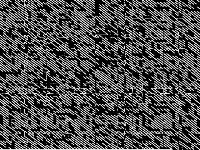 |
 |
 |
 |
| 178 | ex1010-pi [MIPLIB] | M. Winkler | Logic synthesis problem from the 2010 SAT conference pseudo-Boolean competition | - |  |
 |
 |
 |
| 179 | ex9 [MIPLIB] | Iulian Ober | Formulations of Boolean SAT instance | - | 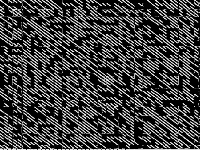 |
 |
 |
 |
| 180 | exp-1-500-5-5 [MIPLIB] | MIPLIB submission pool | Imported from the MIPLIB2010 submissions. | exp_and_fc |  |
 |
 |
 |
| 181 | f2000 [MIPLIB] | M. Winkler | Reformulated SAT instance from the 2010 SAT conference pseudo-Boolean competition | - |  |
 |
 |
 |
| 182 | f2gap201600 [MIPLIB] | Salim Haddadi | Restrictions of well-known hard generalized assignment problem instances (D10400,D20400,D40400,D15900,D30900,D60900,D201600,D401600,D801600) | f2gap |  |
 |
 |
 |
| 183 | f2gap401600 [MIPLIB] | Salim Haddadi | Restrictions of well-known hard generalized assignment problem instances (D10400,D20400,D40400,D15900,D30900,D60900,D201600,D401600,D801600) | f2gap |  |
 |
 |
 |
| 184 | f2gap40400 [MIPLIB] | Salim Haddadi | Restrictions of well-known hard generalized assignment problem instances (D10400,D20400,D40400,D15900,D30900,D60900,D201600,D401600,D801600) | f2gap |  |
 |
 |
 |
| 185 | f2gap801600 [MIPLIB] | Salim Haddadi | Restrictions of well-known hard generalized assignment problem instances (D10400,D20400,D40400,D15900,D30900,D60900,D201600,D401600,D801600) | f2gap |  |
 |
 |
 |
| 186 | fast0507 [MIPLIB] | MIPLIB submission pool | Imported from the MIPLIB2010 submissions. | - |  |
 |
 |
 |
| 187 | fastxgemm-n2r6s0t2 [MIPLIB] | Laurent Sorber | Naive multiplication of two N by N matrices requires N^3 scalar multiplications. For N=2, Strassen showed that it could be done in only R=7 < 8=N^3 multiplications. For N=3, it is known that 19 <= R <= 23, and for N=4 it is known that 34 <= R <= 49. This repository contains code that generates a mixed-integer linear program (MILP) formulation of the fast matrix multiplication problem for finding solutions with R < N^3 and proving that they are optimal. For a more detailed description, see the accompanying manuscript. | fastxgemm |  |
 |
 |
 |
| 188 | fastxgemm-n2r7s4t1 [MIPLIB] | Laurent Sorber | Naive multiplication of two N by N matrices requires N^3 scalar multiplications. For N=2, Strassen showed that it could be done in only R=7 < 8=N^3 multiplications. For N=3, it is known that 19 <= R <= 23, and for N=4 it is known that 34 <= R <= 49. This repository contains code that generates a mixed-integer linear program (MILP) formulation of the fast matrix multiplication problem for finding solutions with R < N^3 and proving that they are optimal. For a more detailed description, see the accompanying manuscript. | fastxgemm |  |
 |
 |
 |
| 189 | fastxgemm-n3r21s3t6 [MIPLIB] | Laurent Sorber | Naive multiplication of two N by N matrices requires N^3 scalar multiplications. For N=2, Strassen showed that it could be done in only R=7 < 8=N^3 multiplications. For N=3, it is known that 19 <= R <= 23, and for N=4 it is known that 34 <= R <= 49. This repository contains code that generates a mixed-integer linear program (MILP) formulation of the fast matrix multiplication problem for finding solutions with R < N^3 and proving that they are optimal. For a more detailed description, see the accompanying manuscript. | fastxgemm |  |
 |
 |
 |
| 190 | fastxgemm-n3r22s4t6 [MIPLIB] | Laurent Sorber | Naive multiplication of two N by N matrices requires N^3 scalar multiplications. For N=2, Strassen showed that it could be done in only R=7 < 8=N^3 multiplications. For N=3, it is known that 19 <= R <= 23, and for N=4 it is known that 34 <= R <= 49. This repository contains code that generates a mixed-integer linear program (MILP) formulation of the fast matrix multiplication problem for finding solutions with R < N^3 and proving that they are optimal. For a more detailed description, see the accompanying manuscript. | fastxgemm |  |
 |
 |
 |
| 191 | fastxgemm-n3r23s5t6 [MIPLIB] | Laurent Sorber | Naive multiplication of two N by N matrices requires N^3 scalar multiplications. For N=2, Strassen showed that it could be done in only R=7 < 8=N^3 multiplications. For N=3, it is known that 19 <= R <= 23, and for N=4 it is known that 34 <= R <= 49. This repository contains code that generates a mixed-integer linear program (MILP) formulation of the fast matrix multiplication problem for finding solutions with R < N^3 and proving that they are optimal. For a more detailed description, see the accompanying manuscript. | fastxgemm |  |
 |
 |
 |
| 192 | fhnw-binpack4-18 [MIPLIB] | Simon Felix | Feasability-only 3D bin packing with additional constraints | binpack |  |
 |
 |
 |
| 193 | fhnw-binpack4-4 [MIPLIB] | Simon Felix | Feasability-only 3D bin packing with additional constraints | binpack |  |
 |
 |
 |
| 194 | fhnw-binpack4-48 [MIPLIB] | Simon Felix | Feasability-only 3D bin packing with additional constraints | binpack |  |
 |
 |
 |
| 195 | fhnw-binpack4-58 [MIPLIB] | Simon Felix | Feasability-only 3D bin packing with additional constraints | binpack |  |
 |
 |
 |
| 196 | fhnw-binpack4-77 [MIPLIB] | Simon Felix | Feasability-only 3D bin packing with additional constraints | binpack |  |
 |
 |
 |
| 197 | fhnw-binschedule0 [MIPLIB] | Simon Felix | Scheduling/assignment for an industrial production pipeline | fhnw-bin |  |
 |
 |
 |
| 198 | fhnw-binschedule1 [MIPLIB] | Simon Felix | Scheduling/assignment for an industrial production pipeline | fhnw-bin |  |
 |
 |
 |
| 199 | fhnw-binschedule2 [MIPLIB] | Simon Felix | Scheduling/assignment for an industrial production pipeline | fhnw-bin | 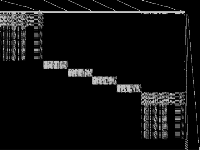 |
 |
 |
 |
| 200 | fhnw-schedule-paira100 [MIPLIB] | Simon Felix | Continuous-time project scheduling and selection, inspired by an industry use-case. Each project has a value, the sum should be maximized. Each project has a deadline, and an earliest start date. Three formulations of the same problem ("Pair A", "Pair B" and "Slot") - we expect "Pair B" to be the best formulation. | schedule |  |
 |
 |
 |
| 201 | fhnw-schedule-paira200 [MIPLIB] | Simon Felix | Continuous-time project scheduling and selection, inspired by an industry use-case. Each project has a value, the sum should be maximized. Each project has a deadline, and an earliest start date. Three formulations of the same problem ("Pair A", "Pair B" and "Slot") - we expect "Pair B" to be the best formulation. | schedule |  |
 |
 |
 |
| 202 | fhnw-schedule-paira400 [MIPLIB] | Simon Felix | Continuous-time project scheduling and selection, inspired by an industry use-case. Each project has a value, the sum should be maximized. Each project has a deadline, and an earliest start date. Three formulations of the same problem ("Pair A", "Pair B" and "Slot") - we expect "Pair B" to be the best formulation. | schedule |  |
 |
 |
 |
| 203 | fhnw-schedule-pairb200 [MIPLIB] | Simon Felix | Continuous-time project scheduling and selection, inspired by an industry use-case. Each project has a value, the sum should be maximized. Each project has a deadline, and an earliest start date. Three formulations of the same problem ("Pair A", "Pair B" and "Slot") - we expect "Pair B" to be the best formulation. | schedule |  |
 |
 |
 |
| 204 | fhnw-schedule-pairb400 [MIPLIB] | Simon Felix | Continuous-time project scheduling and selection, inspired by an industry use-case. Each project has a value, the sum should be maximized. Each project has a deadline, and an earliest start date. Three formulations of the same problem ("Pair A", "Pair B" and "Slot") - we expect "Pair B" to be the best formulation. | schedule |  |
 |
 |
 |
| 205 | fhnw-sq2 [MIPLIB] | Simon Felix | Combinatorial toy fesability problem: Magic square. Instances 1 & 2 are feasible, instance 3 is unknown. Reported to be solved after 46883 seconds with ParaSCIP using 72 cores. | fhnw-sq |  |
 |
 |
 |
| 206 | fhnw-sq3 [MIPLIB] | Simon Felix | Combinatorial toy fesability problem: Magic square. Instances 1 & 2 are feasible, instance 3 is unknown. | fhnw-sq |  |
 |
 |
 |
| 207 | fiball [MIPLIB] | MIPLIB submission pool | Imported from the MIPLIB2010 submissions. | - |  |
 |
 |
 |
| 208 | fiber [MIPLIB] | MIPLIB submission pool | Imported from the MIPLIB2010 submissions. | - |  |
 |
 |
 |
| 209 | fillomino7x7-0i [MIPLIB] | Gleb Belov | These are the instances from MiniZinc Challenges 2012-2016 (see www.minizinc.org), compiled for MIP WITH INDICATOR CONSTRAINTS using the develop branch of MiniZinc and CPLEX 12.7.1 on 30 April 2017. Thus, these instances can only be handled by solvers accepting indicator constraints. For instances compiled with big-M/domain decomposition only, see my previous submission to MIPLIB.To recompile, create a directory MODELS, a list lst12_16.txt of the instances with full paths to mzn/dzn files of each instance per line, and say$> ~/install/libmzn/tests/benchmarking/mzn-test.py -l ../lst12_16.txt -slvPrf MZN-CPLEX -debug 1 -addOption "-timeout 3 -D fIndConstr=true -D fMIPdomains=false" -useJoinedName "-writeModel MODELS_IND/%s.mps" Alternatively, you can compile individual instance as follows: $> mzn-cplex -v -s -G linear -output-time ../challenge_2012_2016/mznc2016_probs/zephyrus/zephyrus.mzn ../challenge_2012_2016/mznc2016_p/zephyrus/14__8__6__3.dzn -a -timeout 3 -D fIndConstr=true -D fMIPdomains=false -writeModel MODELS_IND/challenge_2012_2016mznc2016_probszephyruszephyrusmzn-challenge_2012_2016mznc2016_probszephyrus14__8__6__3dzn.mps | fillomino |  |
 |
 |
 |
| 210 | fjspeasy01i [MIPLIB] | Gleb Belov | These are the instances from MiniZinc Challenges 2012-2016 (see www.minizinc.org), compiled for MIP WITH INDICATOR CONSTRAINTS using the develop branch of MiniZinc and CPLEX 12.7.1 on 30 April 2017. Thus, these instances can only be handled by solvers accepting indicator constraints. For instances compiled with big-M/domain decomposition only, see my previous submission to MIPLIB.To recompile, create a directory MODELS, a list lst12_16.txt of the instances with full paths to mzn/dzn files of each instance per line, and say$> ~/install/libmzn/tests/benchmarking/mzn-test.py -l ../lst12_16.txt -slvPrf MZN-CPLEX -debug 1 -addOption "-timeout 3 -D fIndConstr=true -D fMIPdomains=false" -useJoinedName "-writeModel MODELS_IND/%s.mps" Alternatively, you can compile individual instance as follows: $> mzn-cplex -v -s -G linear -output-time ../challenge_2012_2016/mznc2016_probs/zephyrus/zephyrus.mzn ../challenge_2012_2016/mznc2016_p/zephyrus/14__8__6__3.dzn -a -timeout 3 -D fIndConstr=true -D fMIPdomains=false -writeModel MODELS_IND/challenge_2012_2016mznc2016_probszephyruszephyrusmzn-challenge_2012_2016mznc2016_probszephyrus14__8__6__3dzn.mps | fjsp |  |
 |
 |
 |
| 211 | flugpl [MIPLIB] | MIPLIB submission pool | Imported from the MIPLIB2010 submissions. | - |  |
 |
 |
 |
| 212 | flugplinf [MIPLIB] | MIPLIB submission pool | Imported from the MIPLIB2010 submissions. | - |  |
 |
 |
 |
| 213 | g200x740 [MIPLIB] | MIPLIB submission pool | Imported from the MIPLIB2010 submissions. | fixed-cost-network-flow |  |
 |
 |
 |
| 214 | g503inf [MIPLIB] | MIPLIB submission pool | Imported from the MIPLIB2010 submissions. | - |  |
 |
 |
 |
| 215 | gasprod1-1 [MIPLIB] | Andrew Stamps | Production planning model for an industrial gas process. Three instances of the model included. | gasprod |  |
 |
 |
 |
| 216 | gasprod1-2 [MIPLIB] | Andrew Stamps | Production planning model for an industrial gas process. Three instances of the model included. | gasprod | 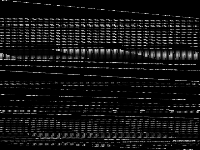 |
 |
 |
 |
| 217 | gasprod1-3 [MIPLIB] | Andrew Stamps | Production planning model for an industrial gas process. Three instances of the model included. | gasprod | 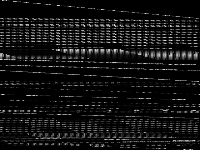 |
 |
 |
 |
| 218 | gasprod2-1 [MIPLIB] | Andrew Stamps | Production planning model of a second industrial gas system. Two model instances included. | gasprod |  |
 |
 |
 |
| 219 | gasprod2-2 [MIPLIB] | Andrew Stamps | Production planning model of a second industrial gas system. Two model instances included. | gasprod |  |
 |
 |
 |
| 220 | gen [MIPLIB] | MIPLIB submission pool | Imported from the MIPLIB2010 submissions. | - |  |
 |
 |
 |
| 221 | gen-ip002 [MIPLIB] | Simon Bowly | Randomly generated integer and binary programming instances. These results are part of an early phase of work aimed at generating diverse and challenging MIP instances for experimental testing. We have aimed to produce small integer and binary programming instances which are reasonably difficult to solve and have varied structure, eliciting a range of behaviour in state of the art algorithms. | generated |  |
 |
 |
 |
| 222 | gen-ip016 [MIPLIB] | Simon Bowly | Randomly generated integer and binary programming instances. These results are part of an early phase of work aimed at generating diverse and challenging MIP instances for experimental testing. We have aimed to produce small integer and binary programming instances which are reasonably difficult to solve and have varied structure, eliciting a range of behaviour in state of the art algorithms. Solved with XPRESS in a few seconds. | generated |  |
 |
 |
 |
| 223 | gen-ip021 [MIPLIB] | Simon Bowly | Randomly generated integer and binary programming instances. These results are part of an early phase of work aimed at generating diverse and challenging MIP instances for experimental testing. We have aimed to produce small integer and binary programming instances which are reasonably difficult to solve and have varied structure, eliciting a range of behaviour in state of the art algorithms. | generated |  |
 |
 |
 |
| 224 | gen-ip036 [MIPLIB] | Simon Bowly | Randomly generated integer and binary programming instances. These results are part of an early phase of work aimed at generating diverse and challenging MIP instances for experimental testing. We have aimed to produce small integer and binary programming instances which are reasonably difficult to solve and have varied structure, eliciting a range of behaviour in state of the art algorithms. | generated |  |
 |
 |
 |
| 225 | gen-ip054 [MIPLIB] | Simon Bowly | Randomly generated integer and binary programming instances. These results are part of an early phase of work aimed at generating diverse and challenging MIP instances for experimental testing. We have aimed to produce small integer and binary programming instances which are reasonably difficult to solve and have varied structure, eliciting a range of behaviour in state of the art algorithms. | generated |  |
 |
 |
 |
| 226 | genus-g31-8 [MIPLIB] | Stephan Beyer | Minimum Genus instance of g.31.8 (undirected) of the AT&T Graphs by Stephen C. North. | genus |  |
 |
 |
 |
| 227 | genus-g61-25 [MIPLIB] | Stephan Beyer | Minimum Genus instance of g.61.25 (undirected) of the AT&T Graphs by Stephen C. North. | genus |  |
 |
 |
 |
| 228 | genus-sym-g31-8 [MIPLIB] | Stephan Beyer | Minimum Genus instance, with symmetry breaking constraints, of g.31.8 (undirected) of the AT&T Graphs by Stephen C. North. | genus |  |
 |
 |
 |
| 229 | genus-sym-g62-2 [MIPLIB] | Stephan Beyer | Minimum Genus instance, with symmetry breaking constraints, of g.62.2 (undirected) of the AT&T Graphs by Stephen C. North. | genus |  |
 |
 |
 |
| 230 | genus-sym-grafo5708-48 [MIPLIB] | Stephan Beyer | Minimum Genus instance of grafo5708.48 from the Rome Graphs, with symmetry-breaking constraints. | genus |  |
 |
 |
 |
| 231 | ger50_17_trans [MIPLIB] | C. Raack | Multi-layer network design problem using a link-flow formulation over a path-flow formulation. | ger50 |  |
 |
 |
 |
| 232 | ger50-17-ptp-pop-6t [MIPLIB] | C. Raack | Multi-layer network design problem using a link-flow formulation over a path-flow formulation. | ger50 |  |
 |
 |
 |
| 233 | ger50-17-trans-dfn-3t [MIPLIB] | C. Raack | Multi-layer network design problem using a link-flow formulation over a path-flow formulation. | ger50 |  |
 |
 |
 |
| 234 | germanrr [MIPLIB] | Q. Chen | Model from a German railroad company. Solved in June 2013 by CPLEX 12.5.1 (24 threads) in about 5.2 hours. | - |  |
 |
 |
 |
| 235 | germany50-UUM [MIPLIB] | MIPLIB submission pool | Imported from the MIPLIB2010 submissions. | network_design | 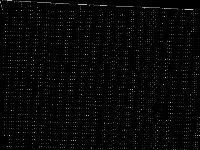 |
 |
 |
 |
| 236 | gfd-schedulen180f7d50m30k18 [MIPLIB] | Gleb Belov | Linearized Constraint Programming models of the MiniZinc Challenges 2012-2016. I should be able to produce versions with indicator constraints supported by Gurobi and CPLEX, however don't know if you can use them and if there is a standard format. These MPS were produced by Gurobi 7.0.2 using the MiniZinc develop branch on eb536656062ca13325a96b5d0881742c7d0e3c38 | gfd-schedule |  |
 |
 |
 |
| 237 | gfd-schedulen25f5d20m10k3i [MIPLIB] | Gleb Belov | These are the instances from MiniZinc Challenges 2012-2016 (see www.minizinc.org), compiled for MIP WITH INDICATOR CONSTRAINTS using the develop branch of MiniZinc and CPLEX 12.7.1 on 30 April 2017. Thus, these instances can only be handled by solvers accepting indicator constraints. For instances compiled with big-M/domain decomposition only, see my previous submission to MIPLIB.To recompile, create a directory MODELS, a list lst12_16.txt of the instances with full paths to mzn/dzn files of each instance per line, and say$> ~/install/libmzn/tests/benchmarking/mzn-test.py -l ../lst12_16.txt -slvPrf MZN-CPLEX -debug 1 -addOption "-timeout 3 -D fIndConstr=true -D fMIPdomains=false" -useJoinedName "-writeModel MODELS_IND/%s.mps" Alternatively, you can compile individual instance as follows: $> mzn-cplex -v -s -G linear -output-time ../challenge_2012_2016/mznc2016_probs/zephyrus/zephyrus.mzn ../challenge_2012_2016/mznc2016_p/zephyrus/14__8__6__3.dzn -a -timeout 3 -D fIndConstr=true -D fMIPdomains=false -writeModel MODELS_IND/challenge_2012_2016mznc2016_probszephyruszephyrusmzn-challenge_2012_2016mznc2016_probszephyrus14__8__6__3dzn.mps | gfd-schedule |  |
 |
 |
 |
| 238 | gfd-schedulen55f2d50m30k3i [MIPLIB] | Gleb Belov | These are the instances from MiniZinc Challenges 2012-2016 (see www.minizinc.org), compiled for MIP WITH INDICATOR CONSTRAINTS using the develop branch of MiniZinc and CPLEX 12.7.1 on 30 April 2017. Thus, these instances can only be handled by solvers accepting indicator constraints. For instances compiled with big-M/domain decomposition only, see my previous submission to MIPLIB.To recompile, create a directory MODELS, a list lst12_16.txt of the instances with full paths to mzn/dzn files of each instance per line, and say$> ~/install/libmzn/tests/benchmarking/mzn-test.py -l ../lst12_16.txt -slvPrf MZN-CPLEX -debug 1 -addOption "-timeout 3 -D fIndConstr=true -D fMIPdomains=false" -useJoinedName "-writeModel MODELS_IND/%s.mps" Alternatively, you can compile individual instance as follows: $> mzn-cplex -v -s -G linear -output-time ../challenge_2012_2016/mznc2016_probs/zephyrus/zephyrus.mzn ../challenge_2012_2016/mznc2016_p/zephyrus/14__8__6__3.dzn -a -timeout 3 -D fIndConstr=true -D fMIPdomains=false -writeModel MODELS_IND/challenge_2012_2016mznc2016_probszephyruszephyrusmzn-challenge_2012_2016mznc2016_probszephyrus14__8__6__3dzn.mps | gfd-schedule |  |
 |
 |
 |
| 239 | ghoulomb4-9-10i [MIPLIB] | Gleb Belov | These are the instances from MiniZinc Challenges 2012-2016 (see www.minizinc.org), compiled for MIP WITH INDICATOR CONSTRAINTS using the develop branch of MiniZinc and CPLEX 12.7.1 on 30 April 2017. Thus, these instances can only be handled by solvers accepting indicator constraints. For instances compiled with big-M/domain decomposition only, see my previous submission to MIPLIB.To recompile, create a directory MODELS, a list lst12_16.txt of the instances with full paths to mzn/dzn files of each instance per line, and say$> ~/install/libmzn/tests/benchmarking/mzn-test.py -l ../lst12_16.txt -slvPrf MZN-CPLEX -debug 1 -addOption "-timeout 3 -D fIndConstr=true -D fMIPdomains=false" -useJoinedName "-writeModel MODELS_IND/%s.mps" Alternatively, you can compile individual instance as follows: $> mzn-cplex -v -s -G linear -output-time ../challenge_2012_2016/mznc2016_probs/zephyrus/zephyrus.mzn ../challenge_2012_2016/mznc2016_p/zephyrus/14__8__6__3.dzn -a -timeout 3 -D fIndConstr=true -D fMIPdomains=false -writeModel MODELS_IND/challenge_2012_2016mznc2016_probszephyruszephyrusmzn-challenge_2012_2016mznc2016_probszephyrus14__8__6__3dzn.mps | ghoulomb |  |
 |
 |
 |
| 240 | glass-sc [MIPLIB] | Marc Pfetsch | Set covering problems arising from a Benders algorithm for finding maximum feasible subsystems. More details on the generation is given in the README file in the tarball. | maxfeassub |  |
 |
 |
 |
| 241 | glass4 [MIPLIB] | I. Luzzi | Nesting instance | - |  |
 |
 |
 |
| 242 | gmu-35-40 [MIPLIB] | Nora Konnyu | Timber harvest scheduling model These are harvest scheduling models of hypothetical forest planning problems where net timber revenues are maximized over a planning horizon subject to four sets of constraints: 1. Each management unit can be harvested only once over the planning horizon, 2. Volume harvested in one planning period should not be less or more than some portion of that in the preceding period, 3. Area-weighted average age of the forest by the end of the plan should notbe less than a certain target age. 4. Clearcut size in any planning period has to be below a specific limit. Decision variable are management units and generalized management units (group of management units with a combined area not exceeding the limit on clearcut size) and can be either fully harvested or left untouched in any planning period, therefore there is a binary restriction on the decision variables. | gmu |  |
 |
 |
 |
| 243 | gmu-35-50 [MIPLIB] | Nora Konnyu | Timber harvest scheduling model These are harvest scheduling models of hypothetical forest planning problems where net timber revenues are maximized over a planning horizon subject to four sets of constraints: 1. Each management unit can be harvested only once over the planning horizon, 2. Volume harvested in one planning period should not be less or more than some portion of that in the preceding period, 3. Area-weighted average age of the forest by the end of the plan should notbe less than a certain target age. 4. Clearcut size in any planning period has to be below a specific limit. Decision variable are management units and generalized management units (group of management units with a combined area not exceeding the limit on clearcut size) and can be either fully harvested or left untouched in any planning period, therefore there is a binary restriction on the decision variables. | gmu |  |
 |
 |
 |
| 244 | gmut-75-50 [MIPLIB] | Nora Konnyu | Timber harvest scheduling model. Solved by ParaXpress in a 12288 core supercomputer run on HLRN III. These are harvest scheduling models of hypothetical forest planning problems where net timber revenues are maximized over a planning horizon subject to four sets of constraints: 1. Each management unit can be harvested only once over the planning horizon, 2. Volume harvested in one planning period should not be less or more than some portion of that in the preceding period, 3. Area-weighted average age of the forest by the end of the plan should notbe less than a certain target age. 4. Clearcut size in any planning period has to be below a specific limit. Decision variable are management units and generalized management units (group of management units with a combined area not exceeding the limit on clearcut size) and can be either fully harvested or left untouched in any planning period, therefore there is a binary restriction on the decision variables. | gmu |  |
 |
 |
 |
| 245 | gmut-76-40 [MIPLIB] | Nora Konnyu | Timber harvest scheduling model These are harvest scheduling models of hypothetical forest planning problems where net timber revenues are maximized over a planning horizon subject to four sets of constraints: 1. Each management unit can be harvested only once over the planning horizon, 2. Volume harvested in one planning period should not be less or more than some portion of that in the preceding period, 3. Area-weighted average age of the forest by the end of the plan should notbe less than a certain target age. 4. Clearcut size in any planning period has to be below a specific limit. Decision variable are management units and generalized management units (group of management units with a combined area not exceeding the limit on clearcut size) and can be either fully harvested or left untouched in any planning period, therefore there is a binary restriction on the decision variables. | gmu | 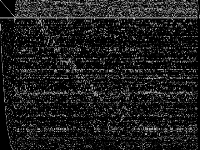 |
 |
 |
 |
| 246 | gmut-76-50 [MIPLIB] | Nora Konnyu | Timber harvest scheduling model These are harvest scheduling models of hypothetical forest planning problems where net timber revenues are maximized over a planning horizon subject to four sets of constraints: 1. Each management unit can be harvested only once over the planning horizon, 2. Volume harvested in one planning period should not be less or more than some portion of that in the preceding period, 3. Area-weighted average age of the forest by the end of the plan should notbe less than a certain target age. 4. Clearcut size in any planning period has to be below a specific limit. Decision variable are management units and generalized management units (group of management units with a combined area not exceeding the limit on clearcut size) and can be either fully harvested or left untouched in any planning period, therefore there is a binary restriction on the decision variables. | gmu |  |
 |
 |
 |
| 247 | gr4x6 [MIPLIB] | MIPLIB submission pool | Imported from the MIPLIB2010 submissions. | - |  |
 |
 |
 |
| 248 | graph20-20-1rand [MIPLIB] | Michael Bastubbe | Packing Cuts in Undirected Graphs. Instances are described in 4.1. | graphs |  |
 |
 |
 |
| 249 | graph20-80-1rand [MIPLIB] | Michael Bastubbe | Packing Cuts in Undirected Graphs. Instances are described in 4.1. | graphs | 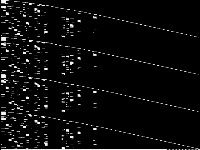 |
 |
 |
 |
| 250 | graph40-20-1rand [MIPLIB] | Michael Bastubbe | Packing Cuts in Undirected Graphs. Instances are described in 4.1. | graphs |  |
 |
 |
 |
| 251 | graph40-40-1rand [MIPLIB] | Michael Bastubbe | Packing Cuts in Undirected Graphs. Instances are described in 4.1. | graphs |  |
 |
 |
 |
| 252 | graph40-80-1rand [MIPLIB] | Michael Bastubbe | Packing Cuts in Undirected Graphs. Instances are described in 4.1. | graphs |  |
 |
 |
 |
| 253 | graphdraw-domain [MIPLIB] | Cézar Augusto Nascimento e Silva | In the Graph Drawing problem a set of symbols must be placed in a plane and their connections routed. The objective is to produce aesthetically pleasant, easy to read diagrams. As a primary concern one usually tries to minimize edges crossing, edges' length, waste of space and number of bents in the connections. When formulated with these constraints the problem becomes NP-Hard . In practice many additional complicating requirements can be included, such as non-uniform sizes for symbols. Thus, some heuristics such as the generalized force-direct method and Simulated Annealing have been proposed to tackle this problem. uses a grid structure to approach the Entity-Relationship (ER) drawing problem, emphasizing the differences between ER drawing and the more classical circuit drawing problems. presented different ways of producing graph layouts (e.g.: tree, orthogonal, visibility representations, hierarchic, among others) for general graphs with applications on different subjects. The ability to automatically produce high quality layouts is very important in many applications, one of these is Software Engineering: the availability of easy to understand ER diagrams, for instance, can improve the time needed for developers to master database models and increase their productivity. Our solution approach involves two phases: (\\(i\\)) firstly the optimal placement of entities is solved, i.e.: entities are positioned so as to minimize the distances between connected entities; and (\\(ii\\)) secondly, edges are routed minimizing bends and avoiding the inclusion of connectors too close. We present the model for the first phase of our problem. | graphdraw |  |
 |
 |
 |
| 254 | graphdraw-gemcutter [MIPLIB] | Cézar Augusto Nascimento e Silva | In the Graph Drawing problem a set of symbols must be placed in a plane and their connections routed. The objective is to produce aesthetically pleasant, easy to read diagrams. As a primary concern one usually tries to minimize edges crossing, edges' length, waste of space and number of bents in the connections. When formulated with these constraints the problem becomes NP-Hard . In practice many additional complicating requirements can be included, such as non-uniform sizes for symbols. Thus, some heuristics such as the generalized force-direct method and Simulated Annealing have been proposed to tackle this problem. uses a grid structure to approach the Entity-Relationship (ER) drawing problem, emphasizing the differences between ER drawing and the more classical circuit drawing problems. presented different ways of producing graph layouts (e.g.: tree, orthogonal, visibility representations, hierarchic, among others) for general graphs with applications on different subjects. The ability to automatically produce high quality layouts is very important in many applications, one of these is Software Engineering: the availability of easy to understand ER diagrams, for instance, can improve the time needed for developers to master database models and increase their productivity. Our solution approach involves two phases: (\\(i\\)) firstly the optimal placement of entities is solved, i.e.: entities are positioned so as to minimize the distances between connected entities; and (\\(ii\\)) secondly, edges are routed minimizing bends and avoiding the inclusion of connectors too close. We present the model for the first phase of our problem. | graphdraw |  |
 |
 |
 |
| 255 | graphdraw-grafo2 [MIPLIB] | Cézar Augusto Nascimento e Silva | In the Graph Drawing problem a set of symbols must be placed in a plane and their connections routed. The objective is to produce aesthetically pleasant, easy to read diagrams. As a primary concern one usually tries to minimize edges crossing, edges' length, waste of space and number of bents in the connections. When formulated with these constraints the problem becomes NP-Hard . In practice many additional complicating requirements can be included, such as non-uniform sizes for symbols. Thus, some heuristics such as the generalized force-direct method and Simulated Annealing have been proposed to tackle this problem. uses a grid structure to approach the Entity-Relationship (ER) drawing problem, emphasizing the differences between ER drawing and the more classical circuit drawing problems. presented different ways of producing graph layouts (e.g.: tree, orthogonal, visibility representations, hierarchic, among others) for general graphs with applications on different subjects. The ability to automatically produce high quality layouts is very important in many applications, one of these is Software Engineering: the availability of easy to understand ER diagrams, for instance, can improve the time needed for developers to master database models and increase their productivity. Our solution approach involves two phases: (\\(i\\)) firstly the optimal placement of entities is solved, i.e.: entities are positioned so as to minimize the distances between connected entities; and (\\(ii\\)) secondly, edges are routed minimizing bends and avoiding the inclusion of connectors too close. We present the model for the first phase of our problem. | graphdraw |  |
 |
 |
 |
| 256 | graphdraw-mainerd [MIPLIB] | Cézar Augusto Nascimento e Silva | In the Graph Drawing problem a set of symbols must be placed in a plane and their connections routed. The objective is to produce aesthetically pleasant, easy to read diagrams. As a primary concern one usually tries to minimize edges crossing, edges' length, waste of space and number of bents in the connections. When formulated with these constraints the problem becomes NP-Hard . In practice many additional complicating requirements can be included, such as non-uniform sizes for symbols. Thus, some heuristics such as the generalized force-direct method and Simulated Annealing have been proposed to tackle this problem. uses a grid structure to approach the Entity-Relationship (ER) drawing problem, emphasizing the differences between ER drawing and the more classical circuit drawing problems. presented different ways of producing graph layouts (e.g.: tree, orthogonal, visibility representations, hierarchic, among others) for general graphs with applications on different subjects. The ability to automatically produce high quality layouts is very important in many applications, one of these is Software Engineering: the availability of easy to understand ER diagrams, for instance, can improve the time needed for developers to master database models and increase their productivity. Our solution approach involves two phases: (\\(i\\)) firstly the optimal placement of entities is solved, i.e.: entities are positioned so as to minimize the distances between connected entities; and (\\(ii\\)) secondly, edges are routed minimizing bends and avoiding the inclusion of connectors too close. We present the model for the first phase of our problem. | graphdraw |  |
 |
 |
 |
| 257 | graphdraw-opmanager [MIPLIB] | Cézar Augusto Nascimento e Silva | In the Graph Drawing problem a set of symbols must be placed in a plane and their connections routed. The objective is to produce aesthetically pleasant, easy to read diagrams. As a primary concern one usually tries to minimize edges crossing, edges' length, waste of space and number of bents in the connections. When formulated with these constraints the problem becomes NP-Hard . In practice many additional complicating requirements can be included, such as non-uniform sizes for symbols. Thus, some heuristics such as the generalized force-direct method and Simulated Annealing have been proposed to tackle this problem. uses a grid structure to approach the Entity-Relationship (ER) drawing problem, emphasizing the differences between ER drawing and the more classical circuit drawing problems. presented different ways of producing graph layouts (e.g.: tree, orthogonal, visibility representations, hierarchic, among others) for general graphs with applications on different subjects. The ability to automatically produce high quality layouts is very important in many applications, one of these is Software Engineering: the availability of easy to understand ER diagrams, for instance, can improve the time needed for developers to master database models and increase their productivity. Our solution approach involves two phases: (\\(i\\)) firstly the optimal placement of entities is solved, i.e.: entities are positioned so as to minimize the distances between connected entities; and (\\(ii\\)) secondly, edges are routed minimizing bends and avoiding the inclusion of connectors too close. We present the model for the first phase of our problem. | graphdraw |  |
 |
 |
 |
| 258 | gsvm2rl12 [MIPLIB] | Toni Sorrell | Suport vector machine with ramp loss. GSVM2-RL is the formulation found in Hess E. and Brooks P. (2015) paper, The Support Vector Machine and Mixed Integer Linear Programming: Ramp Loss SVM with L1-Norm Regularization | supportvectormachine |  |
 |
 |
 |
| 259 | gsvm2rl3 [MIPLIB] | Toni Sorrell | Suport vector machine with ramp loss. GSVM2-RL is the formulation found in Hess E. and Brooks P. (2015) paper, The Support Vector Machine and Mixed Integer Linear Programming: Ramp Loss SVM with L1-Norm Regularization | supportvectormachine |  |
 |
 |
 |
| 260 | gsvm2rl5 [MIPLIB] | Toni Sorrell | Suport vector machine with ramp loss. GSVM2-RL is the formulation found in Hess E. and Brooks P. (2015) paper, The Support Vector Machine and Mixed Integer Linear Programming: Ramp Loss SVM with L1-Norm Regularization | supportvectormachine |  |
 |
 |
 |
| 261 | gsvm2rl9 [MIPLIB] | Toni Sorrell | Suport vector machine with ramp loss. GSVM2-RL is the formulation found in Hess E. and Brooks P. (2015) paper, The Support Vector Machine and Mixed Integer Linear Programming: Ramp Loss SVM with L1-Norm Regularization | supportvectormachine |  |
 |
 |
 |
| 262 | gt2 [MIPLIB] | MIPLIB submission pool | Imported from the MIPLIB2010 submissions. | - |  |
 |
 |
 |
| 263 | gus-sch [MIPLIB] | Alexandra M. Newman | course scheduling model | - |  |
 |
 |
 |
| 264 | h50x2450 [MIPLIB] | MIPLIB submission pool | Imported from the MIPLIB2010 submissions. | fixed-cost-network-flow |  |
 |
 |
 |
| 265 | h80x6320 [MIPLIB] | MIPLIB submission pool | Imported from the MIPLIB2010 submissions. | fixed-cost-network-flow |  |
 |
 |
 |
| 266 | h80x6320d [MIPLIB] | MIPLIB submission pool | Imported from the MIPLIB2010 submissions. | fixed-cost-network-flow |  |
 |
 |
 |
| 267 | hanoi5 [MIPLIB] | M. Winkler | Reformulated SAT instance from the 2010 SAT conference pseudo-Boolean competition. Solved due to the 2012 pseudo-Boolean competition. | - |  |
 |
 |
 |
| 268 | haprp [MIPLIB] | MIPLIB submission pool | Imported from the MIPLIB2010 submissions. | - |  |
 |
 |
 |
| 269 | hgms-det [MIPLIB] | Jesus Rodriguez | Maintenance scheduling of generators in hydropower systems | hgms |  |
 |
 |
 |
| 270 | hgms30 [MIPLIB] | Jesus Rodriguez | Maintenance scheduling of generators in hydropower systems | hgms |  |
 |
 |
 |
| 271 | hgms62 [MIPLIB] | Jesus Rodriguez | Maintenance scheduling of generators in hydropower systems | hgms |  |
 |
 |
 |
| 272 | highschool1-aigio [MIPLIB] | George Fonseca | Educational timetabling problems from several real schools/universities around the world. These instances were originally expressed in the xhstt file format [1] and formulated as Integer Programming models as described at [2]. | timetabling |  |
 |
 |
 |
| 273 | hypothyroid-k1 [MIPLIB] | Gleb Belov | Linearized Constraint Programming models of the MiniZinc Challenges 2012-2016. I should be able to produce versions with indicator constraints supported by Gurobi and CPLEX, however don't know if you can use them and if there is a standard format. These MPS were produced by Gurobi 7.0.2 using the MiniZinc develop branch on eb536656062ca13325a96b5d0881742c7d0e3c38 | hypothyroid |  |
 |
 |
 |
| 274 | ic97_potential [MIPLIB] | L. Peeters | A model for cyclic railway timetable optimization | - |  |
 |
 |
 |
| 275 | ic97_tension [MIPLIB] | MIPLIB submission pool | Imported from the MIPLIB2010 submissions. | - |  |
 |
 |
 |
| 276 | icir97_potential [MIPLIB] | MIPLIB submission pool | Imported from the MIPLIB2010 submissions. | - |  |
 |
 |
 |
| 277 | icir97_tension [MIPLIB] | MIPLIB submission pool | Imported from the MIPLIB2010 submissions. | - |  |
 |
 |
 |
| 278 | iis-glass-cov [MIPLIB] | Marc Pfetsch | 23 "middlehard" Set-Covering Instances for MIPLIB: they have a small number of variables compared to the number of constraints and CPLEX 12.1 needs about one hour to solve them.For more information, have a look into the readme file which explains how the instances can be created. | iis |  |
 |
 |
 |
| 279 | iis-hc-cov [MIPLIB] | Marc Pfetsch | 23 "middlehard" Set-Covering Instances for MIPLIB: they have a small number of variables compared to the number of constraints and CPLEX 12.1 needs about one hour to solve them.For more information, have a look into the readme file which explains how the instances can be created. | iis | 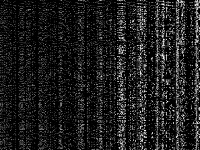 |
 |
 |
 |
| 280 | irish-electricity [MIPLIB] | Paula Carroll | Unit Commitment - Irish Test systems We submit a sample Unit Commitment test instance based on an Irish case study. We include a readme file, a solution file, and additional data so that users may generate further UC test instances. | - |  |
 |
 |
 |
| 281 | irp [MIPLIB] | MIPLIB submission pool | Imported from the MIPLIB2010 submissions. | - |  |
 |
 |
 |
| 282 | istanbul-no-cutoff [MIPLIB] | Utz-Uwe Haus | Exact MILP reformulation using binary decision diagrams to obtain scenario bundles of 2-stage stochastic expected shortest path and expected maximum flow problem with decision dependent scenario probabilities. Notes: * very few binary variables * for each fixing of the binaries a system of equations computing conditioned probabilities remains | - |  |
 |
 |
 |
| 283 | ivu06 [MIPLIB] | S. Weider | Set partitioning instance resulting from a column generation algorithm used for duty scheduling in public transportation. Solved in June 2014 using CPLEX 12.6 with 48 threads in about 25 days. | ivu |  |
 |
 |
 |
| 284 | ivu52 [MIPLIB] | S. Weider | Set partitioning instance resulting from a column generation algorithm used for duty scheduling in public transportation. Solved in June 2014 using CPLEX 12.6 with 48 threads in about 25 days. | ivu |  |
 |
 |
 |
| 285 | k16x240b [MIPLIB] | MIPLIB submission pool | Imported from the MIPLIB2010 submissions. | fixed-cost-network-flow |  |
 |
 |
 |
| 286 | k1mushroom [MIPLIB] | Gleb Belov | Linearized Constraint Programming models of the MiniZinc Challenges 2012-2016. I should be able to produce versions with indicator constraints supported by Gurobi and CPLEX, however don't know if you can use them and if there is a standard format. These MPS were produced by Gurobi 7.0.2 using the MiniZinc develop branch on eb536656062ca13325a96b5d0881742c7d0e3c38 | k1mushroom |  |
 |
 |
 |
| 287 | k1mushroomi [MIPLIB] | Gleb Belov | These are the instances from MiniZinc Challenges 2012-2016 (see www.minizinc.org), compiled for MIP WITH INDICATOR CONSTRAINTS using the develop branch of MiniZinc and CPLEX 12.7.1 on 30 April 2017. Thus, these instances can only be handled by solvers accepting indicator constraints. For instances compiled with big-M/domain decomposition only, see my previous submission to MIPLIB.To recompile, create a directory MODELS, a list lst12_16.txt of the instances with full paths to mzn/dzn files of each instance per line, and say$> ~/install/libmzn/tests/benchmarking/mzn-test.py -l ../lst12_16.txt -slvPrf MZN-CPLEX -debug 1 -addOption "-timeout 3 -D fIndConstr=true -D fMIPdomains=false" -useJoinedName "-writeModel MODELS_IND/%s.mps" Alternatively, you can compile individual instance as follows: $> mzn-cplex -v -s -G linear -output-time ../challenge_2012_2016/mznc2016_probs/zephyrus/zephyrus.mzn ../challenge_2012_2016/mznc2016_p/zephyrus/14__8__6__3.dzn -a -timeout 3 -D fIndConstr=true -D fMIPdomains=false -writeModel MODELS_IND/challenge_2012_2016mznc2016_probszephyruszephyrusmzn-challenge_2012_2016mznc2016_probszephyrus14__8__6__3dzn.mps | k1mushroom |  |
 |
 |
 |
| 288 | khb05250 [MIPLIB] | MIPLIB submission pool | Imported from the MIPLIB2010 submissions. | - |  |
 |
 |
 |
| 289 | kosova1 [MIPLIB] | George Fonseca | Educational timetabling problems from several real schools/universities around the world. These instances were originally expressed in the xhstt file format [1] and formulated as Integer Programming models as described at [2]. | timetabling |  |
 |
 |
 |
| 290 | l2p12 [MIPLIB] | Gleb Belov | Linearized Constraint Programming models of the MiniZinc Challenges 2012-2016. I should be able to produce versions with indicator constraints supported by Gurobi and CPLEX, however don't know if you can use them and if there is a standard format. These MPS were produced by Gurobi 7.0.2 using the MiniZinc develop branch on eb536656062ca13325a96b5d0881742c7d0e3c38 | l2p |  |
 |
 |
 |
| 291 | l2p1i [MIPLIB] | Gleb Belov | These are the instances from MiniZinc Challenges 2012-2016 (see www.minizinc.org), compiled for MIP WITH INDICATOR CONSTRAINTS using the develop branch of MiniZinc and CPLEX 12.7.1 on 30 April 2017. Thus, these instances can only be handled by solvers accepting indicator constraints. For instances compiled with big-M/domain decomposition only, see my previous submission to MIPLIB.To recompile, create a directory MODELS, a list lst12_16.txt of the instances with full paths to mzn/dzn files of each instance per line, and say$> ~/install/libmzn/tests/benchmarking/mzn-test.py -l ../lst12_16.txt -slvPrf MZN-CPLEX -debug 1 -addOption "-timeout 3 -D fIndConstr=true -D fMIPdomains=false" -useJoinedName "-writeModel MODELS_IND/%s.mps" Alternatively, you can compile individual instance as follows: $> mzn-cplex -v -s -G linear -output-time ../challenge_2012_2016/mznc2016_probs/zephyrus/zephyrus.mzn ../challenge_2012_2016/mznc2016_p/zephyrus/14__8__6__3.dzn -a -timeout 3 -D fIndConstr=true -D fMIPdomains=false -writeModel MODELS_IND/challenge_2012_2016mznc2016_probszephyruszephyrusmzn-challenge_2012_2016mznc2016_probszephyrus14__8__6__3dzn.mps | l2p |  |
 |
 |
 |
| 292 | l2p2i [MIPLIB] | Gleb Belov | These are the instances from MiniZinc Challenges 2012-2016 (see www.minizinc.org), compiled for MIP WITH INDICATOR CONSTRAINTS using the develop branch of MiniZinc and CPLEX 12.7.1 on 30 April 2017. Thus, these instances can only be handled by solvers accepting indicator constraints. For instances compiled with big-M/domain decomposition only, see my previous submission to MIPLIB.To recompile, create a directory MODELS, a list lst12_16.txt of the instances with full paths to mzn/dzn files of each instance per line, and say$> ~/install/libmzn/tests/benchmarking/mzn-test.py -l ../lst12_16.txt -slvPrf MZN-CPLEX -debug 1 -addOption "-timeout 3 -D fIndConstr=true -D fMIPdomains=false" -useJoinedName "-writeModel MODELS_IND/%s.mps" Alternatively, you can compile individual instance as follows: $> mzn-cplex -v -s -G linear -output-time ../challenge_2012_2016/mznc2016_probs/zephyrus/zephyrus.mzn ../challenge_2012_2016/mznc2016_p/zephyrus/14__8__6__3.dzn -a -timeout 3 -D fIndConstr=true -D fMIPdomains=false -writeModel MODELS_IND/challenge_2012_2016mznc2016_probszephyruszephyrusmzn-challenge_2012_2016mznc2016_probszephyrus14__8__6__3dzn.mps | l2p |  |
 |
 |
 |
| 293 | lectsched-1 [MIPLIB] | Harald Schilly | University lecture scheduling instance | lectsched |  |
 |
 |
 |
| 294 | lectsched-2 [MIPLIB] | Harald Schilly | University lecture scheduling instance | lectsched |  |
 |
 |
 |
| 295 | lectsched-3 [MIPLIB] | Harald Schilly | University lecture scheduling instance | lectsched |  |
 |
 |
 |
| 296 | lectsched-4-obj [MIPLIB] | Harald Schilly | University lecture scheduling instance | lectsched |  |
 |
 |
 |
| 297 | lectsched-5-obj [MIPLIB] | Harald Schilly | scheduling lectures at university - smaller subset of data with objective to minimize certain overlappings | lectsched |  |
 |
 |
 |
| 298 | leo1 [MIPLIB] | COR@L test set | Instance coming from the COR@L test set with unknown origin | - |  |
 |
 |
 |
| 299 | leo2 [MIPLIB] | COR@L test set | Instance coming from the COR@L test set with unknown origin | - |  |
 |
 |
 |
| 300 | liu [MIPLIB] | X. Liu | Floorplan and placement problem in the physical design of VLSI circuits | - |  |
 |
 |
 |
| 301 | loopha13 [MIPLIB] | Hamideh | This is a Gams model which uses CPLEX as a solver. | - |  |
 |
 |
 |
| 302 | lotsize [MIPLIB] | Dinakar Gade, Simge Kucukyavuz | Multi-item lot sizing with service level constraints | - |  |
 |
 |
 |
| 303 | lr1dr02vc05v8a-t360 [MIPLIB] | Dimitri Papageorgiou | Maritime Inventory Routing Problem Library - Group 2 Instances. These instances are available at https://mirplib.scl.gatech.edu/instances, along with a host of additional information such as the underlying data used to generate the model, best known upper and lower bounds, and more. There are three sets of 24 instances (for a total of 72 instances) with a planning horizon of 120, 180, and 360 time periods, respectively. As of March 2016, Cplex and Gurobi could only solve one or two to provably optimality in less than an hour. | maritime | 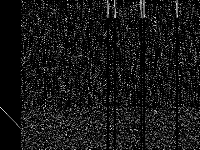 |
 |
 |
 |
| 304 | lr1dr04vc05v17a-t360 [MIPLIB] | Dimitri Papageorgiou | Maritime Inventory Routing Problem Library - Group 2 Instances. These instances are available at https://mirplib.scl.gatech.edu/instances, along with a host of additional information such as the underlying data used to generate the model, best known upper and lower bounds, and more. There are three sets of 24 instances (for a total of 72 instances) with a planning horizon of 120, 180, and 360 time periods, respectively. As of March 2016, Cplex and Gurobi could only solve one or two to provably optimality in less than an hour. | maritime |  |
 |
 |
 |
| 305 | lr1dr12vc10v70b-t360 [MIPLIB] | Dimitri Papageorgiou | Maritime Inventory Routing Problem Library - Group 2 Instances. These instances are available at https://mirplib.scl.gatech.edu/instances, along with a host of additional information such as the underlying data used to generate the model, best known upper and lower bounds, and more. There are three sets of 24 instances (for a total of 72 instances) with a planning horizon of 120, 180, and 360 time periods, respectively. As of March 2016, Cplex and Gurobi could only solve one or two to provably optimality in less than an hour. | maritime | 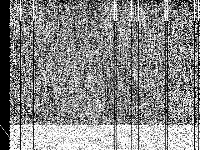 |
 |
 |
 |
| 306 | lr2-22dr3-333vc4v17a-t60 [MIPLIB] | Dimitri Papageorgiou | Maritime Inventory Routing Problem Library - Group 1 Instances. These instances are available at https://mirplib.scl.gatech.edu/instances, along with a host of additional information such as the underlying data used to generate the model, best known upper and lower bounds, and more. As of 2012, Group 1 instances gave Cplex and Gurobi tremendous difficulty finding a single feasible solution. | maritime | 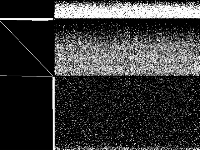 |
 |
 |
 |
| 307 | lrn [MIPLIB] | MIPLIB submission pool | Imported from the MIPLIB2010 submissions. | - |  |
 |
 |
 |
| 308 | mad [MIPLIB] | Koichi Fujii | Mean-Absolute Deviation Model for Car Dealerships | - |  |
 |
 |
 |
| 309 | manna81 [MIPLIB] | MIPLIB submission pool | Imported from the MIPLIB2010 submissions. | - |  |
 |
 |
 |
| 310 | map14860-20 [MIPLIB] | Kiyan Ahmadizadeh | Land parcel selection problems motivated by Red-Cockaded Woodpecker conservation problem | map |  |
 |
 |
 |
| 311 | mappingmesh3x3mpeg2i [MIPLIB] | Gleb Belov | These are the instances from MiniZinc Challenges 2012-2016 (see www.minizinc.org), compiled for MIP WITH INDICATOR CONSTRAINTS using the develop branch of MiniZinc and CPLEX 12.7.1 on 30 April 2017. Thus, these instances can only be handled by solvers accepting indicator constraints. For instances compiled with big-M/domain decomposition only, see my previous submission to MIPLIB.To recompile, create a directory MODELS, a list lst12_16.txt of the instances with full paths to mzn/dzn files of each instance per line, and say$> ~/install/libmzn/tests/benchmarking/mzn-test.py -l ../lst12_16.txt -slvPrf MZN-CPLEX -debug 1 -addOption "-timeout 3 -D fIndConstr=true -D fMIPdomains=false" -useJoinedName "-writeModel MODELS_IND/%s.mps" Alternatively, you can compile individual instance as follows: $> mzn-cplex -v -s -G linear -output-time ../challenge_2012_2016/mznc2016_probs/zephyrus/zephyrus.mzn ../challenge_2012_2016/mznc2016_p/zephyrus/14__8__6__3.dzn -a -timeout 3 -D fIndConstr=true -D fMIPdomains=false -writeModel MODELS_IND/challenge_2012_2016mznc2016_probszephyruszephyrusmzn-challenge_2012_2016mznc2016_probszephyrus14__8__6__3dzn.mps | mapping |  |
 |
 |
 |
| 312 | mario-t-hard5i [MIPLIB] | Gleb Belov | These are the instances from MiniZinc Challenges 2012-2016 (see www.minizinc.org), compiled for MIP WITH INDICATOR CONSTRAINTS using the develop branch of MiniZinc and CPLEX 12.7.1 on 30 April 2017. Thus, these instances can only be handled by solvers accepting indicator constraints. For instances compiled with big-M/domain decomposition only, see my previous submission to MIPLIB.To recompile, create a directory MODELS, a list lst12_16.txt of the instances with full paths to mzn/dzn files of each instance per line, and say$> ~/install/libmzn/tests/benchmarking/mzn-test.py -l ../lst12_16.txt -slvPrf MZN-CPLEX -debug 1 -addOption "-timeout 3 -D fIndConstr=true -D fMIPdomains=false" -useJoinedName "-writeModel MODELS_IND/%s.mps" Alternatively, you can compile individual instance as follows: $> mzn-cplex -v -s -G linear -output-time ../challenge_2012_2016/mznc2016_probs/zephyrus/zephyrus.mzn ../challenge_2012_2016/mznc2016_p/zephyrus/14__8__6__3.dzn -a -timeout 3 -D fIndConstr=true -D fMIPdomains=false -writeModel MODELS_IND/challenge_2012_2016mznc2016_probszephyruszephyrusmzn-challenge_2012_2016mznc2016_probszephyrus14__8__6__3dzn.mps | mario |  |
 |
 |
 |
| 313 | maritime-jg3d9 [MIPLIB] | Dimitri Papageorgiou | Maritime Inventory Routing Problems: Jiang-Grossmann Instances. These instances are available at https://mirplib.scl.gatech.edu/instances, along with a host of additional information such as the underlying data used to generate the model, best known upper and lower bounds, and more. They involve a single product maritime inventory routing problem and explore the use of continuous and discrete time models. A continuous-time model based on time slots for single docks is used for some instances. A model based on event points to handle parallel docks is used in others. A discrete time model based on a single commodity fixed-charge network flow problem (FCNF) is used for other instances. All the models are solved for multiple randomly generated instances of different problems to compare their computational efficiency. | maritime |  |
 |
 |
 |
| 314 | markshare_4_0 [MIPLIB] | G. Cornuéjols, M. Dawande | Market sharing problem | markshare |  |
 |
 |
 |
| 315 | markshare_5_0 [MIPLIB] | G. Cornuéjols, M. Dawande | Market sharing problem | markshare |  |
 |
 |
 |
| 316 | markshare1 [MIPLIB] | G. Cornuéjols, M. Dawande | Market sharing problem | markshare |  |
 |
 |
 |
| 317 | markshare2 [MIPLIB] | G. Cornuéjols, M. Dawande | Market sharing problem | markshare |  |
 |
 |
 |
| 318 | mas74 [MIPLIB] | MIPLIB submission pool | Imported from the MIPLIB2010 submissions. | - |  |
 |
 |
 |
| 319 | mas76 [MIPLIB] | MIPLIB submission pool | Imported from the MIPLIB2010 submissions. | - |  |
 |
 |
 |
| 320 | maxgasflow [MIPLIB] | G. Gamrath | Transport momentum maximization in a capacitated gas network, allowing cycles. Solved by Gurobi 5.0 in 2882 seconds (May 2012). | - |  |
 |
 |
 |
| 321 | mc8 [MIPLIB] | F. Ortega, L. Wolsey | Fixed cost network flow problems | mc |  |
 |
 |
 |
| 322 | mcsched [MIPLIB] | Q. Chen | Unknown application from COR@L | - |  |
 |
 |
 |
| 323 | mik-250-20-75-5 [MIPLIB] | MIPLIB submission pool | Imported from the MIPLIB2010 submissions. | mik_250 |  |
 |
 |
 |
| 324 | milo-v12-6-r1-58-1 [MIPLIB] | Tamas Terlaky | The models come from structural design optimization where the objective is to minimize the total weight of 2 and 3 dimensional cantilevers. The 2D examples are simpler, and GuRobi can solve the 40_1 and 58_1 instances, while struggles with 75_1. The 3D examples are more challenging. The x_0 and x_1 models are two different modeling of the same identical problems, so their optimal value is the same. The 1_x and 2_x problems are solved by GuRoBi, the 3_x and 4_x are not solved in reasonable time. | milo |  |
 |
 |
 |
| 325 | milo-v12-6-r1-75-1 [MIPLIB] | Tamas Terlaky | The models come from structural design optimization where the objective is to minimize the total weight of 2 and 3 dimensional cantilevers. The 2D examples are simpler, and GuRobi can solve the 40_1 and 58_1 instances, while struggles with 75_1. The 3D examples are more challenging. The x_0 and x_1 models are two different modeling of the same identical problems, so their optimal value is the same. The 1_x and 2_x problems are solved by GuRoBi, the 3_x and 4_x are not solved in reasonable time. | milo |  |
 |
 |
 |
| 326 | milo-v12-6-r2-40-1 [MIPLIB] | Tamas Terlaky | The models come from structural design optimization where the objective is to minimize the total weight of 2 and 3 dimensional cantilevers. The 2D examples are simpler, and GuRobi can solve the 40_1 and 58_1 instances, while struggles with 75_1. The 3D examples are more challenging. The x_0 and x_1 models are two different modeling of the same identical problems, so their optimal value is the same. The 1_x and 2_x problems are solved by GuRoBi, the 3_x and 4_x are not solved in reasonable time. | milo |  |
 |
 |
 |
| 327 | milo-v13-4-3d-3-0 [MIPLIB] | Tamas Terlaky | The models come from structural design optimization where the objective is to minimize the total weight of 2 and 3 dimensional cantilevers. The 2D examples are simpler, and GuRobi can solve the 40_1 and 58_1 instances, while struggles with 75_1. The 3D examples are more challenging. The x_0 and x_1 models are two different modeling of the same identical problems, so their optimal value is the same. The 1_x and 2_x problems are solved by GuRoBi, the 3_x and 4_x are not solved in reasonable time. | milo |  |
 |
 |
 |
| 328 | milo-v13-4-3d-4-0 [MIPLIB] | Tamas Terlaky | The models come from structural design optimization where the objective is to minimize the total weight of 2 and 3 dimensional cantilevers. The 2D examples are simpler, and GuRobi can solve the 40_1 and 58_1 instances, while struggles with 75_1. The 3D examples are more challenging. The x_0 and x_1 models are two different modeling of the same identical problems, so their optimal value is the same. The 1_x and 2_x problems are solved by GuRoBi, the 3_x and 4_x are not solved in reasonable time. | milo |  |
 |
 |
 |
| 329 | mine-166-5 [MIPLIB] | Andreas Bley | Multi-period mine production scheduling instance | mine | 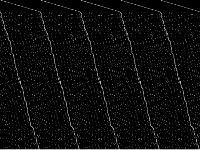 |
 |
 |
 |
| 330 | mine-90-10 [MIPLIB] | Andreas Bley | Multi-period mine production scheduling instance | mine | 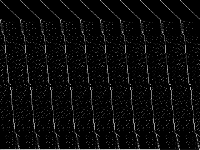 |
 |
 |
 |
| 331 | mining [MIPLIB] | Kelly Eurek | Unspecified mining application. Mark Zuckerberg suggests the following tightening of one class of constraints: The variables in this problem (except for the last one, x348921, which is fixed to 1 and does not appear in any constraint) are arranged in groups of 20, and there are three classes of precedence constraints (or more accurately, implication constraints): 1) For each variable index i=-,348920, if i mod 20 > 0 then there is a constraint x_i 2) If i mod 20 = and i>20 then there is a constraint x_i = x21 >= x41 >=-) 3) and for all other i there is a constraint x_i Graphically, we can represent the variables as a table with height twenty and width 348920 / 20, with indices 1,-,20 going down the left-most column, then 21,-,40 going down the next column to the right, etc. There is then a precedence constraint (1) from each variable in a column to the one below it, a precedence constraint (2) from the topmost entry in each column to its neighbor on the left, and an "OR" precedence constraint (3) from each entry that isn't on top of a column, requiring that if it has value 1 then either the one above it or the one to its left must have value 1 as well. But in fact this OR precedence (3) can be replaced with a simple precedence constraint from each variable to the one at its left. To see this note that in any column, the first type of precedence constraint will require that a feasible solution must be a contiguous sequence of 1's from some point in the column until the bottom. Consider column c > 1. The topmost 1 in this column, by precedence constraints (3) (or if the topmost is at the top of the column, then by precedence constraints (2)) implies that the variable to its left (in column c-1) is also 1, which implies that the contiguous sequence of 1's in column c-1 must be at least as high as the sequence in column c. Thus for every 1 in column c, the entry to its left in column c-1 must also be 1. | - |  |
 |
 |
 |
| 332 | minutedispatchstrategy [MIPLIB] | Mark Husted | Dispatch Strategy for a small micro-grid | - |  |
 |
 |
 |
| 333 | misc04inf [MIPLIB] | MIPLIB submission pool | Imported from the MIPLIB2010 submissions. | misc |  |
 |
 |
 |
| 334 | misc05inf [MIPLIB] | MIPLIB submission pool | Imported from the MIPLIB2010 submissions. | misc |  |
 |
 |
 |
| 335 | misc07 [MIPLIB] | MIPLIB submission pool | Imported from the MIPLIB2010 submissions. | misc | 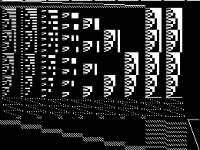 |
 |
 |
 |
| 336 | mitre [MIPLIB] | MIPLIB submission pool | Imported from the MIPLIB2010 submissions. | - |  |
 |
 |
 |
| 337 | mkc [MIPLIB] | J. Kalagnanam, M. Dawande | Multiple knapsack problem with color constraints. John Forrest, Laszlo Ladanyi and Jayant Kalagnanam solved this instance by reformulation in 1999. | - |  |
 |
 |
 |
| 338 | mkc1 [MIPLIB] | MIPLIB submission pool | Imported from the MIPLIB2010 submissions. | - |  |
 |
 |
 |
| 339 | mod008inf [MIPLIB] | MIPLIB submission pool | Imported from the MIPLIB2010 submissions. | mod |  |
 |
 |
 |
| 340 | mod010 [MIPLIB] | MIPLIB submission pool | Imported from the MIPLIB2010 submissions. | mod | 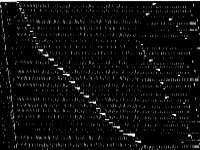 |
 |
 |
 |
| 341 | mod011 [MIPLIB] | MIPLIB submission pool | Imported from the MIPLIB2010 submissions. | mod |  |
 |
 |
 |
| 342 | moj-mining [MIPLIB] | Alexandra M. Newman | open pit mine production scheduling problem with inventory | - |  |
 |
 |
 |
| 343 | momentum1 [MIPLIB] | T. Koch | Snapshot based UMTS planning problem, having a very wide dynamic range in the matrix coefficients and tending to be numerically unstable. Solved with Gurobi 4.5.1 on a 12-core Linux system in 3590.41 sec. | momentum |  |
 |
 |
 |
| 344 | momentum2 [MIPLIB] | T. Koch | Snapshot based UMTS planning problem, having a very wide dynamic range in the matrix coefficients and tending to be numerically unstable | momentum | 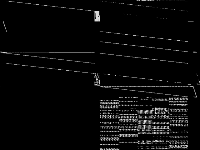 |
 |
 |
 |
| 345 | momentum3 [MIPLIB] | T. Koch | Snapshot based UMTS planning problem, having a very wide dynamic range in the matrix coefficients and tending to be numerically unstable | momentum |  |
 |
 |
 |
| 346 | mrcpspj30-15-5i [MIPLIB] | Gleb Belov | These are the instances from MiniZinc Challenges 2012-2016 (see www.minizinc.org), compiled for MIP WITH INDICATOR CONSTRAINTS using the develop branch of MiniZinc and CPLEX 12.7.1 on 30 April 2017. Thus, these instances can only be handled by solvers accepting indicator constraints. For instances compiled with big-M/domain decomposition only, see my previous submission to MIPLIB.To recompile, create a directory MODELS, a list lst12_16.txt of the instances with full paths to mzn/dzn files of each instance per line, and say$> ~/install/libmzn/tests/benchmarking/mzn-test.py -l ../lst12_16.txt -slvPrf MZN-CPLEX -debug 1 -addOption "-timeout 3 -D fIndConstr=true -D fMIPdomains=false" -useJoinedName "-writeModel MODELS_IND/%s.mps" Alternatively, you can compile individual instance as follows: $> mzn-cplex -v -s -G linear -output-time ../challenge_2012_2016/mznc2016_probs/zephyrus/zephyrus.mzn ../challenge_2012_2016/mznc2016_p/zephyrus/14__8__6__3.dzn -a -timeout 3 -D fIndConstr=true -D fMIPdomains=false -writeModel MODELS_IND/challenge_2012_2016mznc2016_probszephyruszephyrusmzn-challenge_2012_2016mznc2016_probszephyrus14__8__6__3dzn.mps | mrcpspj |  |
 |
 |
 |
| 347 | mrcpspj30-17-10i [MIPLIB] | Gleb Belov | These are the instances from MiniZinc Challenges 2012-2016 (see www.minizinc.org), compiled for MIP WITH INDICATOR CONSTRAINTS using the develop branch of MiniZinc and CPLEX 12.7.1 on 30 April 2017. Thus, these instances can only be handled by solvers accepting indicator constraints. For instances compiled with big-M/domain decomposition only, see my previous submission to MIPLIB.To recompile, create a directory MODELS, a list lst12_16.txt of the instances with full paths to mzn/dzn files of each instance per line, and say$> ~/install/libmzn/tests/benchmarking/mzn-test.py -l ../lst12_16.txt -slvPrf MZN-CPLEX -debug 1 -addOption "-timeout 3 -D fIndConstr=true -D fMIPdomains=false" -useJoinedName "-writeModel MODELS_IND/%s.mps" Alternatively, you can compile individual instance as follows: $> mzn-cplex -v -s -G linear -output-time ../challenge_2012_2016/mznc2016_probs/zephyrus/zephyrus.mzn ../challenge_2012_2016/mznc2016_p/zephyrus/14__8__6__3.dzn -a -timeout 3 -D fIndConstr=true -D fMIPdomains=false -writeModel MODELS_IND/challenge_2012_2016mznc2016_probszephyruszephyrusmzn-challenge_2012_2016mznc2016_probszephyrus14__8__6__3dzn.mps | mrcpspj |  |
 |
 |
 |
| 348 | mrcpspj30-53-3i [MIPLIB] | Gleb Belov | These are the instances from MiniZinc Challenges 2012-2016 (see www.minizinc.org), compiled for MIP WITH INDICATOR CONSTRAINTS using the develop branch of MiniZinc and CPLEX 12.7.1 on 30 April 2017. Thus, these instances can only be handled by solvers accepting indicator constraints. For instances compiled with big-M/domain decomposition only, see my previous submission to MIPLIB.To recompile, create a directory MODELS, a list lst12_16.txt of the instances with full paths to mzn/dzn files of each instance per line, and say$> ~/install/libmzn/tests/benchmarking/mzn-test.py -l ../lst12_16.txt -slvPrf MZN-CPLEX -debug 1 -addOption "-timeout 3 -D fIndConstr=true -D fMIPdomains=false" -useJoinedName "-writeModel MODELS_IND/%s.mps" Alternatively, you can compile individual instance as follows: $> mzn-cplex -v -s -G linear -output-time ../challenge_2012_2016/mznc2016_probs/zephyrus/zephyrus.mzn ../challenge_2012_2016/mznc2016_p/zephyrus/14__8__6__3.dzn -a -timeout 3 -D fIndConstr=true -D fMIPdomains=false -writeModel MODELS_IND/challenge_2012_2016mznc2016_probszephyruszephyrusmzn-challenge_2012_2016mznc2016_probszephyrus14__8__6__3dzn.mps | mrcpspj |  |
 |
 |
 |
| 349 | msc98-ip [MIPLIB] | E-Plus, D. Bienstock, A. Bley, R. Wessäly | Min-cost network dimensioning problems with a finite set of link capacities for each bidirected link, unsplittable shortest path routing, path restoration for single node failures, and routing path length restrictions | - |  |
 |
 |
 |
| 350 | mspsphard01i [MIPLIB] | Gleb Belov | These are the instances from MiniZinc Challenges 2012-2016 (see www.minizinc.org), compiled for MIP WITH INDICATOR CONSTRAINTS using the develop branch of MiniZinc and CPLEX 12.7.1 on 30 April 2017. Thus, these instances can only be handled by solvers accepting indicator constraints. For instances compiled with big-M/domain decomposition only, see my previous submission to MIPLIB.To recompile, create a directory MODELS, a list lst12_16.txt of the instances with full paths to mzn/dzn files of each instance per line, and say$> ~/install/libmzn/tests/benchmarking/mzn-test.py -l ../lst12_16.txt -slvPrf MZN-CPLEX -debug 1 -addOption "-timeout 3 -D fIndConstr=true -D fMIPdomains=false" -useJoinedName "-writeModel MODELS_IND/%s.mps" Alternatively, you can compile individual instance as follows: $> mzn-cplex -v -s -G linear -output-time ../challenge_2012_2016/mznc2016_probs/zephyrus/zephyrus.mzn ../challenge_2012_2016/mznc2016_p/zephyrus/14__8__6__3.dzn -a -timeout 3 -D fIndConstr=true -D fMIPdomains=false -writeModel MODELS_IND/challenge_2012_2016mznc2016_probszephyruszephyrusmzn-challenge_2012_2016mznc2016_probszephyrus14__8__6__3dzn.mps | mspsp |  |
 |
 |
 |
| 351 | mspsphard03i [MIPLIB] | Gleb Belov | These are the instances from MiniZinc Challenges 2012-2016 (see www.minizinc.org), compiled for MIP WITH INDICATOR CONSTRAINTS using the develop branch of MiniZinc and CPLEX 12.7.1 on 30 April 2017. Thus, these instances can only be handled by solvers accepting indicator constraints. For instances compiled with big-M/domain decomposition only, see my previous submission to MIPLIB.To recompile, create a directory MODELS, a list lst12_16.txt of the instances with full paths to mzn/dzn files of each instance per line, and say$> ~/install/libmzn/tests/benchmarking/mzn-test.py -l ../lst12_16.txt -slvPrf MZN-CPLEX -debug 1 -addOption "-timeout 3 -D fIndConstr=true -D fMIPdomains=false" -useJoinedName "-writeModel MODELS_IND/%s.mps" Alternatively, you can compile individual instance as follows: $> mzn-cplex -v -s -G linear -output-time ../challenge_2012_2016/mznc2016_probs/zephyrus/zephyrus.mzn ../challenge_2012_2016/mznc2016_p/zephyrus/14__8__6__3.dzn -a -timeout 3 -D fIndConstr=true -D fMIPdomains=false -writeModel MODELS_IND/challenge_2012_2016mznc2016_probszephyruszephyrusmzn-challenge_2012_2016mznc2016_probszephyrus14__8__6__3dzn.mps | mspsp |  |
 |
 |
 |
| 352 | mtest4ma [MIPLIB] | MIPLIB submission pool | Imported from the MIPLIB2010 submissions. | - |  |
 |
 |
 |
| 353 | mushroom-best [MIPLIB] | Berk Ustun | MIP to create optimized data-driven scoring systems. See: https://github.com/ustunb/miplib2017-slim#miplib2017-slim for a description. | ustun |  |
 |
 |
 |
| 354 | mzzv11 [MIPLIB] | S. Lukac | Railway slot allocation problems | - |  |
 |
 |
 |
| 355 | mzzv42z [MIPLIB] | MIPLIB submission pool | Imported from the MIPLIB2010 submissions. | - |  |
 |
 |
 |
| 356 | n13-3 [MIPLIB] | A. Atamtürk | Capacitated network design problem | nxy-z |  |
 |
 |
 |
| 357 | n2seq36f [MIPLIB] | R. Meirich | Static line planning models on the Dutch IC network | nseq |  |
 |
 |
 |
| 358 | n2seq36q [MIPLIB] | R. Meirich | Static line planning models on the Dutch IC network | nseq |  |
 |
 |
 |
| 359 | n3707 [MIPLIB] | J. Aronson | Fixed charge transportation problem | n37 |  |
 |
 |
 |
| 360 | n3div36 [MIPLIB] | R. Meirich | Static line planning models on the Dutch IC network. Solved with Gurobi 4.5.1 on a 12-core Linux system in 1700.37 sec. | nseq |  |
 |
 |
 |
| 361 | n3seq24 [MIPLIB] | R. Meirich | Static line planning models on the Dutch IC network | nseq |  |
 |
 |
 |
| 362 | n5-3 [MIPLIB] | A. Atamtürk | Capacitated network design problem | nxy-z |  |
 |
 |
 |
| 363 | n6-3 [MIPLIB] | A. Atamtürk | Capacitated network design problem | nxy-z |  |
 |
 |
 |
| 364 | n7-3 [MIPLIB] | A. Atamtürk | Capacitated network design problem | nxy-z |  |
 |
 |
 |
| 365 | n9-3 [MIPLIB] | A. Atamtürk | Capacitated network design problem | nxy-z |  |
 |
 |
 |
| 366 | nag [MIPLIB] | N. Shenoy | Unknown Application from COR@L | - |  |
 |
 |
 |
| 367 | nb10tb [MIPLIB] | Serge Bisaillon | Forestry industry model | - |  |
 |
 |
 |
| 368 | neos-1061020 [MIPLIB] | NEOS Server Submission | Imported from the MIPLIB2010 submissions. | neos-pseudoapplication-11 |  |
 |
 |
 |
| 369 | neos-1067731 [MIPLIB] | NEOS Server Submission | Imported from the MIPLIB2010 submissions. | neos-pseudoapplication-11 |  |
 |
 |
 |
| 370 | neos-1112782 [MIPLIB] | NEOS Server Submission | Instance coming from the NEOS Server with unknown application | neos-pseudoapplication-89 |  |
 |
 |
 |
| 371 | neos-1112787 [MIPLIB] | NEOS Server Submission | Instance coming from the NEOS Server with unknown application | neos-pseudoapplication-89 |  |
 |
 |
 |
| 372 | neos-1122047 [MIPLIB] | NEOS Server Submission | Imported from the MIPLIB2010 submissions. | neos-pseudoapplication-46 |  |
 |
 |
 |
| 373 | neos-1140050 [MIPLIB] | NEOS Server Submission | Instance coming from the NEOS Server with unknown application. Infeasibility claimed by CPLEX 12.6 and CPLEX 12.6.1 with extreme numerical caution emphasi after 4 and 2 hours computation, respectively. | neos-pseudoapplication-101 |  |
 |
 |
 |
| 374 | neos-1171448 [MIPLIB] | NEOS Server Submission | Imported from the MIPLIB2010 submissions. | neos-pseudoapplication-8 |  |
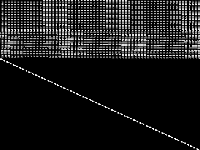 |
 |
 |
| 375 | neos-1171737 [MIPLIB] | NEOS Server Submission | Instance coming from the NEOS Server with unknown application | neos-pseudoapplication-80 |  |
 |
 |
 |
| 376 | neos-1223462 [MIPLIB] | NEOS Server Submission | Imported from the MIPLIB2010 submissions. | neos-pseudoapplication-12 |  |
 |
 |
 |
| 377 | neos-1324574 [MIPLIB] | NEOS Server Submission | Imported from the MIPLIB2010 submissions. | neos-pseudoapplication-99 |  |
 |
 |
 |
| 378 | neos-1330346 [MIPLIB] | NEOS Server Submission | Imported from the MIPLIB2010 submissions. | neos-pseudoapplication-49 | 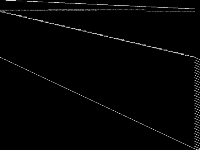 |
 |
 |
 |
| 379 | neos-1337307 [MIPLIB] | NEOS Server Submission | Instance coming from the NEOS Server with unknown application | neos-pseudoapplication-13 |  |
 |
 |
 |
| 380 | neos-1354092 [MIPLIB] | NEOS Server Submission | Imported from the MIPLIB2010 submissions. | neos-pseudoapplication-47 |  |
 |
 |
 |
| 381 | neos-1367061 [MIPLIB] | NEOS Server Submission | Imported from the MIPLIB2010 submissions. | neos-pseudoapplication-76 |  |
 |
 |
 |
| 382 | neos-1396125 [MIPLIB] | NEOS Server Submission | Instance coming from the NEOS Server with unknown application | neos-pseudoapplication-96 |  |
 |
 |
 |
| 383 | neos-1420546 [MIPLIB] | NEOS Server Submission | Imported from the MIPLIB2010 submissions. | neos-pseudoapplication-9 | 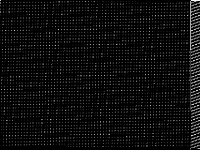 |
 |
 |
 |
| 384 | neos-1420790 [MIPLIB] | NEOS Server Submission | Imported from the MIPLIB2010 submissions. | neos-pseudoapplication-9 |  |
 |
 |
 |
| 385 | neos-1423785 [MIPLIB] | NEOS Server Submission | Imported from the MIPLIB2010 submissions. | neos-pseudoapplication-98 |  |
 |
 |
 |
| 386 | neos-1425699 [MIPLIB] | NEOS Server Submission | Imported from the MIPLIB2010 submissions. | neos-pseudoapplication-37 |  |
 |
 |
 |
| 387 | neos-1430701 [MIPLIB] | NEOS Server Submission | Imported from the MIPLIB2010 submissions. | neos-pseudoapplication-8 |  |
 |
 |
 |
| 388 | neos-1442119 [MIPLIB] | NEOS Server Submission | Instance coming from the NEOS Server with unknown application | neos-pseudoapplication-8 |  |
 |
 |
 |
| 389 | neos-1445532 [MIPLIB] | NEOS Server Submission | Imported from the MIPLIB2010 submissions. | neos-pseudoapplication-88 |  |
 |
 |
 |
| 390 | neos-1445738 [MIPLIB] | NEOS Server Submission | Imported from the MIPLIB2010 submissions. | neos-pseudoapplication-88 |  |
 |
 |
 |
| 391 | neos-1445743 [MIPLIB] | NEOS Server Submission | Imported from the MIPLIB2010 submissions. | neos-pseudoapplication-88 |  |
 |
 |
 |
| 392 | neos-1445765 [MIPLIB] | NEOS Server Submission | Imported from the MIPLIB2010 submissions. | neos-pseudoapplication-88 |  |
 |
 |
 |
| 393 | neos-1456979 [MIPLIB] | NEOS Server Submission | Imported from the MIPLIB2010 submissions. | neos-pseudoapplication-102 |  |
 |
 |
 |
| 394 | neos-1516309 [MIPLIB] | NEOS Server Submission | Imported from the MIPLIB2010 submissions. | neos-pseudoapplication-26 |  |
 |
 |
 |
| 395 | neos-1582420 [MIPLIB] | NEOS Server Submission | Collection of anonymous submissions to the NEOS Server for Optimization | neos-pseudoapplication-10 |  |
 |
 |
 |
| 396 | neos-1593097 [MIPLIB] | NEOS Server Submission | Imported from the MIPLIB2010 submissions. | neos-pseudoapplication-77 |  |
 |
 |
 |
| 397 | neos-1599274 [MIPLIB] | NEOS Server Submission | Imported from the MIPLIB2010 submissions. | neos-pseudoapplication-26 |  |
 |
 |
 |
| 398 | neos-1601936 [MIPLIB] | NEOS Server Submission | Instance coming from the NEOS Server with unknown application | neos-pseudoapplication-5 |  |
 |
 |
 |
| 399 | neos-1603965 [MIPLIB] | NEOS Server Submission | Imported from the MIPLIB2010 submissions. | neos-pseudoapplication-35 |  |
 |
 |
 |
| 400 | neos-1605061 [MIPLIB] | NEOS Server Submission | Instance coming from the NEOS Server with unknown application | neos-pseudoapplication-5 |  |
 |
 |
 |
| 401 | neos-2075418-temuka [MIPLIB] | Hans Mittelmann | Collection of anonymous submissions to the NEOS Server for Optimization | neos-pseudoapplication-62 |  |
 |
 |
 |
| 402 | neos-2294525-abba [MIPLIB] | Jeff Linderoth | (None provided) | neos-pseudoapplication-46 |  |
 |
 |
 |
| 403 | neos-2328163-agri [MIPLIB] | Jeff Linderoth | (None provided) | neos-pseudoapplication-36 |  |
 |
 |
 |
| 404 | neos-2624317-amur [MIPLIB] | Jeff Linderoth | (None provided) | neos-pseudoapplication-7 |  |
 |
 |
 |
| 405 | neos-2626858-aoos [MIPLIB] | Jeff Linderoth | (None provided) | neos-pseudoapplication-7 |  |
 |
 |
 |
| 406 | neos-2629914-sudost [MIPLIB] | Jeff Linderoth | (None provided) | neos-pseudoapplication-66 |  |
 |
 |
 |
| 407 | neos-2652786-brda [MIPLIB] | Jeff Linderoth | (None provided) | neos-pseudoapplication-7 |  |
 |
 |
 |
| 408 | neos-2656603-coxs [MIPLIB] | Jeff Linderoth | (None provided) | neos-pseudoapplication-7 |  |
 |
 |
 |
| 409 | neos-2657525-crna [MIPLIB] | Jeff Linderoth | (None provided) | neos-pseudoapplication-7 |  |
 |
 |
 |
| 410 | neos-2669500-cust [MIPLIB] | Jeff Linderoth | (None provided) | neos-pseudoapplication-52 |  |
 |
 |
 |
| 411 | neos-2746589-doon [MIPLIB] | Jeff Linderoth | (None provided) | neos-pseudoapplication-52 |  |
 |
 |
 |
| 412 | neos-2974461-ibar [MIPLIB] | Jeff Linderoth | (None provided) | neos-pseudoapplication-45 |  |
 |
 |
 |
| 413 | neos-2978193-inde [MIPLIB] | Jeff Linderoth | (None provided) | neos-pseudoapplication-5 |  |
 |
 |
 |
| 414 | neos-2978205-isar [MIPLIB] | Jeff Linderoth | (None provided) | neos-pseudoapplication-77 |  |
 |
 |
 |
| 415 | neos-2987202-jeir [MIPLIB] | Jeff Linderoth | (None provided) | neos-pseudoapplication-82 |  |
 |
 |
 |
| 416 | neos-2987310-joes [MIPLIB] | Jeff Linderoth | (None provided) | neos-pseudoapplication-82 |  |
 |
 |
 |
| 417 | neos-2991472-kalu [MIPLIB] | Jeff Linderoth | (None provided) | neos-pseudoapplication-77 |  |
 |
 |
 |
| 418 | neos-3004026-krka [MIPLIB] | Jeff Linderoth | (None provided) | neos-pseudoapplication-38 |  |
 |
 |
 |
| 419 | neos-3009394-lami [MIPLIB] | Jeff Linderoth | (None provided) | neos-pseudoapplication-90 |  |
 |
 |
 |
| 420 | neos-3024952-loue [MIPLIB] | Jeff Linderoth | (None provided) | neos-pseudoapplication-86 |  |
 |
 |
 |
| 421 | neos-3025225-shelon [MIPLIB] | Hans Mittelmann | Collection of anonymous submissions to the NEOS Server for Optimization | neos-pseudoapplication-64 |  |
 |
 |
 |
| 422 | neos-3045796-mogo [MIPLIB] | Jeff Linderoth | (None provided) | neos-pseudoapplication-22 |  |
 |
 |
 |
| 423 | neos-3046601-motu [MIPLIB] | Jeff Linderoth | (None provided) | neos-pseudoapplication-90 |  |
 |
 |
 |
| 424 | neos-3046615-murg [MIPLIB] | Jeff Linderoth | (None provided) | neos-pseudoapplication-90 |  |
 |
 |
 |
| 425 | neos-3048764-nadi [MIPLIB] | Jeff Linderoth | (None provided) | neos-pseudoapplication-43 |  |
 |
 |
 |
| 426 | neos-3065804-namu [MIPLIB] | Jeff Linderoth | (None provided) | neos-pseudoapplication-41 |  |
 |
 |
 |
| 427 | neos-3068746-nene [MIPLIB] | Jeff Linderoth | (None provided) | neos-pseudoapplication-45 |  |
 |
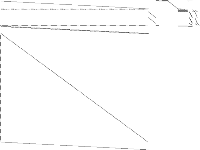 |
 |
| 428 | neos-3072252-nete [MIPLIB] | Jeff Linderoth | (None provided) | neos-pseudoapplication-50 |  |
 |
 |
 |
| 429 | neos-3075395-nile [MIPLIB] | Jeff Linderoth | Solved using SCIP 6.0.1 in less than 4 seconds. | neos-pseudoapplication-50 |  |
 |
 |
 |
| 430 | neos-3083784-nive [MIPLIB] | Jeff Linderoth | (None provided) | neos-pseudoapplication-72 |  |
 |
 |
 |
| 431 | neos-3083819-nubu [MIPLIB] | Jeff Linderoth | (None provided) | neos-pseudoapplication-31 |  |
 |
 |
 |
| 432 | neos-3116779-oban [MIPLIB] | Jeff Linderoth | (None provided) | neos-pseudoapplication-26 | 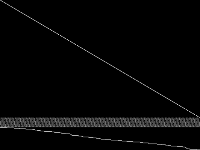 |
 |
 |
 |
| 433 | neos-3118745-obra [MIPLIB] | Jeff Linderoth | (None provided) | neos-pseudoapplication-26 |  |
 |
 |
 |
| 434 | neos-3135526-osun [MIPLIB] | Jeff Linderoth | Claimed infeasible by most solvers. | neos-pseudoapplication-71 |  |
 |
 |
 |
| 435 | neos-3148108-pahi [MIPLIB] | Jeff Linderoth | (None provided) | neos-pseudoapplication-49 |  |
 |
 |
 |
| 436 | neos-3209462-rhin [MIPLIB] | Jeff Linderoth | (None provided) | neos-pseudoapplication-98 |  |
 |
 |
 |
| 437 | neos-3209519-ruhr [MIPLIB] | Jeff Linderoth | (None provided) | neos-pseudoapplication-14 |  |
 |
 |
 |
| 438 | neos-3211096-shag [MIPLIB] | Jeff Linderoth | Solved with status infeasible by ParaSCIP in 42484 sec.\xa0It was confirmed by ParaXpress. | neos-pseudoapplication-38 |  |
 |
 |
 |
| 439 | neos-3214367-sovi [MIPLIB] | Jeff Linderoth | Solved in 21 days with four restarted runs of ParaXpress. | neos-pseudoapplication-56 |  |
 |
 |
 |
| 440 | neos-3216931-puriri [MIPLIB] | Jeff Linderoth | (None provided) | neos-pseudoapplication-56 |  |
 |
 |
 |
| 441 | neos-3218348-suir [MIPLIB] | Jeff Linderoth | (None provided) | neos-pseudoapplication-72 |  |
 |
 |
 |
| 442 | neos-3226448-wkra [MIPLIB] | Jeff Linderoth | (None provided) | neos-pseudoapplication-103 |  |
 |
 |
 |
| 443 | neos-3230376-yser [MIPLIB] | Jeff Linderoth | (None provided) | neos-pseudoapplication-4 |  |
 |
 |
 |
| 444 | neos-3230516-zala [MIPLIB] | Jeff Linderoth | (None provided) | neos-pseudoapplication-4 |  |
 |
 |
 |
| 445 | neos-3237086-abava [MIPLIB] | Jeff Linderoth | (None provided) | neos-pseudoapplication-51 |  |
 |
 |
 |
| 446 | neos-3283608-agout [MIPLIB] | Jeff Linderoth | (None provided) | neos-pseudoapplication-84 |  |
 |
 |
 |
| 447 | neos-3322547-alsek [MIPLIB] | Jeff Linderoth | (None provided) | neos-pseudoapplication-77 |  |
 |
 |
 |
| 448 | neos-3352863-ancoa [MIPLIB] | Jeff Linderoth | (None provided) | neos-pseudoapplication-100 | 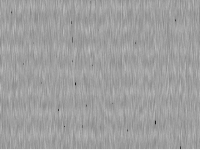 |
 |
 |
 |
| 449 | neos-3355120-tarago [MIPLIB] | Hans Mittelmann | Collection of anonymous submissions to the NEOS Server for Optimization | neos-pseudoapplication-52 |  |
 |
 |
 |
| 450 | neos-3355323-arnon [MIPLIB] | Jeff Linderoth | (None provided) | neos-pseudoapplication-38 |  |
 |
 |
 |
| 451 | neos-3372571-onahau [MIPLIB] | Hans Mittelmann | Collection of anonymous submissions to the NEOS Server for Optimization | neos-pseudoapplication-93 |  |
 |
 |
 |
| 452 | neos-3373491-avoca [MIPLIB] | Jeff Linderoth | (None provided) | neos-pseudoapplication-37 |  |
 |
 |
 |
| 453 | neos-3381206-awhea [MIPLIB] | Jeff Linderoth | (None provided) | neos-pseudoapplication-105 |  |
 |
 |
 |
| 454 | neos-3402294-bobin [MIPLIB] | Jeff Linderoth | (None provided) | neos-pseudoapplication-71 |  |
 |
 |
 |
| 455 | neos-3421095-cinca [MIPLIB] | Jeff Linderoth | (None provided) | neos-pseudoapplication-25 |  |
 |
 |
 |
| 456 | neos-3426085-ticino [MIPLIB] | Jeff Linderoth | (None provided) | neos-pseudoapplication-105 |  |
 |
 |
 |
| 457 | neos-3426132-dieze [MIPLIB] | Jeff Linderoth | (None provided) | neos-pseudoapplication-105 | 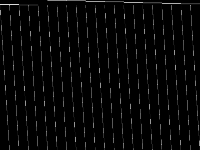 |
 |
 |
 |
| 458 | neos-3437289-erdre [MIPLIB] | Jeff Linderoth | (None provided) | neos-pseudoapplication-87 |  |
 |
 |
 |
| 459 | neos-3530903-gauja [MIPLIB] | Jeff Linderoth | (None provided) | neos-pseudoapplication-105 |  |
 |
 |
 |
| 460 | neos-3530905-gaula [MIPLIB] | Jeff Linderoth | (None provided) | neos-pseudoapplication-105 |  |
 |
 |
 |
| 461 | neos-3555904-turama [MIPLIB] | Hans Mittelmann | Collection of anonymous submissions to the NEOS Server for Optimization | neos-pseudoapplication-81 |  |
 |
 |
 |
| 462 | neos-3572885-glina [MIPLIB] | Jeff Linderoth | (None provided) | neos-pseudoapplication-38 |  |
 |
 |
 |
| 463 | neos-3581454-haast [MIPLIB] | Jeff Linderoth | (None provided) | neos-pseudoapplication-14 | 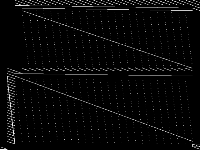 |
 |
 |
 |
| 464 | neos-3592146-hawea [MIPLIB] | Jeff Linderoth | (None provided) | neos-pseudoapplication-37 |  |
 |
 |
 |
| 465 | neos-3594536-henty [MIPLIB] | Jeff Linderoth | (None provided) | neos-pseudoapplication-83 |  |
 |
 |
 |
| 466 | neos-3603137-hoteo [MIPLIB] | Jeff Linderoth | (None provided) | neos-pseudoapplication-38 |  |
 |
 |
 |
| 467 | neos-3610040-iskar [MIPLIB] | Jeff Linderoth | (None provided) | neos-pseudoapplication-91 |  |
 |
 |
 |
| 468 | neos-3610051-istra [MIPLIB] | Jeff Linderoth | (None provided) | neos-pseudoapplication-91 |  |
 |
 |
 |
| 469 | neos-3610173-itata [MIPLIB] | Jeff Linderoth | (None provided) | neos-pseudoapplication-91 |  |
 |
 |
 |
| 470 | neos-3611447-jijia [MIPLIB] | Jeff Linderoth | (None provided) | neos-pseudoapplication-91 |  |
 |
 |
 |
| 471 | neos-3611689-kaihu [MIPLIB] | Jeff Linderoth | (None provided) | neos-pseudoapplication-91 |  |
 |
 |
 |
| 472 | neos-3615091-sutlej [MIPLIB] | Hans Mittelmann | Collection of anonymous submissions to the NEOS Server for Optimization | neos-pseudoapplication-45 |  |
 |
 |
 |
| 473 | neos-3627168-kasai [MIPLIB] | Jeff Linderoth | (None provided) | neos-pseudoapplication-25 |  |
 |
 |
 |
| 474 | neos-3631363-vilnia [MIPLIB] | Hans Mittelmann | Collection of anonymous submissions to the NEOS Server for Optimization Infeasibility reported by ParaSCIP in 4632 sec, confirmed by ParaXpress. | neos-pseudoapplication-12 |  |
 |
 |
 |
| 475 | neos-3634244-kauru [MIPLIB] | Jeff Linderoth | (None provided) | neos-pseudoapplication-110 |  |
 |
 |
 |
| 476 | neos-3636886-kereu [MIPLIB] | Jeff Linderoth | (None provided) | neos-pseudoapplication-45 |  |
 |
 |
 |
| 477 | neos-3654993-kolva [MIPLIB] | Jeff Linderoth | (None provided) | neos-pseudoapplication-44 |  |
 |
 |
 |
| 478 | neos-3656078-kumeu [MIPLIB] | Jeff Linderoth | (None provided) | neos-pseudoapplication-44 |  |
 |
 |
 |
| 479 | neos-3660371-kurow [MIPLIB] | Jeff Linderoth | (None provided) | neos-pseudoapplication-9 |  |
 |
 |
 |
| 480 | neos-3661949-lesse [MIPLIB] | Jeff Linderoth | (None provided) | neos-pseudoapplication-11 |  |
 |
 |
 |
| 481 | neos-3665875-lesum [MIPLIB] | Jeff Linderoth | (None provided) | neos-pseudoapplication-9 |  |
 |
 |
 |
| 482 | neos-3672928-linge [MIPLIB] | Jeff Linderoth | (None provided) | neos-pseudoapplication-97 |  |
 |
 |
 |
| 483 | neos-3682128-sandon [MIPLIB] | Hans Mittelmann | Collection of anonymous submissions to the NEOS Server for Optimization | neos-pseudoapplication-10 |  |
 |
 |
 |
| 484 | neos-3691541-lonja [MIPLIB] | Jeff Linderoth | (None provided) | neos-pseudoapplication-13 |  |
 |
 |
 |
| 485 | neos-3695882-vesdre [MIPLIB] | Hans Mittelmann | Collection of anonymous submissions to the NEOS Server for Optimization | neos-pseudoapplication-71 |  |
 |
 |
 |
| 486 | neos-3696678-lyvia [MIPLIB] | Jeff Linderoth | (None provided) | neos-pseudoapplication-56 |  |
 |
 |
 |
| 487 | neos-3699044-maipo [MIPLIB] | Jeff Linderoth | (None provided) | neos-pseudoapplication-63 |  |
 |
 |
 |
| 488 | neos-3699377-maori [MIPLIB] | Jeff Linderoth | (None provided) | neos-pseudoapplication-3 |  |
 |
 |
 |
| 489 | neos-3703351-marne [MIPLIB] | Jeff Linderoth | (None provided) | neos-pseudoapplication-3 |  |
 |
 |
 |
| 490 | neos-3709489-menik [MIPLIB] | Jeff Linderoth | (None provided) | neos-pseudoapplication-44 |  |
 |
 |
 |
| 491 | neos-3734794-moppy [MIPLIB] | Jeff Linderoth | (None provided) | neos-pseudoapplication-25 |  |
 |
 |
 |
| 492 | neos-3754224-navua [MIPLIB] | Jeff Linderoth | (None provided) | neos-pseudoapplication-83 |  |
 |
 |
 |
| 493 | neos-3754480-nidda [MIPLIB] | Jeff Linderoth | (None provided) | neos-pseudoapplication-107 |  |
 |
 |
 |
| 494 | neos-3755335-nizao [MIPLIB] | Jeff Linderoth | (None provided) | neos-pseudoapplication-61 |  |
 |
 |
 |
| 495 | neos-3759587-noosa [MIPLIB] | Jeff Linderoth | (None provided) | neos-pseudoapplication-61 |  |
 |
 |
 |
| 496 | neos-3761878-oglio [MIPLIB] | Jeff Linderoth | (None provided) | neos-pseudoapplication-3 |  |
 |
 |
 |
| 497 | neos-3762025-ognon [MIPLIB] | Jeff Linderoth | (None provided) | neos-pseudoapplication-3 |  |
 |
 |
 |
| 498 | neos-3988577-wolgan [MIPLIB] | Hans Mittelmann | Collection of anonymous submissions to the NEOS Server for Optimization | neos-pseudoapplication-64 |  |
 |
 |
 |
| 499 | neos-4165869-wannon [MIPLIB] | Hans Mittelmann | Collection of anonymous submissions to the NEOS Server for Optimization | neos-pseudoapplication-44 |  |
 |
 |
 |
| 500 | neos-4230265-orari [MIPLIB] | Jeff Linderoth | (None provided) | neos-pseudoapplication-57 |  |
 |
 |
 |
| 501 | neos-4232544-orira [MIPLIB] | Jeff Linderoth | (None provided) | neos-pseudoapplication-57 |  |
 |
 |
 |
| 502 | neos-4260495-otere [MIPLIB] | Jeff Linderoth | (None provided) | neos-pseudoapplication-30 |  |
 |
 |
 |
| 503 | neos-4264598-oueme [MIPLIB] | Jeff Linderoth | (None provided) | neos-pseudoapplication-57 |  |
 |
 |
 |
| 504 | neos-4290317-perth [MIPLIB] | Jeff Linderoth | (None provided) | neos-pseudoapplication-76 |  |
 |
 |
 |
| 505 | neos-4292145-piako [MIPLIB] | Jeff Linderoth | (None provided) | neos-pseudoapplication-57 |  |
 |
 |
 |
| 506 | neos-4295773-pissa [MIPLIB] | Jeff Linderoth | (None provided) | neos-pseudoapplication-6 |  |
 |
 |
 |
| 507 | neos-4300652-rahue [MIPLIB] | Jeff Linderoth | (None provided) | neos-pseudoapplication-13 |  |
 |
 |
 |
| 508 | neos-4306827-ravan [MIPLIB] | Jeff Linderoth | (None provided) | neos-pseudoapplication-30 |  |
 |
 |
 |
| 509 | neos-4321076-ruwer [MIPLIB] | Jeff Linderoth | (None provided) | neos-pseudoapplication-98 |  |
 |
 |
 |
| 510 | neos-4322846-ryton [MIPLIB] | Jeff Linderoth | (None provided) | neos-pseudoapplication-6 |  |
 |
 |
 |
| 511 | neos-4333464-siret [MIPLIB] | Jeff Linderoth | (None provided) | neos-pseudoapplication-58 |  |
 |
 |
 |
| 512 | neos-4333596-skien [MIPLIB] | Jeff Linderoth | (None provided) | neos-pseudoapplication-43 |  |
 |
 |
 |
| 513 | neos-4335793-snake [MIPLIB] | Jeff Linderoth | (None provided) | neos-pseudoapplication-44 |  |
 |
 |
 |
| 514 | neos-4338804-snowy [MIPLIB] | Jeff Linderoth | (None provided) | neos-pseudoapplication-40 |  |
 |
 |
 |
| 515 | neos-4343293-stony [MIPLIB] | Jeff Linderoth | (None provided) | neos-pseudoapplication-58 |  |
 |
 |
 |
| 516 | neos-4355351-swalm [MIPLIB] | Jeff Linderoth | (None provided) | neos-pseudoapplication-58 |  |
 |
 |
 |
| 517 | neos-4358725-tagus [MIPLIB] | Jeff Linderoth | (None provided) | neos-pseudoapplication-57 |  |
 |
 |
 |
| 518 | neos-4359986-taipa [MIPLIB] | Jeff Linderoth | (None provided) | neos-pseudoapplication-106 |  |
 |
 |
 |
| 519 | neos-4360552-sangro [MIPLIB] | Hans Mittelmann | Collection of anonymous submissions to the NEOS Server for Optimization | neos-pseudoapplication-62 | 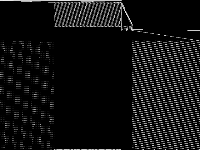 |
 |
 |
 |
| 520 | neos-4382714-ruvuma [MIPLIB] | Hans Mittelmann | Collection of anonymous submissions to the NEOS Server for Optimization | neos-pseudoapplication-103 | 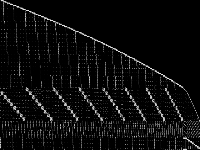 |
 |
 |
 |
| 521 | neos-4391920-timok [MIPLIB] | Jeff Linderoth | (None provided) | neos-pseudoapplication-106 |  |
 |
 |
 |
| 522 | neos-4393408-tinui [MIPLIB] | Jeff Linderoth | (None provided) | neos-pseudoapplication-58 |  |
 |
 |
 |
| 523 | neos-4408804-prosna [MIPLIB] | Hans Mittelmann | Collection of anonymous submissions to the NEOS Server for Optimization | neos-pseudoapplication-56 | 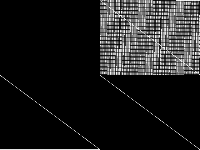 |
 |
 |
 |
| 524 | neos-4409277-trave [MIPLIB] | Jeff Linderoth | Reported solved by ParaSCIP in 441575 seconds using 71 solvers (72 cores). | neos-pseudoapplication-47 |  |
 |
 |
 |
| 525 | neos-4413714-turia [MIPLIB] | Jeff Linderoth | (None provided) | neos-pseudoapplication-67 |  |
 |
 |
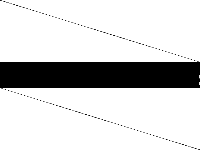 |
| 526 | neos-4477313-unzha [MIPLIB] | Jeff Linderoth | (None provided) | neos-pseudoapplication-110 |  |
 |
 |
 |
| 527 | neos-4531126-vouga [MIPLIB] | Jeff Linderoth | (None provided) | neos-pseudoapplication-87 |  |
 |
 |
 |
| 528 | neos-4532248-waihi [MIPLIB] | Jeff Linderoth | (None provided) | neos-pseudoapplication-6 |  |
 |
 |
 |
| 529 | neos-4533806-waima [MIPLIB] | Jeff Linderoth | (None provided) | neos-pseudoapplication-31 |  |
 |
 |
 |
| 530 | neos-4545615-waita [MIPLIB] | Jeff Linderoth | (None provided) | neos-pseudoapplication-31 |  |
 |
 |
 |
| 531 | neos-4555749-wards [MIPLIB] | Jeff Linderoth | (None provided) | neos-pseudoapplication-31 |  |
 |
 |
 |
| 532 | neos-4562542-watut [MIPLIB] | Jeff Linderoth | (None provided) | neos-pseudoapplication-31 |  |
 |
 |
 |
| 533 | neos-4647027-thurso [MIPLIB] | Hans Mittelmann | Collection of anonymous submissions to the NEOS Server for Optimization | neos-pseudoapplication-29 |  |
 |
 |
 |
| 534 | neos-4647030-tutaki [MIPLIB] | Hans Mittelmann | Collection of anonymous submissions to the NEOS Server for Optimization | neos-pseudoapplication-29 |  |
 |
 |
 |
| 535 | neos-4647032-veleka [MIPLIB] | Hans Mittelmann | Collection of anonymous submissions to the NEOS Server for Optimization | neos-pseudoapplication-29 |  |
 |
 |
 |
| 536 | neos-4650160-yukon [MIPLIB] | Jeff Linderoth | (None provided) | neos-pseudoapplication-79 |  |
 |
 |
 |
| 537 | neos-4703857-ahuroa [MIPLIB] | Jeff Linderoth | (None provided) | neos-pseudoapplication-82 |  |
 |
 |
 |
| 538 | neos-4722843-widden [MIPLIB] | Jeff Linderoth | (None provided) | neos-pseudoapplication-30 |  |
 |
 |
 |
| 539 | neos-4724674-aorere [MIPLIB] | Jeff Linderoth | (None provided) | neos-pseudoapplication-30 |  |
 |
 |
 |
| 540 | neos-4736745-arroux [MIPLIB] | Jeff Linderoth | (None provided) | neos-pseudoapplication-37 |  |
 |
 |
 |
| 541 | neos-4738912-atrato [MIPLIB] | Jeff Linderoth | (None provided) | neos-pseudoapplication-37 |  |
 |
 |
 |
| 542 | neos-4754521-awarau [MIPLIB] | Jeff Linderoth | (None provided) | neos-pseudoapplication-51 |  |
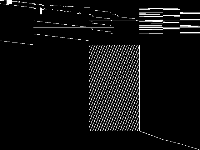 |
 |
 |
| 543 | neos-4760493-puerua [MIPLIB] | Hans Mittelmann | Collection of anonymous submissions to the NEOS Server for Optimization | neos-pseudoapplication-106 | 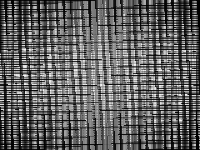 |
 |
 |
 |
| 544 | neos-4797081-pakoka [MIPLIB] | Hans Mittelmann | Collection of anonymous submissions to the NEOS Server for Optimization | neos-pseudoapplication-51 | 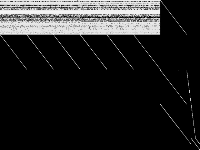 |
 |
 |
 |
| 545 | neos-4805882-barwon [MIPLIB] | Jeff Linderoth | (None provided) | neos-pseudoapplication-30 |  |
 |
 |
 |
| 546 | neos-480878 [MIPLIB] | NEOS Server Submission | Imported from the MIPLIB2010 submissions. | neos-pseudoapplication-76 |  |
 |
 |
 |
| 547 | neos-4954274-beardy [MIPLIB] | Jeff Linderoth | Reported solved after 77000 seconds using Gurobi with 32 threads. | neos-pseudoapplication-62 |  |
 |
 |
 |
| 548 | neos-4954340-beaury [MIPLIB] | Jeff Linderoth | (None provided) | neos-pseudoapplication-59 |  |
 |
 |
 |
| 549 | neos-4954357-bednja [MIPLIB] | Jeff Linderoth | (None provided) | neos-pseudoapplication-59 |  |
 |
 |
 |
| 550 | neos-4954672-berkel [MIPLIB] | Jeff Linderoth | (None provided) | neos-pseudoapplication-43 |  |
 |
 |
 |
| 551 | neos-4960896-besbre [MIPLIB] | Jeff Linderoth | (None provided) | neos-pseudoapplication-59 |  |
 |
 |
 |
| 552 | neos-4966126-blavet [MIPLIB] | Jeff Linderoth | (None provided) | neos-pseudoapplication-59 |  |
 |
 |
 |
| 553 | neos-4966258-blicks [MIPLIB] | Jeff Linderoth | (None provided) | neos-pseudoapplication-85 |  |
 |
 |
 |
| 554 | neos-4971100-bodrog [MIPLIB] | Jeff Linderoth | (None provided) | neos-pseudoapplication-20 |  |
 |
 |
 |
| 555 | neos-4972437-bojana [MIPLIB] | Jeff Linderoth | (None provided) | neos-pseudoapplication-85 |  |
 |
 |
 |
| 556 | neos-4972461-bolong [MIPLIB] | Jeff Linderoth | (None provided) | neos-pseudoapplication-85 |  |
 |
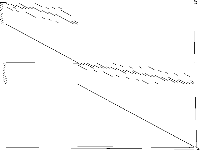 |
 |
| 557 | neos-4976951-bunnoo [MIPLIB] | Jeff Linderoth | (None provided) | neos-pseudoapplication-85 |  |
 |
 |
 |
| 558 | neos-4984115-canche [MIPLIB] | Jeff Linderoth | (None provided) | neos-pseudoapplication-69 |  |
 |
 |
 |
| 559 | neos-498623 [MIPLIB] | NEOS Server Submission | Imported from the MIPLIB2010 submissions. | neos-pseudoapplication-5 |  |
 |
 |
 |
| 560 | neos-5013590-toitoi [MIPLIB] | Hans Mittelmann | additional files should be Gurobi output and solution and submitter | neos-pseudoapplication-106 |  |
 |
 |
 |
| 561 | neos-5018451-chiese [MIPLIB] | Jeff Linderoth | (None provided) | neos-pseudoapplication-69 |  |
 |
 |
 |
| 562 | neos-503737 [MIPLIB] | NEOS Server Submission | Imported from the MIPLIB2010 submissions. | neos-pseudoapplication-47 |  |
 |
 |
 |
| 563 | neos-5041756-cobark [MIPLIB] | Jeff Linderoth | (None provided) | neos-pseudoapplication-12 |  |
 |
 |
 |
| 564 | neos-5041822-cockle [MIPLIB] | Jeff Linderoth | (None provided) | neos-pseudoapplication-25 |  |
 |
 |
 |
| 565 | neos-5044663-wairoa [MIPLIB] | Hans Mittelmann | NEOS submission with known submitter | neos-pseudoapplication-53 |  |
 |
 |
 |
| 566 | neos-5045105-creuse [MIPLIB] | Jeff Linderoth | (None provided) | neos-pseudoapplication-78 |  |
 |
 |
 |
| 567 | neos-5049753-cuanza [MIPLIB] | Jeff Linderoth | (None provided) | neos-pseudoapplication-85 |  |
 |
 |
 |
| 568 | neos-5051588-culgoa [MIPLIB] | Jeff Linderoth | (None provided) | neos-pseudoapplication-86 |  |
 |
 |
 |
| 569 | neos-5052403-cygnet [MIPLIB] | Jeff Linderoth | (None provided) | neos-pseudoapplication-100 |  |
 |
 |
 |
| 570 | neos-5075914-elvire [MIPLIB] | Jeff Linderoth | (None provided) | neos-pseudoapplication-35 |  |
 |
 |
 |
| 571 | neos-5076235-embley [MIPLIB] | Jeff Linderoth | (None provided) | neos-pseudoapplication-17 |  |
 |
 |
 |
| 572 | neos-5078479-escaut [MIPLIB] | Jeff Linderoth | (None provided) | neos-pseudoapplication-35 |  |
 |
 |
 |
| 573 | neos-5079731-flyers [MIPLIB] | Jeff Linderoth | (None provided) | neos-pseudoapplication-17 |  |
 |
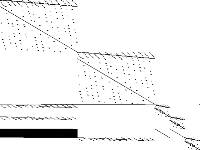 |
 |
| 574 | neos-5081619-ganges [MIPLIB] | Jeff Linderoth | (None provided) | neos-pseudoapplication-59 |  |
 |
 |
 |
| 575 | neos-5083528-gimone [MIPLIB] | Jeff Linderoth | (None provided) | neos-pseudoapplication-67 |  |
 |
 |
 |
| 576 | neos-5093327-huahum [MIPLIB] | Jeff Linderoth | (None provided) | neos-pseudoapplication-17 |  |
 |
 |
 |
| 577 | neos-5100895-inster [MIPLIB] | Jeff Linderoth | (None provided) | neos-pseudoapplication-17 |  |
 |
 |
 |
| 578 | neos-5102383-irwell [MIPLIB] | Jeff Linderoth | (None provided) | neos-pseudoapplication-17 |  |
 |
 |
 |
| 579 | neos-5104907-jarama [MIPLIB] | Jeff Linderoth | (None provided) | neos-pseudoapplication-24 |  |
 |
 |
 |
| 580 | neos-5106984-jizera [MIPLIB] | Jeff Linderoth | (None provided) | neos-pseudoapplication-24 |  |
 |
 |
 |
| 581 | neos-5108386-kalang [MIPLIB] | Jeff Linderoth | (None provided) | neos-pseudoapplication-104 |  |
 |
 |
 |
| 582 | neos-5114902-kasavu [MIPLIB] | Jeff Linderoth | (None provided) | neos-pseudoapplication-104 |  |
 |
 |
 |
| 583 | neos-5115478-kaveri [MIPLIB] | Jeff Linderoth | (None provided) | neos-pseudoapplication-54 |  |
 |
 |
 |
| 584 | neos-5116085-kenana [MIPLIB] | Jeff Linderoth | (None provided) | neos-pseudoapplication-24 |  |
 |
 |
 |
| 585 | neos-5118834-korana [MIPLIB] | Jeff Linderoth | (None provided) | neos-pseudoapplication-24 |  |
 |
 |
 |
| 586 | neos-5118851-kowhai [MIPLIB] | Jeff Linderoth | (None provided) | neos-pseudoapplication-104 |  |
 |
 |
 |
| 587 | neos-5123665-limmat [MIPLIB] | Jeff Linderoth | (None provided) | neos-pseudoapplication-104 |  |
 |
 |
 |
| 588 | neos-5125849-lopori [MIPLIB] | Jeff Linderoth | (None provided) | neos-pseudoapplication-42 |  |
 |
 |
 |
| 589 | neos-5129192-manaia [MIPLIB] | Jeff Linderoth | (None provided) | neos-pseudoapplication-51 |  |
 |
 |
 |
| 590 | neos-5138690-middle [MIPLIB] | Jeff Linderoth | (None provided) | neos-pseudoapplication-104 |  |
 |
 |
 |
| 591 | neos-5140963-mincio [MIPLIB] | Jeff Linderoth | (None provided) | neos-pseudoapplication-109 |  |
 |
 |
 |
| 592 | neos-5149806-wieprz [MIPLIB] | Hans Mittelmann | see ZIMPL model and name on it | neos-pseudoapplication-15 |  |
 |
 |
 |
| 593 | neos-5151569-mologa [MIPLIB] | Jeff Linderoth | (None provided) | neos-pseudoapplication-82 |  |
 |
 |
 |
| 594 | neos-5157194-moruya [MIPLIB] | Jeff Linderoth | Claimed to be infeasible by most solvers. A solution is available that is not feasible in the strict sense. | neos-pseudoapplication-41 |  |
 |
 |
 |
| 595 | neos-5178119-nalagi [MIPLIB] | Jeff Linderoth | (None provided) | neos-pseudoapplication-62 |  |
 |
 |
 |
| 596 | neos-5182409-nasivi [MIPLIB] | Jeff Linderoth | (None provided) | neos-pseudoapplication-32 | 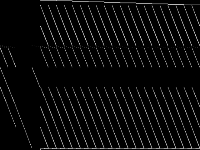 |
 |
 |
 |
| 597 | neos-5188808-nattai [MIPLIB] | Jeff Linderoth | (None provided) | neos-pseudoapplication-98 |  |
 |
 |
 |
| 598 | neos-5189128-totara [MIPLIB] | Hans Mittelmann | distribution of fruit | neos-pseudoapplication-101 | 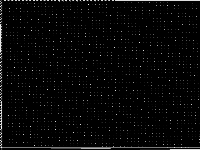 |
 |
 |
 |
| 599 | neos-5192052-neckar [MIPLIB] | Jeff Linderoth | (None provided) | neos-pseudoapplication-74 |  |
 |
 |
 |
| 600 | neos-5193246-nerang [MIPLIB] | Jeff Linderoth | (None provided) | neos-pseudoapplication-32 |  |
 |
 |
 |
| 601 | neos-5196530-nuhaka [MIPLIB] | Jeff Linderoth | (None provided) | neos-pseudoapplication-32 |  |
 |
 |
 |
| 602 | neos-520729 [MIPLIB] | NEOS Server Submission | Instance coming from the NEOS Server with unknown application | neos-pseudoapplication-50 |  |
 |
 |
 |
| 603 | neos-5221106-oparau [MIPLIB] | Hans Mittelmann | Seem to be VRP output from 2-hour runs of Gurobi on 12 threads is included | neos-pseudoapplication-46 |  |
 |
 |
 |
| 604 | neos-5223573-tarwin [MIPLIB] | Hans Mittelmann | check model | neos-pseudoapplication-19 |  |
 |
 |
 |
| 605 | neos-5251015-ogosta [MIPLIB] | Hans Mittelmann | similar to instance ns5223573 submitted in January Solved with ParaSCIP in 525353 seconds with 71 solvers(72 cores). | neos-pseudoapplication-19 |  |
 |
 |
 |
| 606 | neos-525149 [MIPLIB] | NEOS Server Submission | Imported from the MIPLIB2010 submissions. | neos-pseudoapplication-110 |  |
 |
 |
 |
| 607 | neos-5260764-orauea [MIPLIB] | Hans Mittelmann | Seem to be VRP output from 2-hour runs of Gurobi on 12 threads is included | neos-pseudoapplication-102 | 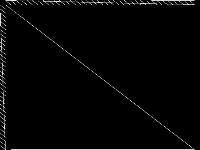 |
 |
 |
 |
| 608 | neos-5261882-treska [MIPLIB] | Hans Mittelmann | Seem to be VRP output from 2-hour runs of Gurobi on 12 threads is included | neos-pseudoapplication-102 |  |
 |
 |
 |
| 609 | neos-5266653-tugela [MIPLIB] | Hans Mittelmann | Seem to be VRP output from 2-hour runs of Gurobi on 12 threads is included | neos-pseudoapplication-102 | 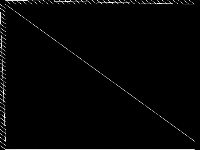 |
 |
 |
 |
| 610 | neos-5273874-yomtsa [MIPLIB] | Hans Mittelmann | similar to ns5223573 submitted in January | neos-pseudoapplication-19 |  |
 |
 |
 |
| 611 | neos-555001 [MIPLIB] | NEOS Server Submission | Imported from the MIPLIB2010 submissions. | neos-pseudoapplication-94 |  |
 |
 |
 |
| 612 | neos-555343 [MIPLIB] | NEOS Server Submission | Imported from the MIPLIB2010 submissions. | neos-pseudoapplication-15 |  |
 |
 |
 |
| 613 | neos-555424 [MIPLIB] | NEOS Server Submission | Instance coming from the NEOS Server with unknown application | neos-pseudoapplication-15 |  |
 |
 |
 |
| 614 | neos-555884 [MIPLIB] | NEOS Server Submission | Imported from the MIPLIB2010 submissions. | neos-pseudoapplication-32 |  |
 |
 |
 |
| 615 | neos-565672 [MIPLIB] | NEOS Server Submission | Imported from the MIPLIB2010 submissions. | neos-pseudoapplication-82 |  |
 |
 |
 |
| 616 | neos-574665 [MIPLIB] | NEOS Server Submission | Imported from the MIPLIB2010 submissions. | neos-pseudoapplication-78 |  |
 |
 |
 |
| 617 | neos-578379 [MIPLIB] | NEOS Server Submission | Imported from the MIPLIB2010 submissions. | neos-pseudoapplication-42 |  |
 |
 |
 |
| 618 | neos-585192 [MIPLIB] | NEOS Server Submission | Imported from the MIPLIB2010 submissions. | neos-pseudoapplication-92 |  |
 |
 |
 |
| 619 | neos-585467 [MIPLIB] | NEOS Server Submission | Imported from the MIPLIB2010 submissions. | neos-pseudoapplication-92 |  |
 |
 |
 |
| 620 | neos-595904 [MIPLIB] | NEOS Server Submission | Imported from the MIPLIB2010 submissions. | neos-pseudoapplication-43 |  |
 |
 |
 |
| 621 | neos-619167 [MIPLIB] | NEOS Server Submission | Imported from the MIPLIB2010 submissions. | neos-pseudoapplication-83 |  |
 |
 |
 |
| 622 | neos-631517 [MIPLIB] | NEOS Server Submission | Imported from the MIPLIB2010 submissions. | neos-pseudoapplication-70 |  |
 |
 |
 |
| 623 | neos-631710 [MIPLIB] | NEOS Server Submission | Instance coming from the NEOS Server with unknown application. Solved with Gurobi 4.6.1 (12 threads) in 1264.7 sec. | neos-pseudoapplication-75 |  |
 |
 |
 |
| 624 | neos-633273 [MIPLIB] | NEOS Server Submission | Collection of anonymous submissions to the NEOS Server for Optimization | neos-pseudoapplication-10 |  |
 |
 |
 |
| 625 | neos-662469 [MIPLIB] | NEOS Server Submission | Imported from the MIPLIB2010 submissions. | neos-pseudoapplication-73 |  |
 |
 |
 |
| 626 | neos-686190 [MIPLIB] | NEOS Server Submission | Instance coming from the NEOS Server with unknown application | neos-pseudoapplication-60 |  |
 |
 |
 |
| 627 | neos-691058 [MIPLIB] | NEOS Server Submission | Imported from the MIPLIB2010 submissions. | neos-pseudoapplication-110 | 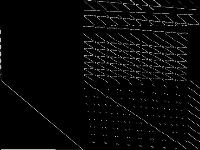 |
 |
 |
 |
| 628 | neos-738098 [MIPLIB] | NEOS Server Submission | Instance coming from the NEOS Server with unknown application | neos-pseudoapplication-15 |  |
 |
 |
 |
| 629 | neos-780889 [MIPLIB] | NEOS Server Submission | Imported from the MIPLIB2010 submissions. | neos-pseudoapplication-94 |  |
 |
 |
 |
| 630 | neos-787933 [MIPLIB] | NEOS Server Submission | Imported from the MIPLIB2010 submissions. | neos-pseudoapplication-36 |  |
 |
 |
 |
| 631 | neos-799711 [MIPLIB] | NEOS Server Submission | Instance coming from the NEOS Server with unknown application | neos-pseudoapplication-25 |  |
 |
 |
 |
| 632 | neos-799716 [MIPLIB] | NEOS Server Submission | Imported from the MIPLIB2010 submissions. | neos-pseudoapplication-1 |  |
 |
 |
 |
| 633 | neos-807639 [MIPLIB] | NEOS Server Submission | Imported from the MIPLIB2010 submissions. | neos-pseudoapplication-79 |  |
 |
 |
 |
| 634 | neos-820879 [MIPLIB] | NEOS Server Submission | Imported from the MIPLIB2010 submissions. | neos-pseudoapplication-23 |  |
 |
 |
 |
| 635 | neos-824661 [MIPLIB] | NEOS Server Submission | Instance coming from the NEOS Server with unknown application | neos-pseudoapplication-93 |  |
 |
 |
 |
| 636 | neos-826224 [MIPLIB] | NEOS Server Submission | Imported from the MIPLIB2010 submissions. | neos-pseudoapplication-87 |  |
 |
 |
 |
| 637 | neos-826650 [MIPLIB] | NEOS Server Submission | Instance coming from the NEOS Server with unknown application | neos-pseudoapplication-87 |  |
 |
 |
 |
| 638 | neos-827015 [MIPLIB] | NEOS Server Submission | Imported from the MIPLIB2010 submissions. | neos-pseudoapplication-95 |  |
 |
 |
 |
| 639 | neos-827175 [MIPLIB] | NEOS Server Submission | Imported from the MIPLIB2010 submissions. | neos-pseudoapplication-87 |  |
 |
 |
 |
| 640 | neos-829552 [MIPLIB] | NEOS Server Submission | Imported from the MIPLIB2010 submissions. | neos-pseudoapplication-95 |  |
 |
 |
 |
| 641 | neos-831188 [MIPLIB] | NEOS Server Submission | Imported from the MIPLIB2010 submissions. | neos-pseudoapplication-94 |  |
 |
 |
 |
| 642 | neos-848198 [MIPLIB] | NEOS Server Submission | Imported from the MIPLIB2010 submissions. | neos-pseudoapplication-3 |  |
 |
 |
 |
| 643 | neos-848589 [MIPLIB] | NEOS Server Submission | Imported from the MIPLIB2010 submissions. | neos-pseudoapplication-77 |  |
 |
 |
 |
| 644 | neos-850681 [MIPLIB] | NEOS Server Submission | Imported from the MIPLIB2010 submissions. | neos-pseudoapplication-12 |  |
 |
 |
 |
| 645 | neos-859770 [MIPLIB] | NEOS Server Submission | Instance coming from the NEOS Server with unknown application | neos-pseudoapplication-81 | 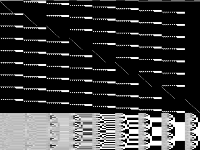 |
 |
 |
 |
| 646 | neos-860300 [MIPLIB] | NEOS Server Submission | Imported from the MIPLIB2010 submissions. | neos-pseudoapplication-23 |  |
 |
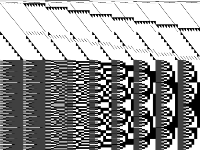 |
 |
| 647 | neos-872648 [MIPLIB] | NEOS Server Submission | Imported from the MIPLIB2010 submissions. | neos-pseudoapplication-61 |  |
 |
 |
 |
| 648 | neos-873061 [MIPLIB] | NEOS Server Submission | Imported from the MIPLIB2010 submissions. | neos-pseudoapplication-61 |  |
 |
 |
 |
| 649 | neos-876808 [MIPLIB] | NEOS Server Submission | Imported from the MIPLIB2010 submissions. | neos-pseudoapplication-62 |  |
 |
 |
 |
| 650 | neos-885086 [MIPLIB] | NEOS Server Submission | Instance coming from the NEOS Server with unknown application | neos-pseudoapplication-8 |  |
 |
 |
 |
| 651 | neos-885524 [MIPLIB] | NEOS Server Submission | Instance coming from the NEOS Server with unknown application | neos-pseudoapplication-100 |  |
 |
 |
 |
| 652 | neos-911970 [MIPLIB] | NEOS Server Submission | Imported from the MIPLIB2010 submissions. | neos-pseudoapplication-70 |  |
 |
 |
 |
| 653 | neos-913984 [MIPLIB] | NEOS Server Submission | Imported from the MIPLIB2010 submissions. | neos-pseudoapplication-2 |  |
 |
 |
 |
| 654 | neos-914441 [MIPLIB] | NEOS Server Submission | Imported from the MIPLIB2010 submissions. | neos-pseudoapplication-75 |  |
 |
 |
 |
| 655 | neos-932721 [MIPLIB] | NEOS Server Submission | Imported from the MIPLIB2010 submissions. | neos-pseudoapplication-56 |  |
 |
 |
 |
| 656 | neos-933562 [MIPLIB] | NEOS Server Submission | Imported from the MIPLIB2010 submissions. | neos-pseudoapplication-94 |  |
 |
 |
 |
| 657 | neos-933638 [MIPLIB] | NEOS Server Submission | Instance coming from the NEOS Server with unknown application | neos-pseudoapplication-34 |  |
 |
 |
 |
| 658 | neos-933966 [MIPLIB] | NEOS Server Submission | Instance coming from the NEOS Server with unknown application | neos-pseudoapplication-34 |  |
 |
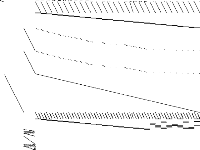 |
 |
| 659 | neos-935234 [MIPLIB] | NEOS Server Submission | Imported from the MIPLIB2010 submissions. | neos-pseudoapplication-34 |  |
 |
 |
 |
| 660 | neos-935769 [MIPLIB] | NEOS Server Submission | Instance coming from the NEOS Server with unknown application | neos-pseudoapplication-34 |  |
 |
 |
 |
| 661 | neos-941313 [MIPLIB] | NEOS Server Submission | Instance coming from the NEOS Server with unknown application | neos-pseudoapplication-81 |  |
 |
 |
 |
| 662 | neos-948346 [MIPLIB] | NEOS Server Submission | Imported from the MIPLIB2010 submissions. | neos-pseudoapplication-48 |  |
 |
 |
 |
| 663 | neos-950242 [MIPLIB] | NEOS Server Submission | Imported from the MIPLIB2010 submissions. | neos-pseudoapplication-72 |  |
 |
 |
 |
| 664 | neos-952987 [MIPLIB] | NEOS Server Submission | Instance coming from the NEOS Server with unknown application | neos-pseudoapplication-22 |  |
 |
 |
 |
| 665 | neos-953928 [MIPLIB] | NEOS Server Submission | Imported from the MIPLIB2010 submissions. | neos-pseudoapplication-13 |  |
 |
 |
 |
| 666 | neos-954925 [MIPLIB] | NEOS Server Submission | Imported from the MIPLIB2010 submissions. | neos-pseudoapplication-48 |  |
 |
 |
 |
| 667 | neos-956971 [MIPLIB] | NEOS Server Submission | Imported from the MIPLIB2010 submissions. | neos-pseudoapplication-48 |  |
 |
 |
 |
| 668 | neos-957143 [MIPLIB] | NEOS Server Submission | Imported from the MIPLIB2010 submissions. | neos-pseudoapplication-48 |  |
 |
 |
 |
| 669 | neos-957323 [MIPLIB] | NEOS Server Submission | Imported from the MIPLIB2010 submissions. | neos-pseudoapplication-48 |  |
 |
 |
 |
| 670 | neos-960392 [MIPLIB] | NEOS Server Submission | Imported from the MIPLIB2010 submissions. | neos-pseudoapplication-94 |  |
 |
 |
 |
| 671 | neos-983171 [MIPLIB] | NEOS Server Submission | Imported from the MIPLIB2010 submissions. | neos-pseudoapplication-34 |  |
 |
 |
 |
| 672 | neos16 [MIPLIB] | NEOS Server Submission | Instance coming from the NEOS Server with unknown application | neos-pseudoapplication-90 |  |
 |
 |
 |
| 673 | neos17 [MIPLIB] | NEOS Server Submission | Imported from the MIPLIB2010 submissions. | neos-pseudoapplication-66 |  |
 |
 |
 |
| 674 | neos18 [MIPLIB] | NEOS Server Submission | Instance coming from the NEOS Server with unknown application | neos-pseudoapplication-49 |  |
 |
 |
 |
| 675 | neos2 [MIPLIB] | NEOS Server Submission | Imported from the MIPLIB2010 submissions. | neos-pseudoapplication-93 |  |
 |
 |
 |
| 676 | neos22 [MIPLIB] | NEOS Server Submission | Imported from the MIPLIB2010 submissions. | neos-pseudoapplication-27 |  |
 |
 |
 |
| 677 | neos4 [MIPLIB] | NEOS Server Submission | Imported from the MIPLIB2010 submissions. | neos-pseudoapplication-65 |  |
 |
 |
 |
| 678 | neos5 [MIPLIB] | NEOS Server Submission | Imported from the MIPLIB2010 submissions. | neos-pseudoapplication-21 |  |
 |
 |
 |
| 679 | neos6 [MIPLIB] | NEOS Server Submission | Instance coming from the NEOS Server with unknown application | neos-pseudoapplication-47 | 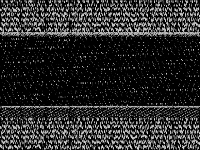 |
 |
 |
 |
| 680 | neos8 [MIPLIB] | NEOS Server Submission | Imported from the MIPLIB2010 submissions. | neos-pseudoapplication-15 |  |
 |
 |
 |
| 681 | neos859080 [MIPLIB] | NEOS Server Submission | Imported from the MIPLIB2010 submissions. | neos-pseudoapplication-96 |  |
 |
 |
 |
| 682 | neos9 [MIPLIB] | NEOS Server Submission | Imported from the MIPLIB2010 submissions. | neos-pseudoapplication-5 |  |
 |
 |
 |
| 683 | net12 [MIPLIB] | P. Belotti | Network design instance | - |  |
 |
 |
 |
| 684 | netdiversion [MIPLIB] | Chris Cullenbine | Directed network diversion problem | - |  |
 |
 |
 |
| 685 | newdano [MIPLIB] | Daniel Bienstock | Telecommunications applications | dano |  |
 |
 |
 |
| 686 | nexp-150-20-1-5 [MIPLIB] | MIPLIB submission pool | Imported from the MIPLIB2010 submissions. | exp_and_fc |  |
 |
 |
 |
| 687 | nexp-150-20-8-5 [MIPLIB] | MIPLIB submission pool | Imported from the MIPLIB2010 submissions. | exp_and_fc |  |
 |
 |
 |
| 688 | nexp-50-20-1-1 [MIPLIB] | MIPLIB submission pool | Imported from the MIPLIB2010 submissions. | exp_and_fc |  |
 |
 |
 |
| 689 | nexp-50-20-4-2 [MIPLIB] | MIPLIB submission pool | Imported from the MIPLIB2010 submissions. | exp_and_fc |  |
 |
 |
 |
| 690 | nh97_potential [MIPLIB] | MIPLIB submission pool | Imported from the MIPLIB2010 submissions. | - |  |
 |
 |
 |
| 691 | nh97_tension [MIPLIB] | MIPLIB submission pool | Imported from the MIPLIB2010 submissions. | - |  |
 |
 |
 |
| 692 | nj1 [MIPLIB] | Jonathan Eckstein | Electoral district design with various levels of symmetry breaking constraints. | nj |  |
 |
 |
 |
| 693 | nj2 [MIPLIB] | Jonathan Eckstein | Electoral district design with various levels of symmetry breaking constraints. | nj |  |
 |
 |
 |
| 694 | nj3 [MIPLIB] | Jonathan Eckstein | Electoral district design with various levels of symmetry breaking constraints. | nj |  |
 |
 |
 |
| 695 | no-ip-64999 [MIPLIB] | Christopher Hojny | integer programming formulation that verifies that no integer programming formulation of a given 0/1-point set exists | noip |  |
 |
 |
 |
| 696 | noswot [MIPLIB] | J. Gregory, L. Schrage | Unknown application | - |  |
 |
 |
 |
| 697 | npmv07 [MIPLIB] | Q. Chen | Unknown application | - |  |
 |
 |
 |
| 698 | ns1111636 [MIPLIB] | NEOS Server Submission | Network routing problem. Solved in June 2013 by CPLEX 12.5.1 with 32 threads in about 102 hours. | neos-pseudoapplication-67 |  |
 |
 |
 |
| 699 | ns1116954 [MIPLIB] | NEOS Server Submission | Instance coming from the NEOS Server with unknown application | neos-pseudoapplication-51 |  |
 |
 |
 |
| 700 | ns1208400 [MIPLIB] | NEOS Server Submission | Instance coming from the NEOS Server with unknown application | neos-pseudoapplication-108 |  |
 |
 |
 |
| 701 | ns1430538 [MIPLIB] | NEOS Server Submission | Instance coming from the NEOS Server with unknown application. | neos-pseudoapplication-76 |  |
 |
 |
 |
| 702 | ns1456591 [MIPLIB] | NEOS Server Submission | Instance coming from the NEOS Server with unknown application | neos-pseudoapplication-52 | 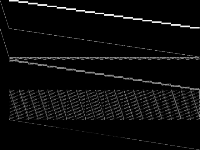 |
 |
 |
 |
| 703 | ns1631475 [MIPLIB] | NEOS Server Submission | Traveling salesman problem model | neos-pseudoapplication-75 |  |
 |
 |
 |
| 704 | ns1644855 [MIPLIB] | NEOS Server Submission | Instance coming from the NEOS Server with unknown application. Solved with Gurobi 4.5.1 on a 12-core Linux system in 1431.15 sec. | neos-pseudoapplication-76 |  |
 |
 |
 |
| 705 | ns1679495 [MIPLIB] | NEOS Server Submission | Instance coming from the NEOS Server with unknown application. | neos-pseudoapplication-9 |  |
 |
 |
 |
| 706 | ns1760995 [MIPLIB] | NEOS Server Submission | Instance coming from the NEOS Server with unknown application. | neos-pseudoapplication-12 |  |
 |
 |
 |
| 707 | ns1828997 [MIPLIB] | NEOS Server Submission | Instance coming from the NEOS Server with unknown application. | neos-pseudoapplication-13 |  |
 |
 |
 |
| 708 | ns1830653 [MIPLIB] | NEOS Server Submission | Instance coming from the NEOS Server with unknown application | neos-pseudoapplication-110 |  |
 |
 |
 |
| 709 | ns1849932 [MIPLIB] | NEOS Server Submission | Instance coming from the NEOS Server with unknown application. | neos-pseudoapplication-60 |  |
 |
 |
 |
| 710 | ns1856153 [MIPLIB] | NEOS Server Submission | Sensor placement problem | neos-pseudoapplication-6 |  |
 |
 |
 |
| 711 | ns1904248 [MIPLIB] | NEOS Server Submission | Sensor placement problem | neos-pseudoapplication-6 |  |
 |
 |
 |
| 712 | ns1905797 [MIPLIB] | NEOS Server Submission | Vehicle routing problem | neos-pseudoapplication-102 | 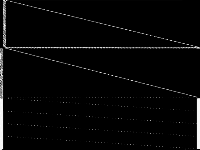 |
 |
 |
 |
| 713 | ns1952667 [MIPLIB] | NEOS Server Submission | Instance coming from the NEOS Server with unknown application | neos-pseudoapplication-78 | 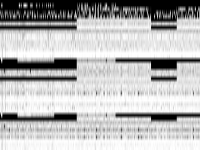 |
 |
 |
 |
| 714 | ns2034125 [MIPLIB] | NEOS Server Submission | Imported from the MIPLIB2010 submissions. | neos-pseudoapplication-67 |  |
 |
 |
 |
| 715 | ns2071214 [MIPLIB] | NEOS Server Submission | Imported from the MIPLIB2010 submissions. | neos-pseudoapplication-46 |  |
 |
 |
 |
| 716 | ns2122698 [MIPLIB] | Timo Berthold | Instance coming from the NEOS Server with unknown application. Solved by SCIP-CPLEX in 9500 seconds. | neos-pseudoapplication-93 |  |
 |
 |
 |
| 717 | ns2124243 [MIPLIB] | Timo Berthold | Instance coming from the NEOS Server with unknown application | neos-pseudoapplication-93 |  |
 |
 |
 |
| 718 | ns4-pr6 [MIPLIB] | MIPLIB submission pool | Imported from the MIPLIB2010 submissions. | nus-prxy |  |
 |
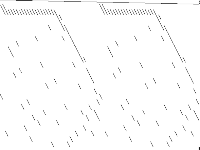 |
 |
| 719 | ns930473 [MIPLIB] | NEOS Server Submission | Instance coming from the NEOS Server with unknown application | neos-pseudoapplication-46 |  |
 |
 |
 |
| 720 | nsa [MIPLIB] | MIPLIB submission pool | Imported from the MIPLIB2010 submissions. | - |  |
 |
 |
 |
| 721 | nsr8k [MIPLIB] | MIPLIB submission pool | Crew scheduling instance | - |  |
 |
 |
 |
| 722 | nsrand-ipx [MIPLIB] | MIPLIB submission pool | Imported from the MIPLIB2010 submissions. | - |  |
 |
 |
 |
| 723 | nu120-pr12 [MIPLIB] | MIPLIB submission pool | Imported from the MIPLIB2010 submissions. | nus-prxy |  |
 |
 |
 |
| 724 | nu4-pr9 [MIPLIB] | MIPLIB submission pool | Imported from the MIPLIB2010 submissions. | nus-prxy |  |
 |
 |
 |
| 725 | nursesched-medium-hint03 [MIPLIB] | Haroldo Gambini Santos | Nurse Scheduling Problems from the First International Nurse Rostering Competition - INRC 2010 | nursescheduling |  |
 |
 |
 |
| 726 | nursesched-medium04 [MIPLIB] | Haroldo Gambini Santos | Nurse Scheduling Problems from the First International Nurse Rostering Competition - INRC 2010 | nursescheduling |  |
 |
 |
 |
| 727 | nursesched-sprint-hidden09 [MIPLIB] | Haroldo Gambini Santos | Nurse Scheduling Problems from the First International Nurse Rostering Competition - INRC 2010 | nursescheduling | ||||
| 728 | nursesched-sprint-late03 [MIPLIB] | Haroldo Gambini Santos | Nurse Scheduling Problems from the First International Nurse Rostering Competition - INRC 2010 | nursescheduling |  |
 |
 |
 |
| 729 | nursesched-sprint02 [MIPLIB] | Haroldo Gambini Santos | Nurse Scheduling Problems from the First International Nurse Rostering Competition - INRC 2010 | nursescheduling |  |
 |
 |
 |
| 730 | nw04 [MIPLIB] | MIPLIB submission pool | Imported from the MIPLIB2010 submissions. | - |  |
 |
 |
 |
| 731 | ofi [MIPLIB] | Luigi Poderico | Natural gas supply portfolio optimization | - |  |
 |
 |
 |
| 732 | ofi2 [MIPLIB] | Luigi Poderico | Imported from the MIPLIB2010 submissions. | - |  |
 |
 |
 |
| 733 | oocsp-racks030e6cci [MIPLIB] | Gleb Belov | These are the instances from MiniZinc Challenges 2012-2016 (see www.minizinc.org), compiled for MIP WITH INDICATOR CONSTRAINTS using the develop branch of MiniZinc and CPLEX 12.7.1 on 30 April 2017. Thus, these instances can only be handled by solvers accepting indicator constraints. For instances compiled with big-M/domain decomposition only, see my previous submission to MIPLIB.To recompile, create a directory MODELS, a list lst12_16.txt of the instances with full paths to mzn/dzn files of each instance per line, and say$> ~/install/libmzn/tests/benchmarking/mzn-test.py -l ../lst12_16.txt -slvPrf MZN-CPLEX -debug 1 -addOption "-timeout 3 -D fIndConstr=true -D fMIPdomains=false" -useJoinedName "-writeModel MODELS_IND/%s.mps" Alternatively, you can compile individual instance as follows: $> mzn-cplex -v -s -G linear -output-time ../challenge_2012_2016/mznc2016_probs/zephyrus/zephyrus.mzn ../challenge_2012_2016/mznc2016_p/zephyrus/14__8__6__3.dzn -a -timeout 3 -D fIndConstr=true -D fMIPdomains=false -writeModel MODELS_IND/challenge_2012_2016mznc2016_probszephyruszephyrusmzn-challenge_2012_2016mznc2016_probszephyrus14__8__6__3dzn.mps | oocsp-racks |  |
 |
 |
 |
| 734 | oocsp-racks030f7cci [MIPLIB] | Gleb Belov | These are the instances from MiniZinc Challenges 2012-2016 (see www.minizinc.org), compiled for MIP WITH INDICATOR CONSTRAINTS using the develop branch of MiniZinc and CPLEX 12.7.1 on 30 April 2017. Thus, these instances can only be handled by solvers accepting indicator constraints. For instances compiled with big-M/domain decomposition only, see my previous submission to MIPLIB.To recompile, create a directory MODELS, a list lst12_16.txt of the instances with full paths to mzn/dzn files of each instance per line, and say$> ~/install/libmzn/tests/benchmarking/mzn-test.py -l ../lst12_16.txt -slvPrf MZN-CPLEX -debug 1 -addOption "-timeout 3 -D fIndConstr=true -D fMIPdomains=false" -useJoinedName "-writeModel MODELS_IND/%s.mps" Alternatively, you can compile individual instance as follows: $> mzn-cplex -v -s -G linear -output-time ../challenge_2012_2016/mznc2016_probs/zephyrus/zephyrus.mzn ../challenge_2012_2016/mznc2016_p/zephyrus/14__8__6__3.dzn -a -timeout 3 -D fIndConstr=true -D fMIPdomains=false -writeModel MODELS_IND/challenge_2012_2016mznc2016_probszephyruszephyrusmzn-challenge_2012_2016mznc2016_probszephyrus14__8__6__3dzn.mps | oocsp-racks |  |
 |
 |
 |
| 735 | opm2-z10-s4 [MIPLIB] | Daniel Espinoza | Problems coming from precedence constrained knapsacks arising in mining applications. These are one-period problems with integer data but large root LP GAP | opm2 |  |
 |
 |
 |
| 736 | opm2-z12-s8 [MIPLIB] | Daniel Espinoza | Problems coming from precedence constrained knapsacks arising in mining applications. These are one-period problems with integer data but large root LP GAP | opm2 |  |
 |
 |
 |
| 737 | opm2-z6-s1 [MIPLIB] | Daniel Espinoza | Problems coming from precedence constrained knapsacks arising in mining applications. These are one-period problems with integer data but large root LP GAP | opm2 |  |
 |
 |
 |
| 738 | opm2-z7-s8 [MIPLIB] | Daniel Espinoza | Problems coming from precedence constrained knapsacks arising in mining applications. These are one-period problems with integer data but large root LP GAP | opm2 |  |
 |
 |
 |
| 739 | opm2-z8-s0 [MIPLIB] | Daniel Espinoza | Problems coming from precedence constrained knapsacks arising in mining applications. These are one-period problems with integer data but large root LP GAP | opm2 |  |
 |
 |
 |
| 740 | opt1217 [MIPLIB] | MIPLIB submission pool | Imported from the MIPLIB2010 submissions. | - |  |
 |
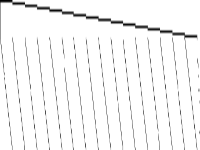 |
 |
| 741 | osorio-cta [MIPLIB] | Jordi Castro | Set of MILP instances of the CTA (Controlled Tabular Adjustment) problem, a method to protect statistical tabular data, belonging to the field of SDC (Statistical Disclosure Control). Raw data of instances are real or pseudo-real, provided by several National Statistical Agencies. We generated the CTA problem for these data. | cta |  |
 |
 |
 |
| 742 | p0201 [MIPLIB] | MIPLIB submission pool | Imported from the MIPLIB2010 submissions. | pfour |  |
 |
 |
 |
| 743 | p200x1188c [MIPLIB] | MIPLIB submission pool | Imported from the MIPLIB2010 submissions. | pr_product |  |
 |
 |
 |
| 744 | p2m2p1m1p0n100 [MIPLIB] | B. Krishnamoorthy, G. Pataki | A 0-1 knapsack problem constructed to be difficult | - |  |
 |
 |
 |
| 745 | p500x2988 [MIPLIB] | MIPLIB submission pool | Imported from the MIPLIB2010 submissions. | pr_product |  |
 |
 |
 |
| 746 | p500x2988d [MIPLIB] | MIPLIB submission pool | Imported from the MIPLIB2010 submissions. | pr_product |  |
 |
 |
 |
| 747 | pb-fit2d [MIPLIB] | Gleb Belov | These are the instances from MiniZinc Challenges 2012-2016 (see www.minizinc.org), compiled for MIP WITH INDICATOR CONSTRAINTS using the develop branch of MiniZinc and CPLEX 12.7.1 on 30 April 2017. Thus, these instances can only be handled by solvers accepting indicator constraints. For instances compiled with big-M/domain decomposition only, see my previous submission to MIPLIB.To recompile, create a directory MODELS, a list lst12_16.txt of the instances with full paths to mzn/dzn files of each instance per line, and say$> ~/install/libmzn/tests/benchmarking/mzn-test.py -l ../lst12_16.txt -slvPrf MZN-CPLEX -debug 1 -addOption "-timeout 3 -D fIndConstr=true -D fMIPdomains=false" -useJoinedName "-writeModel MODELS_IND/%s.mps" Alternatively, you can compile individual instance as follows: $> mzn-cplex -v -s -G linear -output-time ../challenge_2012_2016/mznc2016_probs/zephyrus/zephyrus.mzn ../challenge_2012_2016/mznc2016_p/zephyrus/14__8__6__3.dzn -a -timeout 3 -D fIndConstr=true -D fMIPdomains=false -writeModel MODELS_IND/challenge_2012_2016mznc2016_probszephyruszephyrusmzn-challenge_2012_2016mznc2016_probszephyrus14__8__6__3dzn.mps | pb- |  |
 |
 |
 |
| 748 | pb-gfrd-pnc [MIPLIB] | Gleb Belov | These are the instances from MiniZinc Challenges 2012-2016 (see www.minizinc.org), compiled for MIP WITH INDICATOR CONSTRAINTS using the develop branch of MiniZinc and CPLEX 12.7.1 on 30 April 2017. Thus, these instances can only be handled by solvers accepting indicator constraints. For instances compiled with big-M/domain decomposition only, see my previous submission to MIPLIB.To recompile, create a directory MODELS, a list lst12_16.txt of the instances with full paths to mzn/dzn files of each instance per line, and say$> ~/install/libmzn/tests/benchmarking/mzn-test.py -l ../lst12_16.txt -slvPrf MZN-CPLEX -debug 1 -addOption "-timeout 3 -D fIndConstr=true -D fMIPdomains=false" -useJoinedName "-writeModel MODELS_IND/%s.mps" Alternatively, you can compile individual instance as follows: $> mzn-cplex -v -s -G linear -output-time ../challenge_2012_2016/mznc2016_probs/zephyrus/zephyrus.mzn ../challenge_2012_2016/mznc2016_p/zephyrus/14__8__6__3.dzn -a -timeout 3 -D fIndConstr=true -D fMIPdomains=false -writeModel MODELS_IND/challenge_2012_2016mznc2016_probszephyruszephyrusmzn-challenge_2012_2016mznc2016_probszephyrus14__8__6__3dzn.mps | pb- |  |
 |
 |
 |
| 749 | pb-grow22 [MIPLIB] | Gleb Belov | These are the instances from MiniZinc Challenges 2012-2016 (see www.minizinc.org), compiled for MIP WITH INDICATOR CONSTRAINTS using the develop branch of MiniZinc and CPLEX 12.7.1 on 30 April 2017. Thus, these instances can only be handled by solvers accepting indicator constraints. For instances compiled with big-M/domain decomposition only, see my previous submission to MIPLIB.To recompile, create a directory MODELS, a list lst12_16.txt of the instances with full paths to mzn/dzn files of each instance per line, and say$> ~/install/libmzn/tests/benchmarking/mzn-test.py -l ../lst12_16.txt -slvPrf MZN-CPLEX -debug 1 -addOption "-timeout 3 -D fIndConstr=true -D fMIPdomains=false" -useJoinedName "-writeModel MODELS_IND/%s.mps" Alternatively, you can compile individual instance as follows: $> mzn-cplex -v -s -G linear -output-time ../challenge_2012_2016/mznc2016_probs/zephyrus/zephyrus.mzn ../challenge_2012_2016/mznc2016_p/zephyrus/14__8__6__3.dzn -a -timeout 3 -D fIndConstr=true -D fMIPdomains=false -writeModel MODELS_IND/challenge_2012_2016mznc2016_probszephyruszephyrusmzn-challenge_2012_2016mznc2016_probszephyrus14__8__6__3dzn.mps | pb- |  |
 |
 |
 |
| 750 | pb-market-split8-70-4 [MIPLIB] | Gleb Belov | These are the instances from MiniZinc Challenges 2012-2016 (see www.minizinc.org), compiled for MIP WITH INDICATOR CONSTRAINTS using the develop branch of MiniZinc and CPLEX 12.7.1 on 30 April 2017. Thus, these instances can only be handled by solvers accepting indicator constraints. For instances compiled with big-M/domain decomposition only, see my previous submission to MIPLIB.To recompile, create a directory MODELS, a list lst12_16.txt of the instances with full paths to mzn/dzn files of each instance per line, and say$> ~/install/libmzn/tests/benchmarking/mzn-test.py -l ../lst12_16.txt -slvPrf MZN-CPLEX -debug 1 -addOption "-timeout 3 -D fIndConstr=true -D fMIPdomains=false" -useJoinedName "-writeModel MODELS_IND/%s.mps" Alternatively, you can compile individual instance as follows: $> mzn-cplex -v -s -G linear -output-time ../challenge_2012_2016/mznc2016_probs/zephyrus/zephyrus.mzn ../challenge_2012_2016/mznc2016_p/zephyrus/14__8__6__3.dzn -a -timeout 3 -D fIndConstr=true -D fMIPdomains=false -writeModel MODELS_IND/challenge_2012_2016mznc2016_probszephyruszephyrusmzn-challenge_2012_2016mznc2016_probszephyrus14__8__6__3dzn.mps | pb- |  |
 |
 |
 |
| 751 | peg-solitaire-a3 [MIPLIB] | Hiroshige Dan | Model to solve instance of a board game "Peg solitaire" | pegsolitaire |  |
 |
 |
 |
| 752 | pg [MIPLIB] | M. Dawande | Multiproduct partial shipment model | - |  |
 |
 |
 |
| 753 | pg5_34 [MIPLIB] | M. Dawande | Multiproduct partial shipment model | - |  |
 |
 |
 |
| 754 | physiciansched3-3 [MIPLIB] | Pelin Damci-Kurt | Physician scheduling problem for hospitalist, radiology and kidney specialist groups. | physiciansched |  |
 |
 |
 |
| 755 | physiciansched3-4 [MIPLIB] | Pelin Damci-Kurt | Physician scheduling problem for hospitalist, radiology and kidney specialist groups. | physiciansched |  |
 |
 |
 |
| 756 | physiciansched5-3 [MIPLIB] | Pelin Damci-Kurt | Physician scheduling problem for hospitalist, radiology and kidney specialist groups. | physiciansched |  |
 |
 |
 |
| 757 | physiciansched6-1 [MIPLIB] | Pelin Damci-Kurt | Physician scheduling problem for hospitalist, radiology and kidney specialist groups. | physiciansched |  |
 |
 |
 |
| 758 | physiciansched6-2 [MIPLIB] | Pelin Damci-Kurt | Physician scheduling problem for hospitalist, radiology and kidney specialist groups. | physiciansched |  |
 |
 |
 |
| 759 | pigeon-08 [MIPLIB] | Sam Allen | Instance of 3D packing (container loading) problem | pigeon |  |
 |
 |
 |
| 760 | pigeon-10 [MIPLIB] | Sam Allen | Instance of 3D packing (container loading) problem | pigeon |  |
 |
 |
 |
| 761 | pigeon-13 [MIPLIB] | Sam Allen | Instance of 3D packing (container loading) problem. The problem was solved by the Gurobi Optimizer version 5.0.1. It took approximately 22 hours. | pigeon |  |
 |
 |
 |
| 762 | pigeon-16 [MIPLIB] | Sam Allen | Instance of 3D packing (container loading) problem | pigeon |  |
 |
 |
 |
| 763 | pigeon-20 [MIPLIB] | Sam Allen | Instance of 3D packing (container loading) problem | pigeon |  |
 |
 |
 |
| 764 | piperout-03 [MIPLIB] | Gleb Belov | Pipe routing with flexibility constraints. Instances with _GCM in the name are simple routing | piperout |  |
 |
 |
 |
| 765 | piperout-08 [MIPLIB] | Gleb Belov | Pipe routing with flexibility constraints. Instances with _GCM in the name are simple routing | piperout |  |
 |
 |
 |
| 766 | piperout-27 [MIPLIB] | Gleb Belov | Pipe routing with flexibility constraints. Instances with _GCM in the name are simple routing | piperout |  |
 |
 |
 |
| 767 | piperout-d20 [MIPLIB] | Gleb Belov | Pipe routing with flexibility constraints. Instances with _GCM in the name are simple routing | piperout |  |
 |
 |
 |
| 768 | piperout-d27 [MIPLIB] | Gleb Belov | Pipe routing with flexibility constraints. Instances with _GCM in the name are simple routing | piperout |  |
 |
 |
 |
| 769 | pizza27i [MIPLIB] | Gleb Belov | These are the instances from MiniZinc Challenges 2012-2016 (see www.minizinc.org), compiled for MIP WITH INDICATOR CONSTRAINTS using the develop branch of MiniZinc and CPLEX 12.7.1 on 30 April 2017. Thus, these instances can only be handled by solvers accepting indicator constraints. For instances compiled with big-M/domain decomposition only, see my previous submission to MIPLIB.To recompile, create a directory MODELS, a list lst12_16.txt of the instances with full paths to mzn/dzn files of each instance per line, and say$> ~/install/libmzn/tests/benchmarking/mzn-test.py -l ../lst12_16.txt -slvPrf MZN-CPLEX -debug 1 -addOption "-timeout 3 -D fIndConstr=true -D fMIPdomains=false" -useJoinedName "-writeModel MODELS_IND/%s.mps" Alternatively, you can compile individual instance as follows: $> mzn-cplex -v -s -G linear -output-time ../challenge_2012_2016/mznc2016_probs/zephyrus/zephyrus.mzn ../challenge_2012_2016/mznc2016_p/zephyrus/14__8__6__3.dzn -a -timeout 3 -D fIndConstr=true -D fMIPdomains=false -writeModel MODELS_IND/challenge_2012_2016mznc2016_probszephyruszephyrusmzn-challenge_2012_2016mznc2016_probszephyrus14__8__6__3dzn.mps | pizza |  |
 |
 |
 |
| 770 | pizza78i [MIPLIB] | Gleb Belov | These are the instances from MiniZinc Challenges 2012-2016 (see www.minizinc.org), compiled for MIP WITH INDICATOR CONSTRAINTS using the develop branch of MiniZinc and CPLEX 12.7.1 on 30 April 2017. Thus, these instances can only be handled by solvers accepting indicator constraints. For instances compiled with big-M/domain decomposition only, see my previous submission to MIPLIB.To recompile, create a directory MODELS, a list lst12_16.txt of the instances with full paths to mzn/dzn files of each instance per line, and say$> ~/install/libmzn/tests/benchmarking/mzn-test.py -l ../lst12_16.txt -slvPrf MZN-CPLEX -debug 1 -addOption "-timeout 3 -D fIndConstr=true -D fMIPdomains=false" -useJoinedName "-writeModel MODELS_IND/%s.mps" Alternatively, you can compile individual instance as follows: $> mzn-cplex -v -s -G linear -output-time ../challenge_2012_2016/mznc2016_probs/zephyrus/zephyrus.mzn ../challenge_2012_2016/mznc2016_p/zephyrus/14__8__6__3.dzn -a -timeout 3 -D fIndConstr=true -D fMIPdomains=false -writeModel MODELS_IND/challenge_2012_2016mznc2016_probszephyruszephyrusmzn-challenge_2012_2016mznc2016_probszephyrus14__8__6__3dzn.mps | pizza |  |
 |
 |
 |
| 771 | pk1 [MIPLIB] | MIPLIB submission pool | Imported from the MIPLIB2010 submissions. | - |  |
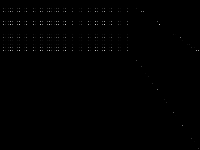 |
 |
 |
| 772 | polygonpack4-10 [MIPLIB] | Antonio Frangioni | Given a set P of polygons, not necessarily convex, and a rectangle, we want to find the subset S of P with largest possible total area and a position every p in S so that there are no overlaps and they are all included in the rectangle. We allow a small set of rotations (0, 90, 180, 270 degrees) for every polygon. The problem is simplified w.r.t. the real application because the polygons do not have (fully encircled) "holes", which are supposedly filled-in separately, although they can have "bays". Models are saved as .lp. Instance LpPackingModel_Dim means that we are trying to pack polygons taken from set ; there are currently 5 different sets, and is 7, 10 or 15. | polygonpack |  |
 |
 |
 |
| 773 | polygonpack4-15 [MIPLIB] | Antonio Frangioni | Given a set P of polygons, not necessarily convex, and a rectangle, we want to find the subset S of P with largest possible total area and a position every p in S so that there are no overlaps and they are all included in the rectangle. We allow a small set of rotations (0, 90, 180, 270 degrees) for every polygon. The problem is simplified w.r.t. the real application because the polygons do not have (fully encircled) "holes", which are supposedly filled-in separately, although they can have "bays". Models are saved as .lp. Instance LpPackingModel_Dim means that we are trying to pack polygons taken from set ; there are currently 5 different sets, and is 7, 10 or 15. | polygonpack |  |
 |
 |
 |
| 774 | polygonpack4-7 [MIPLIB] | Antonio Frangioni | Given a set P of polygons, not necessarily convex, and a rectangle, we want to find the subset S of P with largest possible total area and a position every p in S so that there are no overlaps and they are all included in the rectangle. We allow a small set of rotations (0, 90, 180, 270 degrees) for every polygon. The problem is simplified w.r.t. the real application because the polygons do not have (fully encircled) "holes", which are supposedly filled-in separately, although they can have "bays". Models are saved as .lp. Instance LpPackingModel_Dim means that we are trying to pack polygons taken from set ; there are currently 5 different sets, and is 7, 10 or 15. | polygonpack |  |
 |
 |
 |
| 775 | polygonpack5-15 [MIPLIB] | Antonio Frangioni | Given a set P of polygons, not necessarily convex, and a rectangle, we want to find the subset S of P with largest possible total area and a position every p in S so that there are no overlaps and they are all included in the rectangle. We allow a small set of rotations (0, 90, 180, 270 degrees) for every polygon. The problem is simplified w.r.t. the real application because the polygons do not have (fully encircled) "holes", which are supposedly filled-in separately, although they can have "bays". Models are saved as .lp. Instance LpPackingModel_Dim means that we are trying to pack polygons taken from set ; there are currently 5 different sets, and is 7, 10 or 15. | polygonpack |  |
 |
 |
 |
| 776 | ponderthis0517-inf [MIPLIB] | Rob Pratt | Infeasible version of IBM Ponder This problem (with 52 characters and no spaces) from May 2017: https://www.research.ibm.com/haifa/ponderthis/challenges/May2017.html | - |  |
 |
 |
 |
| 777 | probportfolio [MIPLIB] | Feng Qiu | Sample average approximation formulation of a probabilistic portfolio optimization problem. Solved using ug[SCIP/spx], a distributed massively parallel version of SCIP run on 2,000 cores at the HLRN-II super computer facility. | - |  |
 |
 |
 |
| 778 | prod1 [MIPLIB] | MIPLIB submission pool | Imported from the MIPLIB2010 submissions. | - |  |
 |
 |
 |
| 779 | prod2 [MIPLIB] | MIPLIB submission pool | Imported from the MIPLIB2010 submissions. | - |  |
 |
 |
 |
| 780 | proteindesign121hz512p19 [MIPLIB] | Gleb Belov | Linearized Constraint Programming models of the MiniZinc Challenges 2012-2016. I should be able to produce versions with indicator constraints supported by Gurobi and CPLEX, however don't know if you can use them and if there is a standard format. These MPS were produced by Gurobi 7.0.2 using the MiniZinc develop branch on eb536656062ca13325a96b5d0881742c7d0e3c38 | proteindesign |  |
 |
 |
 |
| 781 | proteindesign121hz512p9 [MIPLIB] | Gleb Belov | Linearized Constraint Programming models of the MiniZinc Challenges 2012-2016. I should be able to produce versions with indicator constraints supported by Gurobi and CPLEX, however don't know if you can use them and if there is a standard format. These MPS were produced by Gurobi 7.0.2 using the MiniZinc develop branch on eb536656062ca13325a96b5d0881742c7d0e3c38 | proteindesign |  |
 |
 |
 |
| 782 | proteindesign121pgb11p9 [MIPLIB] | Gleb Belov | Linearized Constraint Programming models of the MiniZinc Challenges 2012-2016. I should be able to produce versions with indicator constraints supported by Gurobi and CPLEX, however don't know if you can use them and if there is a standard format. These MPS were produced by Gurobi 7.0.2 using the MiniZinc develop branch on eb536656062ca13325a96b5d0881742c7d0e3c38 | proteindesign |  |
 |
 |
 |
| 783 | proteindesign122trx11p8 [MIPLIB] | Gleb Belov | Linearized Constraint Programming models of the MiniZinc Challenges 2012-2016. I should be able to produce versions with indicator constraints supported by Gurobi and CPLEX, however don't know if you can use them and if there is a standard format. These MPS were produced by Gurobi 7.0.2 using the MiniZinc develop branch on eb536656062ca13325a96b5d0881742c7d0e3c38 | proteindesign |  |
 |
 |
 |
| 784 | pw-myciel4 [MIPLIB] | Arie Koster | Model to compute the pathwidth of Mycielski-4 instance from DIMACS graph coloring database | - |  |
 |
 |
 |
| 785 | pythago7824 [MIPLIB] | Felix J. L. Willamowski | 2-coloring of Pythagorean triples | - |  |
 |
 |
 |
| 786 | pythago7825 [MIPLIB] | Felix J. L. Willamowski | 2-coloring of Pythagorean triples | - |  |
 |
 |
 |
| 787 | qap10 [MIPLIB] | MIPLIB submission pool | Imported from the MIPLIB2010 submissions. | - |  |
 |
 |
 |
| 788 | qiu [MIPLIB] | Y. Chiu, J. Eckstein | Fiber-optic network design, logical SONET ring level | - |  |
 |
 |
 |
| 789 | qnet1 [MIPLIB] | MIPLIB submission pool | Imported from the MIPLIB2010 submissions. | - |  |
 |
 |
 |
| 790 | qnet1_o [MIPLIB] | MIPLIB submission pool | Imported from the MIPLIB2010 submissions. | - |  |
 |
 |
 |
| 791 | queens-30 [MIPLIB] | Ashutosh Mahajan | Models the problem of placing as many queens on a 30 by 30 chess board as possible so that each queen threatens at most one other queen. | - |  |
 |
 |
 |
| 792 | r4l4-02-tree-bounds-50 [MIPLIB] | Christian Liebchen | Periodic Event Scheduling Problem (PESP) Model for Timetable Optimization in Public Transport Data originating from (see additional file) https://lintim.math.uni-goettingen.de/ and http://num.math.uni-goettingen.de/~m.goerigk/pesplib/ Notation of the variables in the MIP model according to Sec. 9 in Liebchen (2006) | - |  |
 |
 |
 |
| 793 | r50x360 [MIPLIB] | MIPLIB submission pool | Imported from the MIPLIB2010 submissions. | pr_product |  |
 |
 |
 |
| 794 | radiationm18-12-05 [MIPLIB] | Gleb Belov | Linearized Constraint Programming models of the MiniZinc Challenges 2012-2016. I should be able to produce versions with indicator constraints supported by Gurobi and CPLEX, however don't know if you can use them and if there is a standard format. These MPS were produced by Gurobi 7.0.2 using the MiniZinc develop branch on eb536656062ca13325a96b5d0881742c7d0e3c38 | radiation |  |
 |
 |
 |
| 795 | radiationm40-10-02 [MIPLIB] | Gleb Belov | Linearized Constraint Programming models of the MiniZinc Challenges 2012-2016. I should be able to produce versions with indicator constraints supported by Gurobi and CPLEX, however don't know if you can use them and if there is a standard format. These MPS were produced by Gurobi 7.0.2 using the MiniZinc develop branch on eb536656062ca13325a96b5d0881742c7d0e3c38 | radiation |  |
 |
 |
 |
| 796 | rail01 [MIPLIB] | Thomas Schlechte | Track allocation problem modeled as arc coupling problem | rail0 |  |
 |
 |
 |
| 797 | rail02 [MIPLIB] | Thomas Schlechte | Track allocation problem modeled as arc coupling problem | rail0 |  |
 |
 |
 |
| 798 | rail03 [MIPLIB] | Thomas Schlechte | Track allocation problem modeled as arc coupling problem The problem was solved by CPLEX 12.4. It took approximately 170 hours. | rail0 |  |
 |
 |
 |
| 799 | rail507 [MIPLIB] | A. Caprara, M. Fischetti, P. Toth | Railway crew scheduling | - |  |
 |
 |
 |
| 800 | railway_8_1_0 [MIPLIB] | MIPLIB submission pool | Imported from the MIPLIB2010 submissions. | - |  |
 |
 |
 |
| 801 | ramos3 [MIPLIB] | F. Ramos | Set covering problem from a product manufacturing application | - |  |
 |
 |
 |
| 802 | ran12x21 [MIPLIB] | J. Aronson | Fixed charge transportation problem | ran |  |
 |
 |
 |
| 803 | ran13x13 [MIPLIB] | J. Aronson | Fixed charge transportation problem | ran |  |
 |
 |
 |
| 804 | ran14x18-disj-8 [MIPLIB] | J. Aronson | Fixed charge transportation problem | ran |  |
 |
 |
 |
| 805 | rd-rplusc-21 [MIPLIB] | MIPLIB submission pool | Imported from the MIPLIB2010 submissions. | - |  |
 |
 |
 |
| 806 | reblock115 [MIPLIB] | Andreas Bley | Multi-period mine production scheduling instances | reblock | 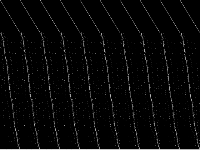 |
 |
 |
 |
| 807 | reblock166 [MIPLIB] | Andreas Bley | Multi-period mine production scheduling instance | reblock | 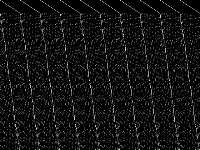 |
 |
 |
 |
| 808 | reblock354 [MIPLIB] | Andreas Bley | Multi-period mine production scheduling instance. Solved using ug[SCIP/spx], a distributed massively parallel version of SCIP run on 2,000 cores at the HLRN-II super computer facility. | reblock | 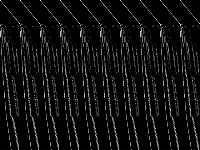 |
 |
 |
 |
| 809 | reblock420 [MIPLIB] | Andreas Bley | Multi-period mine production scheduling instance | reblock | 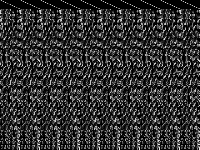 |
 |
 |
 |
| 810 | rentacar [MIPLIB] | MIPLIB submission pool | Imported from the MIPLIB2010 submissions. | - |  |
 |
 |
 |
| 811 | rlp1 [MIPLIB] | MIPLIB submission pool | Imported from the MIPLIB2010 submissions. | - |  |
 |
 |
 |
| 812 | rmatr100-p10 [MIPLIB] | Dmitry Krushinsky | Instance coming from a formulation of the p-Median problem using square cost matrices | rmatr |  |
 |
 |
 |
| 813 | rmatr100-p5 [MIPLIB] | Dmitry Krushinsky | Instance coming from a formulation of the p-Median problem using square cost matrices | rmatr |  |
 |
 |
 |
| 814 | rmatr200-p10 [MIPLIB] | Dmitry Krushinsky | Instance coming from a formulation of the p-Median problem using square cost matrices. Solved by Gurobi 4.6.1 (12 threads) in 19644 seconds (January 2012). | rmatr |  |
 |
 |
 |
| 815 | rmatr200-p20 [MIPLIB] | Dmitry Krushinsky | Instance coming from a formulation of the p-Median problem using square cost matrices. Solved using ug[SCIP/spx], a distributed massively parallel version of SCIP run on 2,000 cores at the HLRN-II super computer facility. | rmatr |  |
 |
 |
 |
| 816 | rmatr200-p5 [MIPLIB] | Dmitry Krushinsky | Instance coming from a formulation of the p-Median problem using square cost matrices | rmatr |  |
 |
 |
 |
| 817 | rmine11 [MIPLIB] | Daniel Espinoza | Set of instances comming from open pit minning over a cube and several time periods and two knapsack constraints per period | rmine |  |
 |
 |
 |
| 818 | rmine13 [MIPLIB] | Daniel Espinoza | Set of instances comming from open pit minning over a cube and several time periods and two knapsack constraints per period | rmine |  |
 |
 |
 |
| 819 | rmine15 [MIPLIB] | Daniel Espinoza | Set of instances comming from open pit minning over a cube and several time periods and two knapsack constraints per period | rmine |  |
 |
 |
 |
| 820 | rmine21 [MIPLIB] | Daniel Espinoza | Instance coming from open pit mining over a cube considering multiple time periods and two knapsack constraints per period | rmine |  |
 |
 |
 |
| 821 | rocI-3-11 [MIPLIB] | Joerg Rambau | Optimal control model in the deterministic dynamic system given by bounded-confidence dynamics in a system of opinions | rocI |  |
 |
 |
 |
| 822 | rocI-4-11 [MIPLIB] | Joerg Rambau | Optimal control model in the deterministic dynamic system given by bounded-confidence dynamics in a system of opinions | rocI |  |
 |
 |
 |
| 823 | rocII-10-11 [MIPLIB] | Joerg Rambau | Optimal control model in the deterministic dynamic system given by bounded-confidence dynamics in a system of opinions | rocI |  |
 |
 |
 |
| 824 | rocII-5-11 [MIPLIB] | Joerg Rambau | Optimal control model in the deterministic dynamic system given by bounded-confidence dynamics in a system of opinions | rocI |  |
 |
 |
 |
| 825 | rocII-8-11 [MIPLIB] | Joerg Rambau | Optimal control model in the deterministic dynamic system given by bounded-confidence dynamics in a system of opinions | rocI |  |
 |
 |
 |
| 826 | rococoB10-011000 [MIPLIB] | A. Chabrier, E. Danna, C. Le Pape, L. Perron | Model for dimensioning the arc capacities in a telecommunication network | rococo |  |
 |
 |
 |
| 827 | rococoC10-001000 [MIPLIB] | A. Chabrier, E. Danna, C. Le Pape, L. Perron | Model for dimensioning the arc capacities in a telecommunication network | rococo |  |
 |
 |
 |
| 828 | rococoC11-010100 [MIPLIB] | A. Chabrier, E. Danna, C. Le Pape, L. Perron | Model for dimensioning the arc capacities in a telecommunication network. | rococo |  |
 |
 |
 |
| 829 | rococoC11-011100 [MIPLIB] | A. Chabrier, E. Danna, C. Le Pape, L. Perron | Model for dimensioning the arc capacities in a telecommunication network. Solved by Gurobi 4.5.1 (4 threads) in 66892.47 seconds. | rococo |  |
 |
 |
 |
| 830 | rococoC12-010001 [MIPLIB] | A. Chabrier, E. Danna, C. Le Pape, L. Perron | Model for dimensioning the arc capacities in a telecommunication network. | rococo |  |
 |
 |
 |
| 831 | roi2alpha3n4 [MIPLIB] | Domenico Salvagnin | Neurobiology application: optimal placing of sensors on the scalp to maximize signal on a given ROI, also taking uniformity of coverage into account. | - |  |
 |
 |
 |
| 832 | roi5alpha10n8 [MIPLIB] | Domenico Salvagnin | Neurobiology application: optimal placing of sensors on the scalp to maximize signal on a given ROI, also taking uniformity of coverage into account. | - |  |
 |
 |
 |
| 833 | roll3000 [MIPLIB] | L. Kroon | Rolling stock and line planning instance | - | 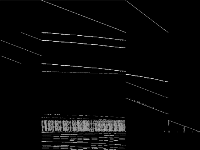 |
 |
 |
 |
| 834 | rout [MIPLIB] | MIPLIB submission pool | Imported from the MIPLIB2010 submissions. | - |  |
 |
 |
 |
| 835 | rpp22falsei [MIPLIB] | Gleb Belov | These are the instances from MiniZinc Challenges 2012-2016 (see www.minizinc.org), compiled for MIP WITH INDICATOR CONSTRAINTS using the develop branch of MiniZinc and CPLEX 12.7.1 on 30 April 2017. Thus, these instances can only be handled by solvers accepting indicator constraints. For instances compiled with big-M/domain decomposition only, see my previous submission to MIPLIB.To recompile, create a directory MODELS, a list lst12_16.txt of the instances with full paths to mzn/dzn files of each instance per line, and say$> ~/install/libmzn/tests/benchmarking/mzn-test.py -l ../lst12_16.txt -slvPrf MZN-CPLEX -debug 1 -addOption "-timeout 3 -D fIndConstr=true -D fMIPdomains=false" -useJoinedName "-writeModel MODELS_IND/%s.mps" Alternatively, you can compile individual instance as follows: $> mzn-cplex -v -s -G linear -output-time ../challenge_2012_2016/mznc2016_probs/zephyrus/zephyrus.mzn ../challenge_2012_2016/mznc2016_p/zephyrus/14__8__6__3.dzn -a -timeout 3 -D fIndConstr=true -D fMIPdomains=false -writeModel MODELS_IND/challenge_2012_2016mznc2016_probszephyruszephyrusmzn-challenge_2012_2016mznc2016_probszephyrus14__8__6__3dzn.mps | rpp |  |
 |
 |
 |
| 836 | rvb-sub [MIPLIB] | S. Weider | Set partitioning instance resulting from a column generation algorithm used for duty scheduling in public transportation | - |  |
 |
 |
 |
| 837 | rwth-timetable [MIPLIB] | Gerald Lach | University Course Timetabling from the RWTH Aachen | - |  |
 |
 |
 |
| 838 | s100 [MIPLIB] | Daniel Espinoza | Wine Scheduling problem with 100 jobs and four processing machines | Spinoza |  |
 |
 |
 |
| 839 | s1234 [MIPLIB] | Siwei Sun | These models come from my cryptographic research and are used to search for the best differential characteristics of the round-reduced versions of the block cipher Serpent with the mixed-integer programming technique. For all the models, including S1234.lp, S56701.lp, S456701.lp, I have found a feasible solution in the corresponding mst file. The challenge is that can we find better solutions or can we find the best solutions. | SiweiSun |  |
 |
 |
 |
| 840 | s250r10 [MIPLIB] | Daniel Espinoza | Wine Scheduling problem with 250 jobs (up to 10 alternatives for processing) and four processing machines | Spinoza |  |
 |
 |
 |
| 841 | s55 [MIPLIB] | Daniel Espinoza | Wine Scheduling problem with 55 jobs and four processing machines | Spinoza |  |
 |
 |
 |
| 842 | s82 [MIPLIB] | Daniel Espinoza | Wine Scheduling problem with 82 jobs and four processing machines | Spinoza |  |
 |
 |
 |
| 843 | satellites2-25 [MIPLIB] | He Renjie | Ihe attachment is some instances generated from real life satelliteschedule problem data,these instances are easier comparable to real lifeproblem. The work is done by me and Alberto Ceselli from Univeristy ofMilano. I donnot know it is hard enough or not, if needs , I can generatemore difficult instances. | satellites |  |
 |
 |
 |
| 844 | satellites2-60-fs [MIPLIB] | He Renjie | Satellite scheduling instance | satellites |  |
 |
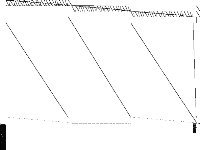 |
 |
| 845 | satellites3-25 [MIPLIB] | He Renjie | Ihe attachment is some instances generated from real life satelliteschedule problem data,these instances are easier comparable to real lifeproblem. The work is done by me and Alberto Ceselli from Univeristy ofMilano. I donnot know it is hard enough or not, if needs , I can generatemore difficult instances. | satellites |  |
 |
 |
 |
| 846 | satellites4-25 [MIPLIB] | He Renjie | Ihe attachment is some instances generated from real life satelliteschedule problem data,these instances are easier comparable to real lifeproblem. The work is done by me and Alberto Ceselli from Univeristy ofMilano. I donnot know it is hard enough or not, if needs , I can generatemore difficult instances. | satellites |  |
 |
 |
 |
| 847 | savsched1 [MIPLIB] | Gerardo Gonzalez | Imported from the MIPLIB2010 submissions. | - |  |
 |
 |
 |
| 848 | scpj4scip [MIPLIB] | Shunji Umetani | This is a random test instance generator for SCP using the scheme of the following paper, namely the column cost c[j] are integer randomly generated from [1,100]; every column covers at least one row; and every row is covered by at least two columns. see reference: E. Balas and A. Ho, Set covering algorithms using cutting planes, heuristics, and subgradient optimization: A computational study, Mathematical Programming, 12 (1980), 37-60. We have newly generated Classes I-N with the following parameter values, where each class has five instances. We have also generated reduced instances by a standard pricing method in the following paper: S. Umetani and M. Yagiura, Relaxation heuristics for the set covering problem, Journal of the Operations Research Society of Japan, 50 (2007), 350-375. You can obtain the instance generator program from the following web site. https://sites.google.com/site/shunjiumetani/benchmark | scp |  |
 |
 |
 |
| 849 | scpk4 [MIPLIB] | Shunji Umetani | This is a random test instance generator for SCP using the scheme of the following paper, namely the column cost c[j] are integer randomly generated from [1,100]; every column covers at least one row; and every row is covered by at least two columns. see reference: E. Balas and A. Ho, Set covering algorithms using cutting planes, heuristics, and subgradient optimization: A computational study, Mathematical Programming, 12 (1980), 37-60. We have newly generated Classes I-N with the following parameter values, where each class has five instances. We have also generated reduced instances by a standard pricing method in the following paper: S. Umetani and M. Yagiura, Relaxation heuristics for the set covering problem, Journal of the Operations Research Society of Japan, 50 (2007), 350-375. You can obtain the instance generator program from the following web site. https://sites.google.com/site/shunjiumetani/benchmark | scp |  |
 |
 |
 |
| 850 | scpl4 [MIPLIB] | Shunji Umetani | This is a random test instance generator for SCP using the scheme of the following paper, namely the column cost c[j] are integer randomly generated from [1,100]; every column covers at least one row; and every row is covered by at least two columns. see reference: E. Balas and A. Ho, Set covering algorithms using cutting planes, heuristics, and subgradient optimization: A computational study, Mathematical Programming, 12 (1980), 37-60. We have newly generated Classes I-N with the following parameter values, where each class has five instances. We have also generated reduced instances by a standard pricing method in the following paper: S. Umetani and M. Yagiura, Relaxation heuristics for the set covering problem, Journal of the Operations Research Society of Japan, 50 (2007), 350-375. You can obtain the instance generator program from the following web site. https://sites.google.com/site/shunjiumetani/benchmark | scp |  |
 |
 |
 |
| 851 | scpm1 [MIPLIB] | Shunji Umetani | This is a random test instance generator for SCP using the scheme of the following paper, namely the column cost c[j] are integer randomly generated from [1,100]; every column covers at least one row; and every row is covered by at least two columns. see reference: E. Balas and A. Ho, Set covering algorithms using cutting planes, heuristics, and subgradient optimization: A computational study, Mathematical Programming, 12 (1980), 37-60. We have newly generated Classes I-N with the following parameter values, where each class has five instances. We have also generated reduced instances by a standard pricing method in the following paper: S. Umetani and M. Yagiura, Relaxation heuristics for the set covering problem, Journal of the Operations Research Society of Japan, 50 (2007), 350-375. You can obtain the instance generator program from the following web site. https://sites.google.com/site/shunjiumetani/benchmark | scp |  |
 |
 |
 |
| 852 | sct1 [MIPLIB] | Siemens | Assembly line balancing for printed circuit board production | sct |  |
 |
 |
 |
| 853 | sct2 [MIPLIB] | Siemens | Assembly line balancing for printed circuit board production | sct |  |
 |
 |
 |
| 854 | sct31 [MIPLIB] | Siemens | Assembly line balancing for printed circuit board production | sct |  |
 |
 |
 |
| 855 | sct32 [MIPLIB] | Siemens | Assembly line balancing for printed circuit board production. First solved by Gurobi 7.0 in 65 hours (32 threads). | sct |  |
 |
 |
 |
| 856 | sct5 [MIPLIB] | Siemens | Assembly line balancing for printed circuit board production | sct |  |
 |
 |
 |
| 857 | seqsolve1 [MIPLIB] | Irv Lustig | The 3 problems in this group (seqsolve1-seqsolve3) represent a hierarchical optimization process, which is derived from a customer problem for assigning people to sites into blocks of time on days of the week. The specialty of this submission is that the best known solution for seqsolveX can be used as a MIP start for seqsolveX+1. For a description of the connections between the problems, please refer to the README.txt contained in the model data for this submission, which also includes MIP start files and a Gurobi log file. | seqsolve |  |
 |
 |
 |
| 858 | seqsolve2short4288 [MIPLIB] | Irv Lustig | The 3 problems in this group (seqsolve1-seqsolve3) represent a hierarchical optimization process, which is derived from a customer problem for assigning people to sites into blocks of time on days of the week. The specialty of this submission is that the best known solution for seqsolveX can be used as a MIP start for seqsolveX+1. For a description of the connections between the problems, please refer to the README.txt contained in the model data for this submission, which also includes MIP start files and a Gurobi log file. | seqsolve |  |
 |
 |
 |
| 859 | seqsolve3short4288excess384 [MIPLIB] | Irv Lustig | The 3 problems in this group (seqsolve1-seqsolve3) represent a hierarchical optimization process, which is derived from a customer problem for assigning people to sites into blocks of time on days of the week. The specialty of this submission is that the best known solution for seqsolveX can be used as a MIP start for seqsolveX+1. For a description of the connections between the problems, please refer to the README.txt contained in the model data for this submission, which also includes MIP start files and a Gurobi log file. | seqsolve |  |
 |
 |
 |
| 860 | set3-20 [MIPLIB] | Kerem Akartunali | Multi-item lot-sizing with backlogging. Solved by SCIP 3.1.1 parallelized by UG 0.7.5 linked to CPLEX 12.6 as an LP solver on HLRN III (https://www.hlrn.de/home/view/System3/CrayHardware). Due to time limit restrictions, four repeated runs, each starting from the checkpointing file of the previous run, were done. Each run had a time limit of 12 hours while using 6144 (runs 1) or 3072 cores (run 2 - 4). | set3 |  |
 |
 |
 |
| 861 | seymour [MIPLIB] | W. Cook, P. Seymour | A set-covering problem that arose from work related to the proof of the 4-color theorem. | - |  |
 |
 |
 |
| 862 | seymour1 [MIPLIB] | MIPLIB submission pool | Imported from the MIPLIB2010 submissions. | - |  |
 |
 |
 |
| 863 | shiftreg1-4 [MIPLIB] | Domenico Salvagnin | Multi-activity shift scheduling problem with 1 activity and 12 employees, using an implicit model based on a regular language. | shiftreg |  |
 |
 |
 |
| 864 | shiftreg2-7 [MIPLIB] | Domenico Salvagnin | Multi-activity shift scheduling problem with 2 activities and 12 employees, using an implicit model based on a regular language. | shiftreg |  |
 |
 |
 |
| 865 | shiftreg5-1 [MIPLIB] | Domenico Salvagnin | Multi-activity shift scheduling problem with 5 activities and 24 employees, using an implicit model based on a regular language. | shiftreg |  |
 |
 |
 |
| 866 | shipsched [MIPLIB] | Marco Luebbecke | A ship scheduling problem on the Kiel Canal | - |  |
 |
 |
 |
| 867 | shipschedule3shipsi [MIPLIB] | Gleb Belov | These are the instances from MiniZinc Challenges 2012-2016 (see www.minizinc.org), compiled for MIP WITH INDICATOR CONSTRAINTS using the develop branch of MiniZinc and CPLEX 12.7.1 on 30 April 2017. Thus, these instances can only be handled by solvers accepting indicator constraints. For instances compiled with big-M/domain decomposition only, see my previous submission to MIPLIB.To recompile, create a directory MODELS, a list lst12_16.txt of the instances with full paths to mzn/dzn files of each instance per line, and say$> ~/install/libmzn/tests/benchmarking/mzn-test.py -l ../lst12_16.txt -slvPrf MZN-CPLEX -debug 1 -addOption "-timeout 3 -D fIndConstr=true -D fMIPdomains=false" -useJoinedName "-writeModel MODELS_IND/%s.mps" Alternatively, you can compile individual instance as follows: $> mzn-cplex -v -s -G linear -output-time ../challenge_2012_2016/mznc2016_probs/zephyrus/zephyrus.mzn ../challenge_2012_2016/mznc2016_p/zephyrus/14__8__6__3.dzn -a -timeout 3 -D fIndConstr=true -D fMIPdomains=false -writeModel MODELS_IND/challenge_2012_2016mznc2016_probszephyruszephyrusmzn-challenge_2012_2016mznc2016_probszephyrus14__8__6__3dzn.mps | shipschedule |  |
 |
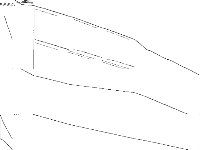 |
 |
| 868 | shipschedule6shipsmixi [MIPLIB] | Gleb Belov | These are the instances from MiniZinc Challenges 2012-2016 (see www.minizinc.org), compiled for MIP WITH INDICATOR CONSTRAINTS using the develop branch of MiniZinc and CPLEX 12.7.1 on 30 April 2017. Thus, these instances can only be handled by solvers accepting indicator constraints. For instances compiled with big-M/domain decomposition only, see my previous submission to MIPLIB.To recompile, create a directory MODELS, a list lst12_16.txt of the instances with full paths to mzn/dzn files of each instance per line, and say$> ~/install/libmzn/tests/benchmarking/mzn-test.py -l ../lst12_16.txt -slvPrf MZN-CPLEX -debug 1 -addOption "-timeout 3 -D fIndConstr=true -D fMIPdomains=false" -useJoinedName "-writeModel MODELS_IND/%s.mps" Alternatively, you can compile individual instance as follows: $> mzn-cplex -v -s -G linear -output-time ../challenge_2012_2016/mznc2016_probs/zephyrus/zephyrus.mzn ../challenge_2012_2016/mznc2016_p/zephyrus/14__8__6__3.dzn -a -timeout 3 -D fIndConstr=true -D fMIPdomains=false -writeModel MODELS_IND/challenge_2012_2016mznc2016_probszephyruszephyrusmzn-challenge_2012_2016mznc2016_probszephyrus14__8__6__3dzn.mps | shipschedule |  |
 |
 |
 |
| 869 | shipschedule8shipsmixuci [MIPLIB] | Gleb Belov | These are the instances from MiniZinc Challenges 2012-2016 (see www.minizinc.org), compiled for MIP WITH INDICATOR CONSTRAINTS using the develop branch of MiniZinc and CPLEX 12.7.1 on 30 April 2017. Thus, these instances can only be handled by solvers accepting indicator constraints. For instances compiled with big-M/domain decomposition only, see my previous submission to MIPLIB.To recompile, create a directory MODELS, a list lst12_16.txt of the instances with full paths to mzn/dzn files of each instance per line, and say$> ~/install/libmzn/tests/benchmarking/mzn-test.py -l ../lst12_16.txt -slvPrf MZN-CPLEX -debug 1 -addOption "-timeout 3 -D fIndConstr=true -D fMIPdomains=false" -useJoinedName "-writeModel MODELS_IND/%s.mps" Alternatively, you can compile individual instance as follows: $> mzn-cplex -v -s -G linear -output-time ../challenge_2012_2016/mznc2016_probs/zephyrus/zephyrus.mzn ../challenge_2012_2016/mznc2016_p/zephyrus/14__8__6__3.dzn -a -timeout 3 -D fIndConstr=true -D fMIPdomains=false -writeModel MODELS_IND/challenge_2012_2016mznc2016_probszephyruszephyrusmzn-challenge_2012_2016mznc2016_probszephyrus14__8__6__3dzn.mps | shipschedule |  |
 |
 |
 |
| 870 | shs1014 [MIPLIB] | Christoph Helmberg | Joint online truck scheduling and inventory management for multiple warehouses. | shs |  |
 |
 |
 |
| 871 | shs1023 [MIPLIB] | C. Helmberg | Joint online truck scheduling and inventory management for multiple warehouses. The problem was solved by CPLEX 12.5 on a Intel Xeon E7540 @ 2.00 GHz, 1TB with 24 cores and 24 threads. The maximum memory requirements were 410GB. It took approximately 114.5 hours. | shs |  |
 |
 |
 |
| 872 | shs1042 [MIPLIB] | C. Helmberg | Joint online truck scheduling and inventory management for multiple warehouses. | shs |  |
 |
 |
 |
| 873 | siena1 [MIPLIB] | Double-Click SAS | Crew scheduling instance | - |  |
 |
 |
 |
| 874 | sing11 [MIPLIB] | Daniel Espinoza | Imported from the MIPLIB2010 submissions. | sing |  |
 |
 |
 |
| 875 | sing17 [MIPLIB] | Daniel Espinoza | Imported from the MIPLIB2010 submissions. | sing |  |
 |
 |
 |
| 876 | sing326 [MIPLIB] | Daniel Espinoza | Imported from the MIPLIB2010 submissions. | sing |  |
 |
 |
 |
| 877 | sing44 [MIPLIB] | Daniel Espinoza | Imported from the MIPLIB2010 submissions. | sing |  |
 |
 |
 |
| 878 | sing5 [MIPLIB] | Daniel Espinoza | Imported from the MIPLIB2010 submissions. | sing |  |
 |
 |
 |
| 879 | snip10x10-35r1budget17 [MIPLIB] | Utz-Uwe Haus | Exact MILP reformulation using binary decision diagrams to obtain scenario bundles of 2-stage stochastic expected shortest path and expected maximum flow problem with decision dependent scenario probabilities. Notes: * very few binary variables * for each fixing of the binaries a system of equations computing conditioned probabilities remains | - |  |
 |
 |
 |
| 880 | snp-02-004-104 [MIPLIB] | Gerald Gamrath | Supply network planning problems. | supplynetworkplanning |  |
 |
 |
 |
| 881 | snp-04-052-052 [MIPLIB] | Gerald Gamrath | Supply network planning problems. | supplynetworkplanning |  |
 |
 |
 |
| 882 | snp-06-004-052 [MIPLIB] | Gerald Gamrath | Supply network planning problems. | supplynetworkplanning |  |
 |
 |
 |
| 883 | snp-10-004-052 [MIPLIB] | Gerald Gamrath | Supply network planning problems. | supplynetworkplanning |  |
 |
 |
 |
| 884 | snp-10-052-052 [MIPLIB] | Gerald Gamrath | Supply network planning problems. | supplynetworkplanning |  |
 |
 |
 |
| 885 | sorrell3 [MIPLIB] | Toni Sorrell | These instances are based on Neil Sloane's Challenge problems: Independent Sets in Graphs. | independentset |  |
 |
 |
 |
| 886 | sorrell4 [MIPLIB] | Toni Sorrell | These instances are based on Neil Sloane's Challenge problems: Independent Sets in Graphs. | independentset |  |
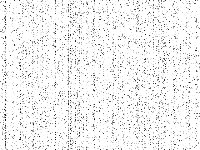 |
 |
 |
| 887 | sorrell7 [MIPLIB] | Toni Sorrell | These instances are based on Neil Sloane's Challenge problems: Independent Sets in Graphs. | independentset |  |
 |
 |
 |
| 888 | sorrell8 [MIPLIB] | Toni Sorrell | These instances are based on Neil Sloane's Challenge problems: Independent Sets in Graphs. | independentset |  |
 |
 |
 |
| 889 | sp150x300d [MIPLIB] | MIPLIB submission pool | Imported from the MIPLIB2010 submissions. | sp_product |  |
 |
 |
 |
| 890 | sp97ar [MIPLIB] | J. Goessens, S. v. Hoessel, L. Kroon | Railway line planning instance. Solved with Gurobi 4.5.1 on a 12-core Linux system in 2678.77 sec. | sp9 |  |
 |
 |
 |
| 891 | sp97ic [MIPLIB] | J. Goessens, S. v. Hoessel, L. Kroon | Railway line planning instance | sp9 | 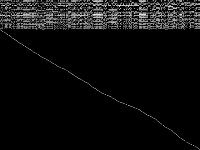 |
 |
 |
 |
| 892 | sp98ar [MIPLIB] | J. Goessens, S. v. Hoessel, L. Kroon | Railway line planning instance | sp9 |  |
 |
 |
 |
| 893 | sp98ic [MIPLIB] | J. Goessens, S. v. Hoessel, L. Kroon | Railway line planning instance | sp9 | 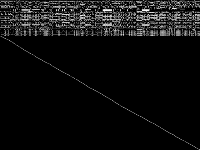 |
 |
 |
 |
| 894 | sp98ir [MIPLIB] | J. Goessens, S. v. Hoessel, L. Kroon | Railway line planning instance | sp9 |  |
 |
 |
 |
| 895 | splice1k1 [MIPLIB] | Gleb Belov | Linearized Constraint Programming models of the MiniZinc Challenges 2012-2016. I should be able to produce versions with indicator constraints supported by Gurobi and CPLEX, however don't know if you can use them and if there is a standard format. These MPS were produced by Gurobi 7.0.2 using the MiniZinc develop branch on eb536656062ca13325a96b5d0881742c7d0e3c38 | splice |  |
 |
 |
 |
| 896 | splice1k1i [MIPLIB] | Gleb Belov | These are the instances from MiniZinc Challenges 2012-2016 (see www.minizinc.org), compiled for MIP WITH INDICATOR CONSTRAINTS using the develop branch of MiniZinc and CPLEX 12.7.1 on 30 April 2017. Thus, these instances can only be handled by solvers accepting indicator constraints. For instances compiled with big-M/domain decomposition only, see my previous submission to MIPLIB.To recompile, create a directory MODELS, a list lst12_16.txt of the instances with full paths to mzn/dzn files of each instance per line, and say$> ~/install/libmzn/tests/benchmarking/mzn-test.py -l ../lst12_16.txt -slvPrf MZN-CPLEX -debug 1 -addOption "-timeout 3 -D fIndConstr=true -D fMIPdomains=false" -useJoinedName "-writeModel MODELS_IND/%s.mps" Alternatively, you can compile individual instance as follows: $> mzn-cplex -v -s -G linear -output-time ../challenge_2012_2016/mznc2016_probs/zephyrus/zephyrus.mzn ../challenge_2012_2016/mznc2016_p/zephyrus/14__8__6__3.dzn -a -timeout 3 -D fIndConstr=true -D fMIPdomains=false -writeModel MODELS_IND/challenge_2012_2016mznc2016_probszephyruszephyrusmzn-challenge_2012_2016mznc2016_probszephyrus14__8__6__3dzn.mps | splice |  |
 |
 |
 |
| 897 | square23 [MIPLIB] | Sascha Kurz | Squaring the square For a given integer n, determine the minimum number of squares in a tiling of an \\(n\\times n\\) square using using only integer sided squares of smaller size. (Although the models get quite large even for moderate n, they can be solved to optimality for all \\(n \\le 61\\), while challenging the MIP solver, especially the presolver.) | square | 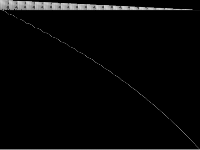 |
 |
 |
 |
| 898 | square31 [MIPLIB] | Sascha Kurz | Squaring the square For a given integer n, determine the minimum number of squares in a tiling of an \\(n\\times n\\) square using using only integer sided squares of smaller size. (Although the models get quite large even for moderate n, they can be solved to optimality for all \\(n \\le 61\\), while challenging the MIP solver, especially the presolver.) | square | 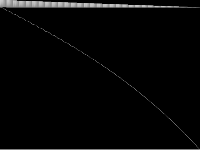 |
 |
 |
 |
| 899 | square37 [MIPLIB] | Sascha Kurz | Squaring the square For a given integer n, determine the minimum number of squares in a tiling of an \\(n\\times n\\) square using using only integer sided squares of smaller size. (Although the models get quite large even for moderate n, they can be solved to optimality for all \\(n \\le 61\\), while challenging the MIP solver, especially the presolver.) | square | 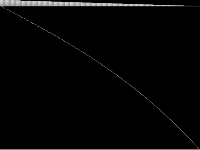 |
 |
 |
 |
| 900 | square41 [MIPLIB] | Sascha Kurz | Squaring the square For a given integer n, determine the minimum number of squares in a tiling of an \\(n\\times n\\) square using using only integer sided squares of smaller size. (Although the models get quite large even for moderate n, they can be solved to optimality for all \\(n \\le 61\\), while challenging the MIP solver, especially the presolver.) | square | 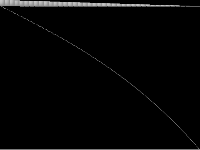 |
 |
 |
 |
| 901 | square47 [MIPLIB] | Sascha Kurz | Squaring the square For a given integer n, determine the minimum number of squares in a tiling of an \\(n\\times n\\) square using using only integer sided squares of smaller size. (Although the models get quite large even for moderate n, they can be solved to optimality for all \\(n \\le 61\\), while challenging the MIP solver, especially the presolver.) | square | 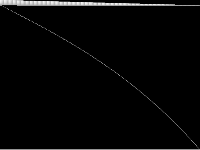 |
 |
 |
 |
| 902 | stein15inf [MIPLIB] | MIPLIB submission pool | Imported from the MIPLIB2010 submissions. | stein |  |
 |
 |
 |
| 903 | stein45inf [MIPLIB] | MIPLIB submission pool | Imported from the MIPLIB2010 submissions. | stein | 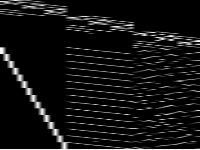 |
 |
 |
 |
| 904 | stein9inf [MIPLIB] | MIPLIB submission pool | Imported from the MIPLIB2010 submissions. | stein |  |
 |
 |
 |
| 905 | stoch-vrpvrp-s5v2c8vrp-v2c8i [MIPLIB] | Gleb Belov | These are the instances from MiniZinc Challenges 2012-2016 (see www.minizinc.org), compiled for MIP WITH INDICATOR CONSTRAINTS using the develop branch of MiniZinc and CPLEX 12.7.1 on 30 April 2017. Thus, these instances can only be handled by solvers accepting indicator constraints. For instances compiled with big-M/domain decomposition only, see my previous submission to MIPLIB.To recompile, create a directory MODELS, a list lst12_16.txt of the instances with full paths to mzn/dzn files of each instance per line, and say$> ~/install/libmzn/tests/benchmarking/mzn-test.py -l ../lst12_16.txt -slvPrf MZN-CPLEX -debug 1 -addOption "-timeout 3 -D fIndConstr=true -D fMIPdomains=false" -useJoinedName "-writeModel MODELS_IND/%s.mps" Alternatively, you can compile individual instance as follows: $> mzn-cplex -v -s -G linear -output-time ../challenge_2012_2016/mznc2016_probs/zephyrus/zephyrus.mzn ../challenge_2012_2016/mznc2016_p/zephyrus/14__8__6__3.dzn -a -timeout 3 -D fIndConstr=true -D fMIPdomains=false -writeModel MODELS_IND/challenge_2012_2016mznc2016_probszephyruszephyrusmzn-challenge_2012_2016mznc2016_probszephyrus14__8__6__3dzn.mps | vrp |  |
 |
 |
 |
| 906 | stockholm [MIPLIB] | Paul Rubin | Toll booth placement problem | - |  |
 |
 |
 |
| 907 | stp3d [MIPLIB] | T. Koch | Steiner tree packing instance in a 3 dimensional grid-graph, LP relaxation is highly degenerate. Alkis Vazacopoulos reports finding the first feasible solution of this instance using XPRESS 2006B. This instance was solved by a first implementation of ParaSCIP using up to 2048 cores of HLRN-II(http://www.hlrn.de). ParaSCIP, mainly developed by Yuji Shinano, is an extension of SCIP and realizes a parallelization on a distributed memory computing environment. For being able to interrupt and warmstart the computations, ParaSCIP has a checkpoint mechanism. Therefore, selected subproblems are stored as warm start information, which allows to virtually run ParaSCIP, although the HLRN-II environment imposes a time limit of 48 hours per run. The problem was presolved several times with SCIP presolving techniques. After that, it took approximately 114 hours to solve this instance. | - |  |
 |
 |
 |
| 908 | supportcase1 [MIPLIB] | Michael Winkler | MIP instances collected from Gurobi forum with unknown application | - |  |
 |
 |
 |
| 909 | supportcase10 [MIPLIB] | Michael Winkler | MIP instances collected from Gurobi forum with unknown application | - |  |
 |
 |
 |
| 910 | supportcase12 [MIPLIB] | Michael Winkler | MIP instances collected from Gurobi forum with unknown application | - |  |
 |
 |
 |
| 911 | supportcase14 [MIPLIB] | Michael Winkler | MIP instances collected from Gurobi forum with unknown application | - |  |
 |
 |
 |
| 912 | supportcase16 [MIPLIB] | Michael Winkler | MIP instances collected from Gurobi forum with unknown application | - |  |
 |
 |
 |
| 913 | supportcase17 [MIPLIB] | Michael Winkler | MIP instances collected from Gurobi forum with unknown application | - |  |
 |
 |
 |
| 914 | supportcase18 [MIPLIB] | Michael Winkler | MIP instances collected from Gurobi forum with unknown application | - |  |
 |
 |
 |
| 915 | supportcase19 [MIPLIB] | Michael Winkler | MIP instances collected from Gurobi forum with unknown application | - |  |
 |
 |
 |
| 916 | supportcase2 [MIPLIB] | Michael Winkler | MIP instances collected from Gurobi forum with unknown application | - |  |
 |
 |
 |
| 917 | supportcase20 [MIPLIB] | Michael Winkler | MIP instances collected from Gurobi forum with unknown application | - |  |
 |
 |
 |
| 918 | supportcase21i [MIPLIB] | Michael Winkler | MIP with Indicator instances collected from Gurobi forum with unknown application | - |  |
 |
 |
 |
| 919 | supportcase22 [MIPLIB] | Michael Winkler | MIP instances collected from Gurobi forum with unknown application | - |  |
 |
 |
 |
| 920 | supportcase23 [MIPLIB] | Michael Winkler | MIP instances collected from Gurobi forum with unknown application | - |  |
 |
 |
 |
| 921 | supportcase25 [MIPLIB] | Michael Winkler | MIP instances collected from Gurobi forum with unknown application | - |  |
 |
 |
 |
| 922 | supportcase26 [MIPLIB] | Michael Winkler | MIP instances collected from Gurobi forum with unknown application | - |  |
 |
 |
 |
| 923 | supportcase27i [MIPLIB] | Michael Winkler | MIP with Indicator instances collected from Gurobi forum with unknown application | - |  |
 |
 |
 |
| 924 | supportcase28i [MIPLIB] | Michael Winkler | MIP with Indicator instances collected from Gurobi forum with unknown application | - |  |
 |
 |
 |
| 925 | supportcase29 [MIPLIB] | Domenico Salvagnin | Instance coming from IBM developerWorks forum with unknown application. | - |  |
 |
 |
 |
| 926 | supportcase3 [MIPLIB] | Michael Winkler | MIP instances collected from Gurobi forum with unknown application Solved with ParaSCIP in 1551 seconds with 71 solvers(72 cores). | - |  |
 |
 |
 |
| 927 | supportcase30 [MIPLIB] | Domenico Salvagnin | Instance coming from IBM developerWorks forum with unknown application. | - |  |
 |
 |
 |
| 928 | supportcase31 [MIPLIB] | Domenico Salvagnin | Instance coming from IBM developerWorks forum with unknown application. | - | 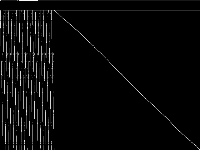 |
 |
 |
 |
| 929 | supportcase33 [MIPLIB] | Domenico Salvagnin | Instance coming from IBM developerWorks forum with unknown application. | - |  |
 |
 |
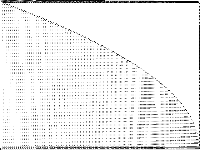 |
| 930 | supportcase34 [MIPLIB] | Domenico Salvagnin | Instance coming from IBM developerWorks forum with unknown application. | - |  |
 |
 |
 |
| 931 | supportcase35 [MIPLIB] | Domenico Salvagnin | Instance coming from IBM developerWorks forum with unknown application. | - |  |
 |
 |
 |
| 932 | supportcase37 [MIPLIB] | Domenico Salvagnin | Instance coming from IBM developerWorks forum with unknown application. | - |  |
 |
 |
 |
| 933 | supportcase39 [MIPLIB] | Domenico Salvagnin | Instance coming from IBM developerWorks forum with unknown application. | - |  |
 |
 |
 |
| 934 | supportcase4 [MIPLIB] | Michael Winkler | MIP instances collected from Gurobi forum with unknown application | - |  |
 |
 |
 |
| 935 | supportcase40 [MIPLIB] | Domenico Salvagnin | Instance coming from IBM developerWorks forum with unknown application. | - |  |
 |
 |
 |
| 936 | supportcase41 [MIPLIB] | Domenico Salvagnin | Instance coming from IBM developerWorks forum with unknown application. | - |  |
 |
 |
 |
| 937 | supportcase42 [MIPLIB] | Domenico Salvagnin | Instance coming from IBM developerWorks forum with unknown application. | - |  |
 |
 |
 |
| 938 | supportcase43 [MIPLIB] | Domenico Salvagnin | Instance coming from IBM developerWorks forum with unknown application. | - |  |
 |
 |
 |
| 939 | supportcase6 [MIPLIB] | Michael Winkler | MIP instances collected from Gurobi forum with unknown application | - | 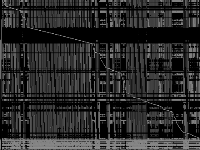 |
 |
 |
 |
| 940 | supportcase7 [MIPLIB] | Michael Winkler | MIP instances collected from Gurobi forum with unknown application | - | 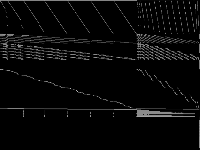 |
 |
 |
 |
| 941 | swath [MIPLIB] | D. Panton | Model arising from the defense industry, involves planning missions for radar surveillance. John Forrest and Laszlo Ladanyi solved this instance by reformulation in 1999. Alkis Vazacopoulos reports solving this instance using XPRESS 2006B. | swath |  |
 |
 |
 |
| 942 | swath1 [MIPLIB] | D. Panton | Model arising from the defense industry, involves planning missions for radar surveillance. | swath |  |
 |
 |
 |
| 943 | swath2 [MIPLIB] | D. Panton | Model arising from the defense industry, involves planning missions for radar surveillance. | swath |  |
 |
 |
 |
| 944 | swath3 [MIPLIB] | D. Panton | Model arising from the defense industry, involves planning missions for radar surveillance. | swath |  |
 |
 |
 |
| 945 | t11nonreg [MIPLIB] | Sujayandra Vaddagiri | RoutingProblem | - |  |
 |
 |
 |
| 946 | t1717 [MIPLIB] | R. Borndörfer | Vehicle scheduling set partitioning problem from Berlin's Telebus handicapped people's transportation system | - |  |
 |
 |
 |
| 947 | t1722 [MIPLIB] | R. Borndörfer | Vehicle scheduling set partitioning problem from Berlin's Telebus handicapped people's transportation system | - | 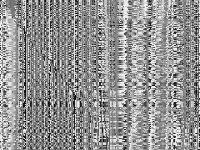 |
 |
 |
 |
| 948 | ta1-UUM [MIPLIB] | MIPLIB submission pool | Imported from the MIPLIB2010 submissions. | network_design |  |
 |
 |
 |
| 949 | ta2-UUE [MIPLIB] | MIPLIB submission pool | Imported from the MIPLIB2010 submissions. | network_design | 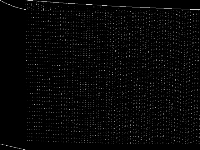 |
 |
 |
 |
| 950 | tanglegram4 [MIPLIB] | Falk Hueffner | The NP-hard Balanced Subgraph problem (variant of MaxCut) encoded as ILPs. Real-world instances from two applications from bioinformatics, finding monotone subsystems in gene regulatory networks (http://dx.doi.org/10.1007/s10878-009-9212-2) and finding optimal layouts of tanglegrams (http://dx.doi.org/10.1007/978-3-642-11269-0). | huefner |  |
 |
 |
 |
| 951 | tanglegram6 [MIPLIB] | Falk Hueffner | The NP-hard Balanced Subgraph problem (variant of MaxCut) encoded as ILPs. Real-world instances from two applications from bioinformatics, finding monotone subsystems in gene regulatory networks (http://dx.doi.org/10.1007/s10878-009-9212-2) and finding optimal layouts of tanglegrams (http://dx.doi.org/10.1007/978-3-642-11269-0). | huefner |  |
 |
 |
 |
| 952 | tbfp-bigm [MIPLIB] | Rob Pratt | Two formulations (big-M and network-based) for traveling baseball fan problem. Uses data from 2014 Major League Baseball regular season. Paper uses 2014 data: http://support.sas.com/resources/papers/proceedings14/SAS101-2014.pdf Blog post uses 2015 data: http://blogs.sas.com/content/operations/2015/04/03/the-traveling-baseball-fan-problem/ | - |  |
 |
 |
 |
| 953 | tbfp-network [MIPLIB] | Rob Pratt | Two formulations (big-M and network-based) for traveling baseball fan problem. Uses data from 2014 Major League Baseball regular season. Paper uses 2014 data: http://support.sas.com/resources/papers/proceedings14/SAS101-2014.pdf Blog post uses 2015 data: http://blogs.sas.com/content/operations/2015/04/03/the-traveling-baseball-fan-problem/ | - |  |
 |
 |
 |
| 954 | Test3 [MIPLIB] | MIPLIB submission pool | Imported from the MIPLIB2010 submissions. | - |  |
 |
 |
 |
| 955 | thor50dday [MIPLIB] | Daniel Rehfeldt | Steiner tree problem in graphs instance, consisting of a complete graph with 231 vertices of which 50 are terminals. The vertices correspond to cities (mostly capitals) around the world, the edges weights correspond to the distances in km. | - |  |
 |
 |
 |
| 956 | timtab1 [MIPLIB] | C. Liebchen, R. Möhring | Public transport scheduling problem | timtab |  |
 |
 |
 |
| 957 | timtab1CUTS [MIPLIB] | C. Liebchen, R. Möhring | Public transport scheduling problem | timtab |  |
 |
 |
 |
| 958 | tokyometro [MIPLIB] | Hsiang-Yun WU | The layout model for Tokyo Metro Map | - |  |
 |
 |
 |
| 959 | toll-like [MIPLIB] | Falk Hueffner | The NP-hard Balanced Subgraph problem (variant of MaxCut) encoded as ILPs. Real-world instances from two applications from bioinformatics, finding monotone subsystems in gene regulatory networks (http://dx.doi.org/10.1007/s10878-009-9212-2) and finding optimal layouts of tanglegrams (http://dx.doi.org/10.1007/978-3-642-11269-0). Solved by Gurobi 4.6 (8 threads) in about four days after a variable transformation reducing symmetry. | huefner |  |
 |
 |
 |
| 960 | tpl-tub-ss16 [MIPLIB] | János Höner | Model for the Post-Enrollment Course Timetabling Problem at TU Berlin from the summer term 2016 and the winter term 2016/2017 | - |  |
 |
 |
 |
| 961 | tpl-tub-ws1617 [MIPLIB] | János Höner | Model for the Post-Enrollment Course Timetabling Problem at TU Berlin from the summer term 2016 and the winter term 2016/2017 | - |  |
 |
 |
 |
| 962 | tr12-30 [MIPLIB] | MIPLIB submission pool | Imported from the MIPLIB2010 submissions. | - |  |
 |
 |
 |
| 963 | traininstance2 [MIPLIB] | Gleb Belov | Linearized Constraint Programming models of the MiniZinc Challenges 2012-2016. I should be able to produce versions with indicator constraints supported by Gurobi and CPLEX, however don't know if you can use them and if there is a standard format. These MPS were produced by Gurobi 7.0.2 using the MiniZinc develop branch on eb536656062ca13325a96b5d0881742c7d0e3c38 | traininstance |  |
 |
 |
 |
| 964 | traininstance6 [MIPLIB] | Gleb Belov | Linearized Constraint Programming models of the MiniZinc Challenges 2012-2016. I should be able to produce versions with indicator constraints supported by Gurobi and CPLEX, however don't know if you can use them and if there is a standard format. These MPS were produced by Gurobi 7.0.2 using the MiniZinc develop branch on eb536656062ca13325a96b5d0881742c7d0e3c38 | traininstance |  |
 |
 |
 |
| 965 | transportmoment [MIPLIB] | G. Gamrath | Transport momentum maximization in a capacitated gas network, cycles are forbidden by pseudo pressures. Solved by Gurobi 4.6.1 (12 threads) in 30 seconds (January 2012). | - |  |
 |
 |
 |
| 966 | trento1 [MIPLIB] | MIPLIB submission pool | Imported from the MIPLIB2010 submissions. | - |  |
 |
 |
 |
| 967 | triptim1 [MIPLIB] | MIPLIB submission pool | Imported from the MIPLIB2010 submissions. | triptim |  |
 |
 |
 |
| 968 | triptim2 [MIPLIB] | MIPLIB submission pool | Imported from the MIPLIB2010 submissions. | triptim |  |
 |
 |
 |
| 969 | triptim4 [MIPLIB] | MIPLIB submission pool | Imported from the MIPLIB2010 submissions. | triptim |  |
 |
 |
 |
| 970 | triptim8 [MIPLIB] | MIPLIB submission pool | Imported from the MIPLIB2010 submissions. | triptim |  |
 |
 |
 |
| 971 | tw-myciel4 [MIPLIB] | Arie Koster | Model to compute the treewidth of the Mycielski-4 instance from the DIMACS graph coloring database. Solved in June 2013 by CPLEX 12.5.1 (12 threads) in about 66 hours. The solving was performed in two steps: first solving with 50 GB tree memory limit (took 11307.42 seconds), after that, setting the tree memory limit to 80 GB and switching to depth first search (took 226152.14 seconds). | - | 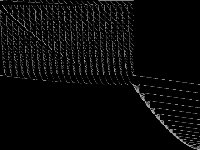 |
 |
 |
 |
| 972 | uccase10 [MIPLIB] | Daniel Espinoza | Imported from the MIPLIB2010 submissions. | uccase |  |
 |
 |
 |
| 973 | uccase12 [MIPLIB] | Daniel Espinoza | Imported from the MIPLIB2010 submissions. | uccase |  |
 |
 |
 |
| 974 | uccase7 [MIPLIB] | Daniel Espinoza | Imported from the MIPLIB2010 submissions. | uccase |  |
 |
 |
 |
| 975 | uccase8 [MIPLIB] | Daniel Espinoza | Imported from the MIPLIB2010 submissions. | uccase |  |
 |
 |
 |
| 976 | uccase9 [MIPLIB] | Daniel Espinoza | Imported from the MIPLIB2010 submissions. | uccase |  |
 |
 |
 |
| 977 | uct-subprob [MIPLIB] | Gerald Lach | Subproblem of a university course timetabling problem. Switched to "easy" because it was solved by Gurobi 5.0 in 2106 seconds (May 2012). | - |  |
 |
 |
 |
| 978 | umts [MIPLIB] | C. Polo | Telecommunications network model | - | 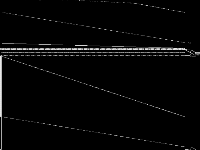 |
 |
 |
 |
| 979 | unitcal_7 [MIPLIB] | R. O’Neill | California seven day unit commitment problem | - |  |
 |
 |
 |
| 980 | usAbbrv-8-25_70 [MIPLIB] | publicly available | Imported from MIPLIB2010. | - |  |
 |
 |
 |
| 981 | v150d30-2hopcds [MIPLIB] | Austin Buchanan | A problem in wireless networks. The objective is to select a minimum number of relay nodes so that any two nonadjacent nodes can communicate by way of the chosen relay nodes in at most s hops, where s is a problem input. The 2-hop case of this problem can be formulated as a set cover/hitting set problem with n binary variables and n^2 constraints: _{ k N(i) N(j) } x_k 1 for nonadjacent node pairs {i,j}. Despite the formulation's simplicity, instances with as few as 120 variables are left unsolved after one hour using Gurobi 7.0.2. | 2hopcds |  |
 |
 |
 |
| 982 | van [MIPLIB] | C. Mannino, E. Parrello | Telecommunications network model | - |  |
 |
 |
 |
| 983 | var-smallemery-m6j6 [MIPLIB] | Daniel Espinoza | Imported from the MIPLIB2010 submissions. | - |  |
 |
 |
 |
| 984 | vpphard [MIPLIB] | C. Cardonha | Vehicle positioning problem instance | - |  |
 |
 |
 |
| 985 | vpphard2 [MIPLIB] | C. Cardonha | Vehicle positioning problem instance. Solved using CPLEX 12.4 in 43987 seconds (May 2012). Solved using Gurobi 5.6.2 in 124 seconds (May 2014).Solved using CPLEX 12.6 in 225 seconds (May 2014). | - |  |
 |
 |
 |
| 986 | wachplan [MIPLIB] | Sebastian Orlowski | Shift planning model to assign crew members to shifts for a sail training trip | - |  |
 |
 |
 |
| 987 | wnq-n100-mw99-14 [MIPLIB] | M. Winkler | Weighted n-queens problem with an additional separation constraint. Solved by Gurobi 4.6.1 (12 threads) in 28124 seconds (January 2012). | - |  |
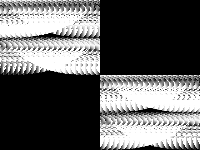 |
 |
 |
| 988 | woodlands09 [MIPLIB] | George Fonseca | Educational timetabling problems from several real schools/universities around the world. These instances were originally expressed in the xhstt file format [1] and formulated as Integer Programming models as described at [2]. | timetabling |  |
 |
 |
 |
| 989 | xmas10 [MIPLIB] | Simon Felix | An ILP formulation of\xa0an FHNW puzzle (a mix of longest path and a flow problem). | - |  |
 |
 |
 |
| 990 | xmas10-2 [MIPLIB] | Simon Felix | Another formulation of\xa0an FHNW puzzle (Mix of longest path and flow problem) (Known bounds:\xa0497-511) | - |  |
 |
 |
 |
| 991 | z26 [MIPLIB] | Daniel Bienstock | Set packing problem arising from the ongoing "Frequency Spectrum Auction" in the U.S. Work is collaboration with Ion Media Networks, Inc. | - |  |
 |
 |
 |
| 992 | zeil [MIPLIB] | Andreas Bärmann | A model that computes an optimal adaptation of a given timetable draft for a small portion of the German railway network. The aim is to shift the planned departure times of the trains slightly, such that the maximum power consumption (averaed over 15-minute intervalls of the planning horizon) is as small as possible. | - |  |
 |
 |
 |





